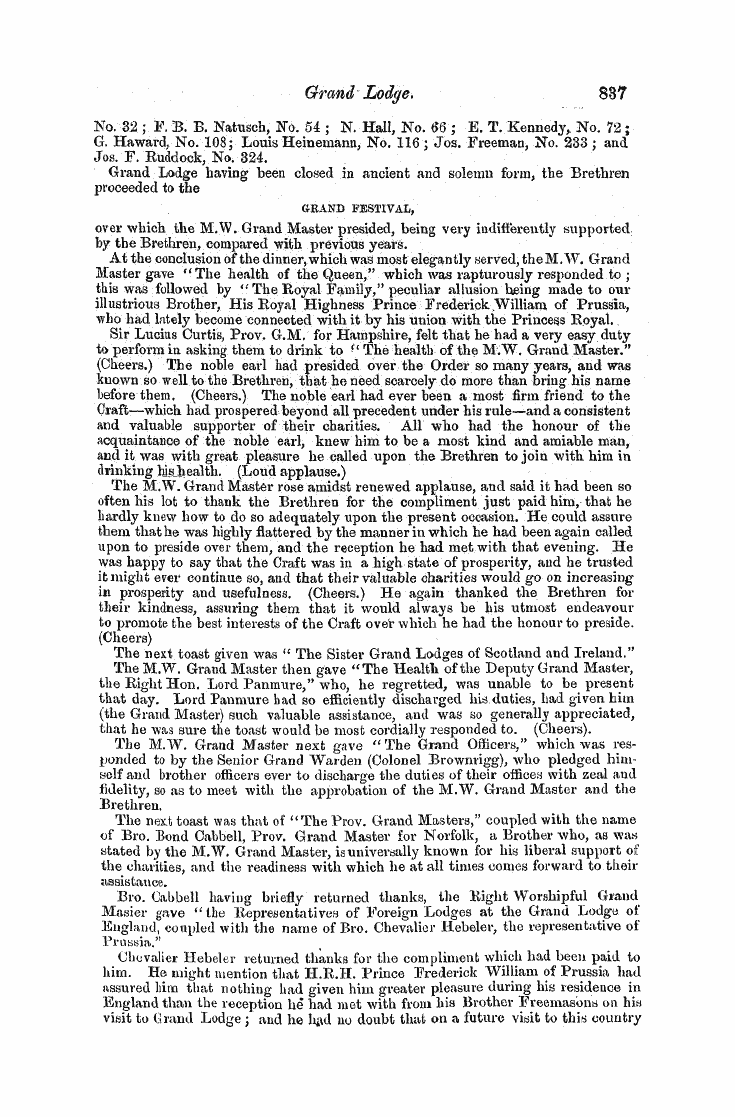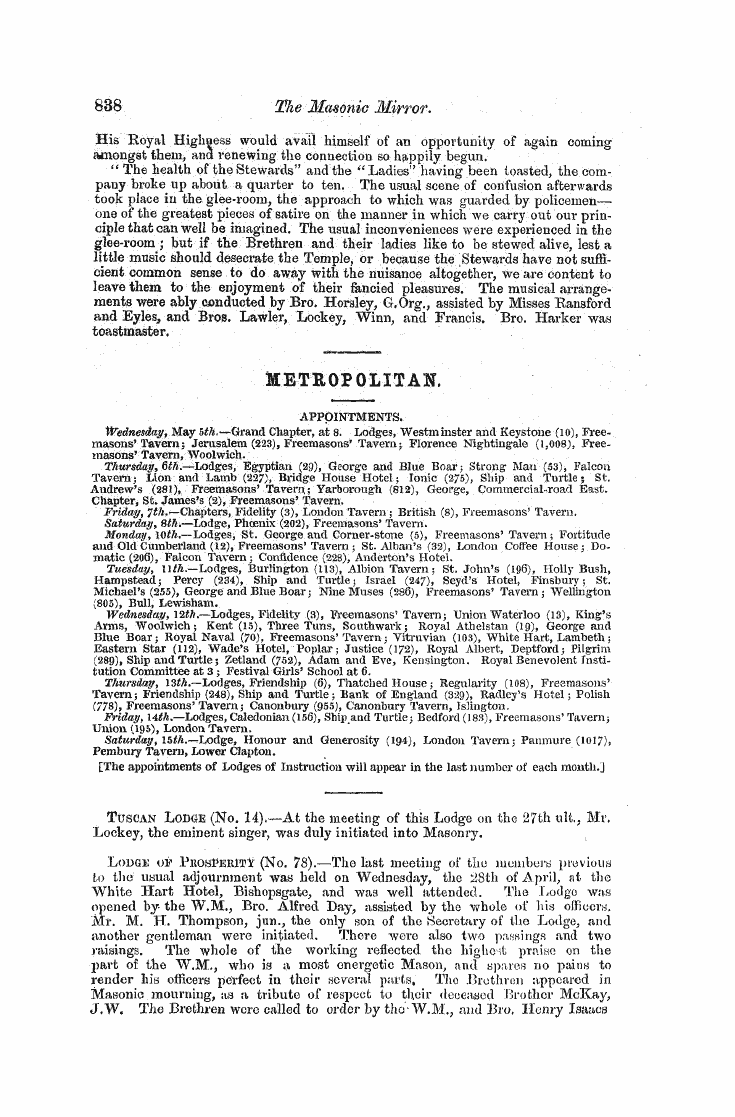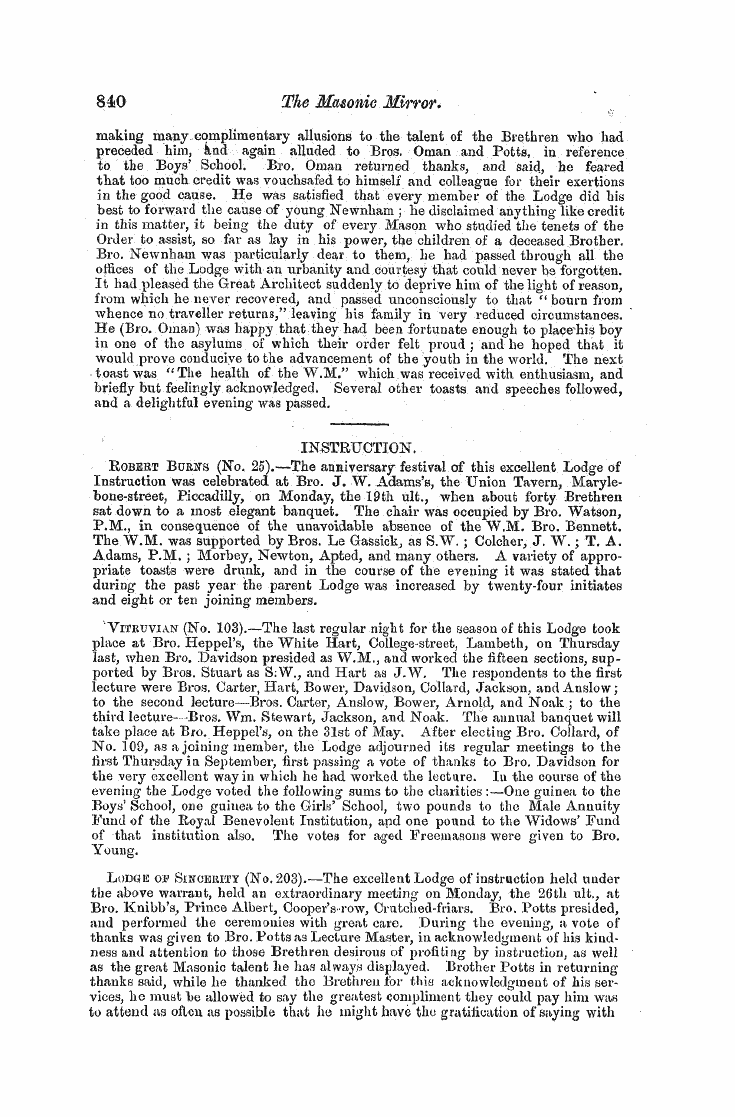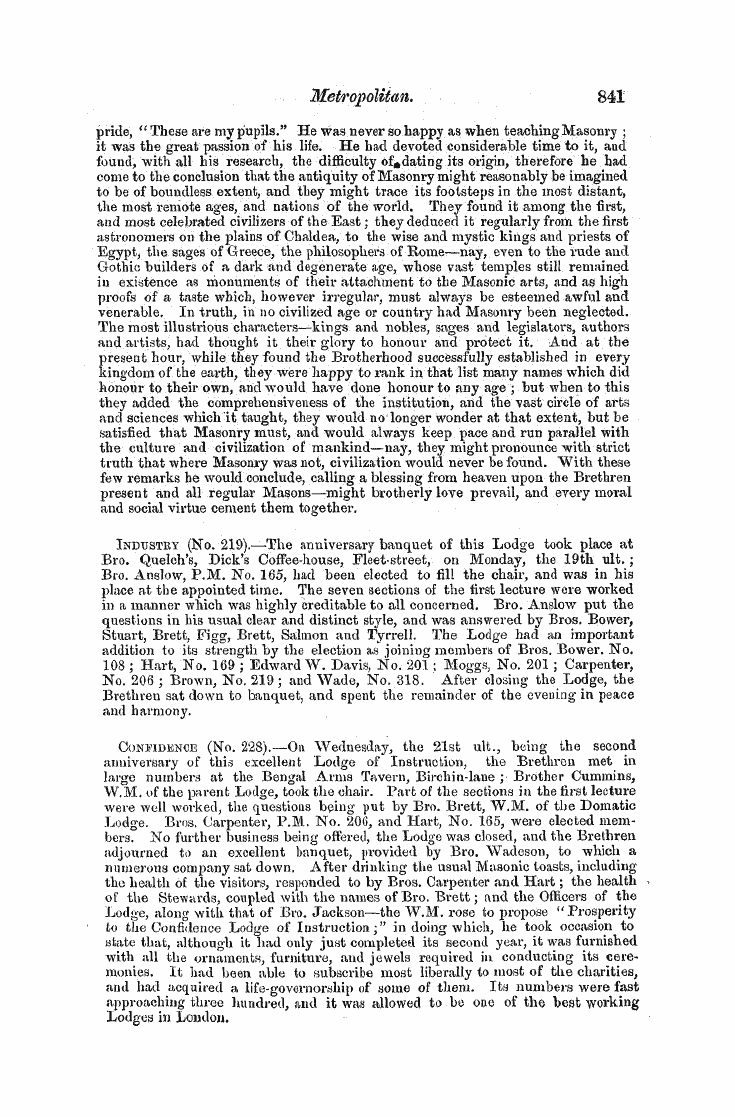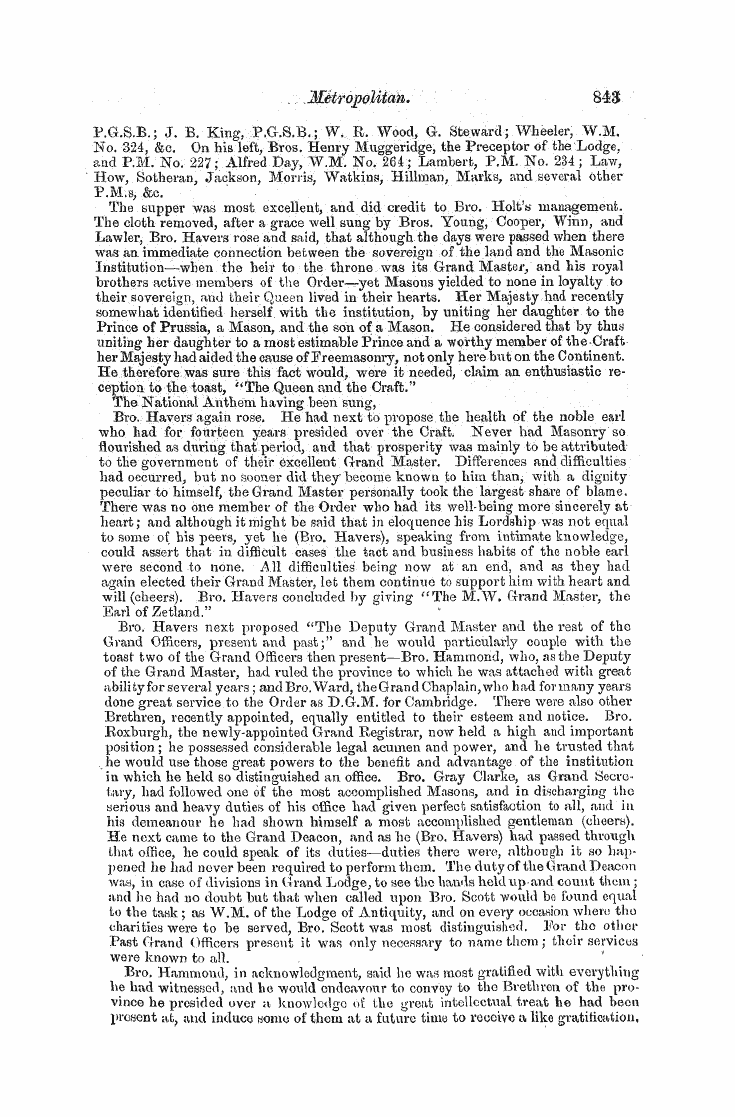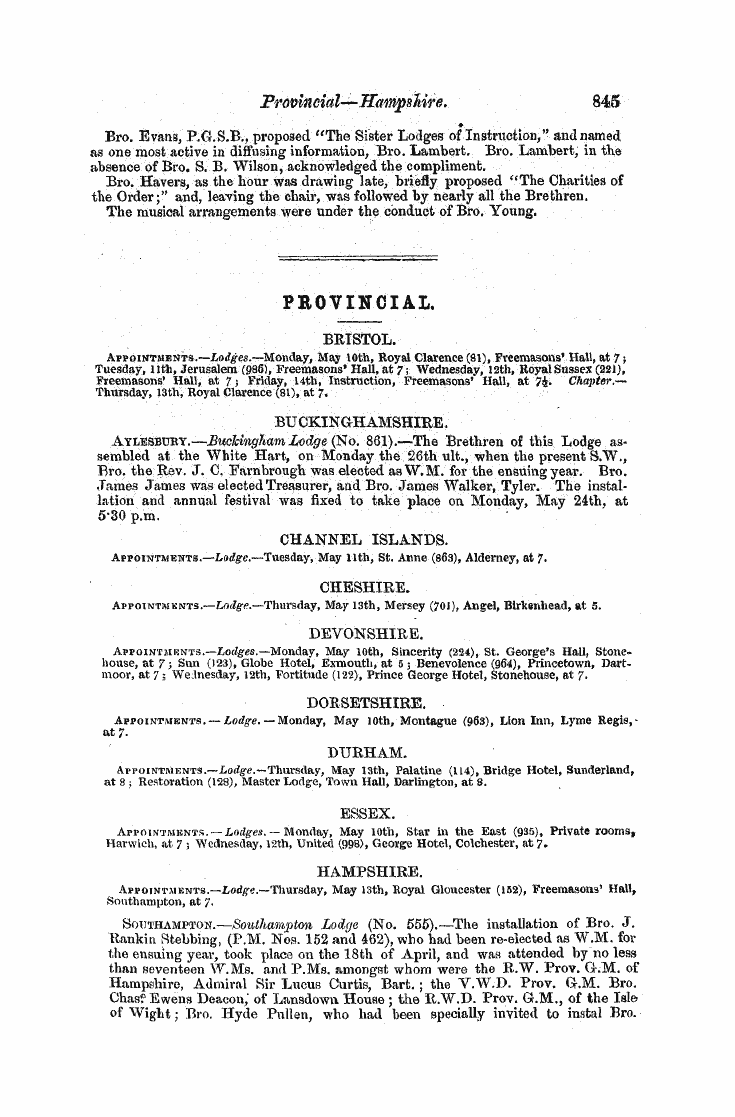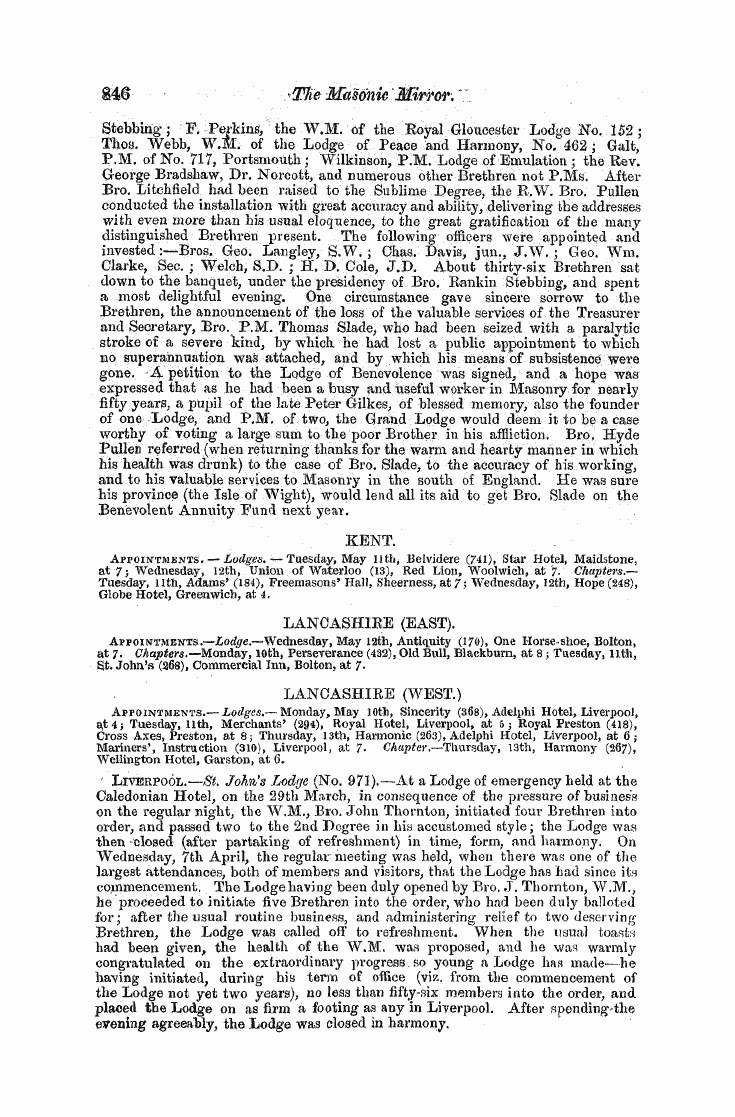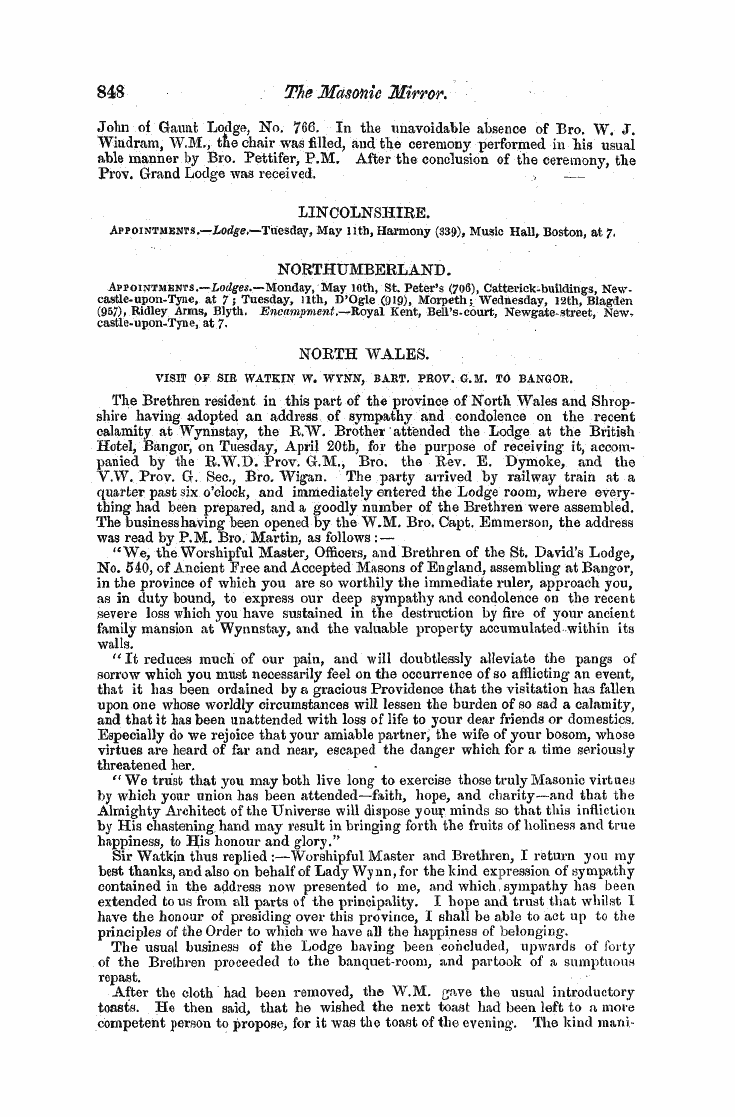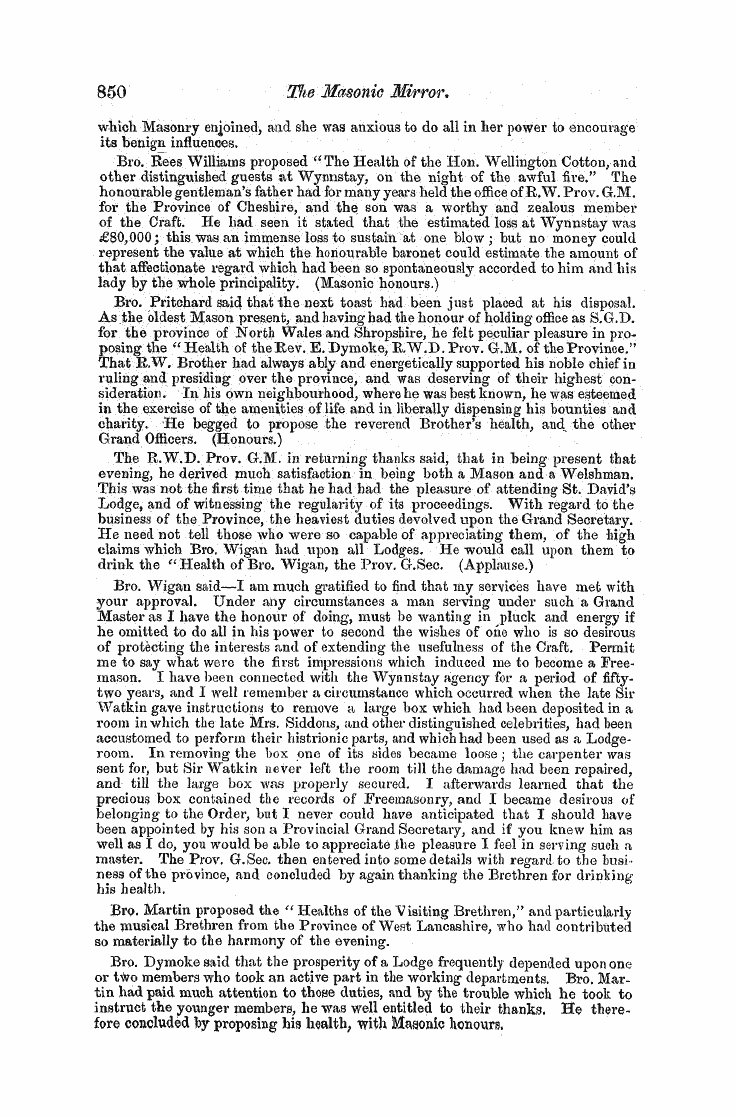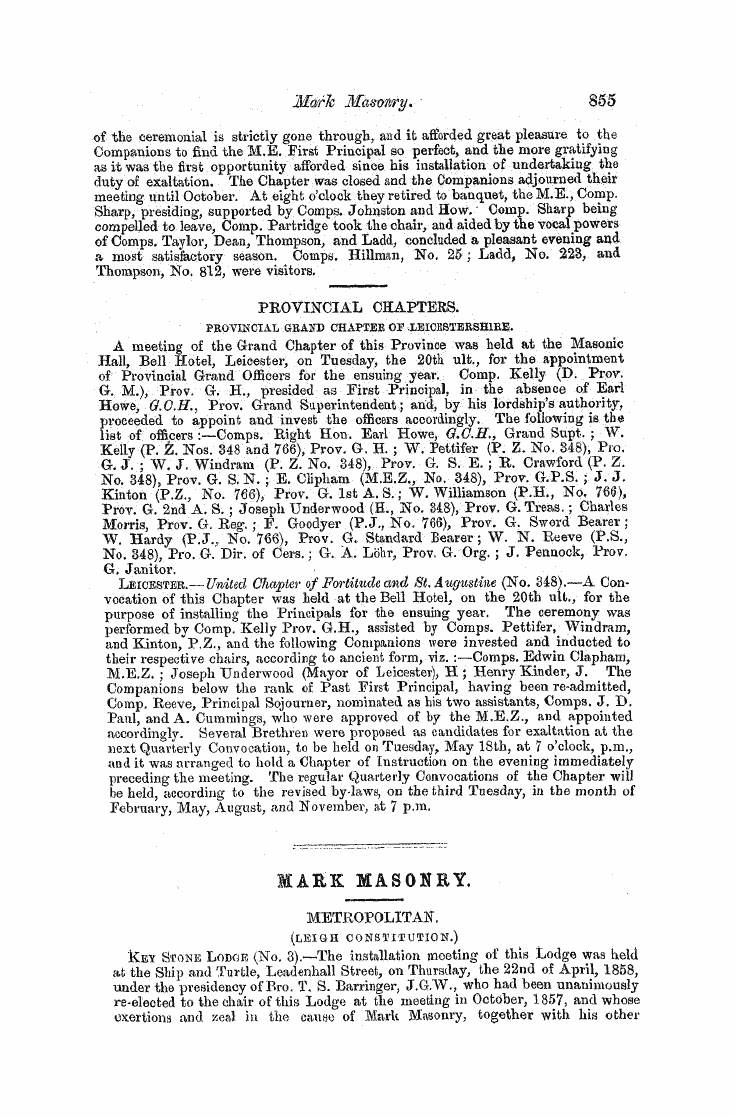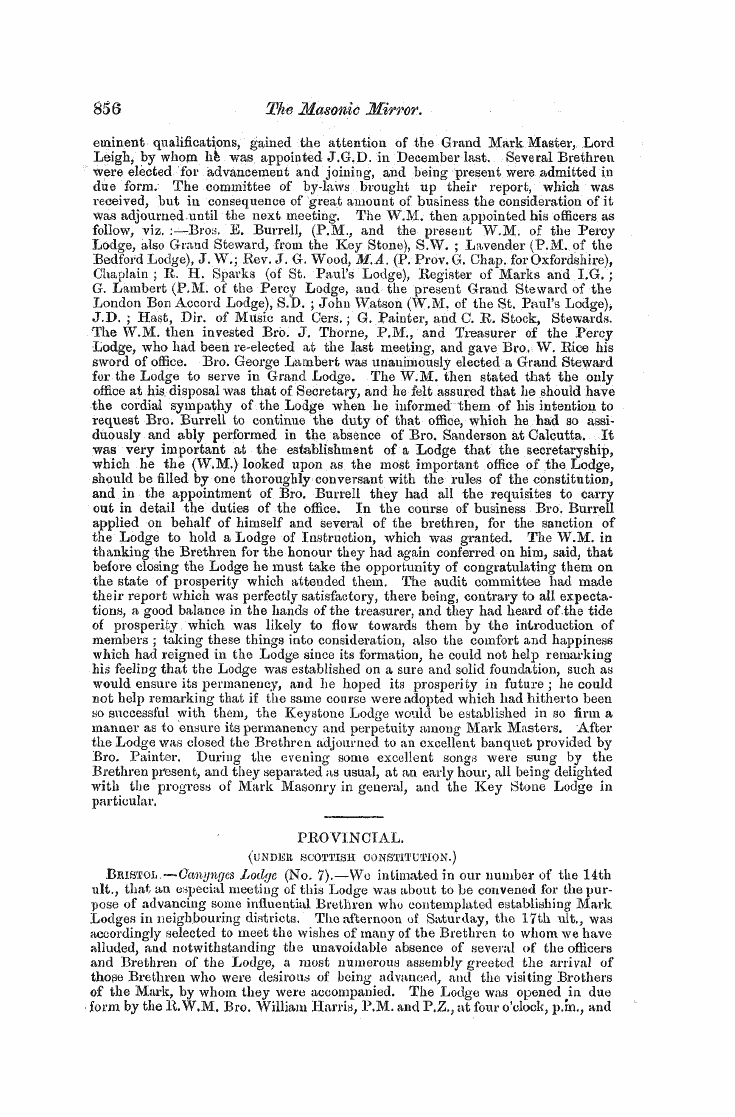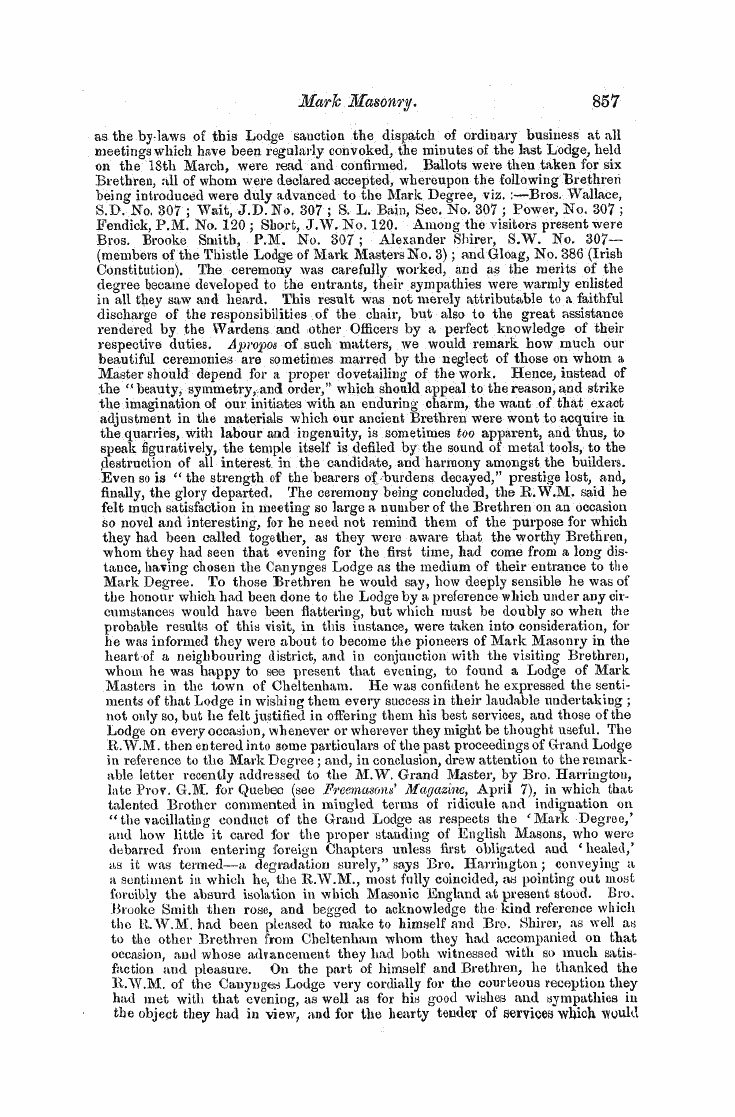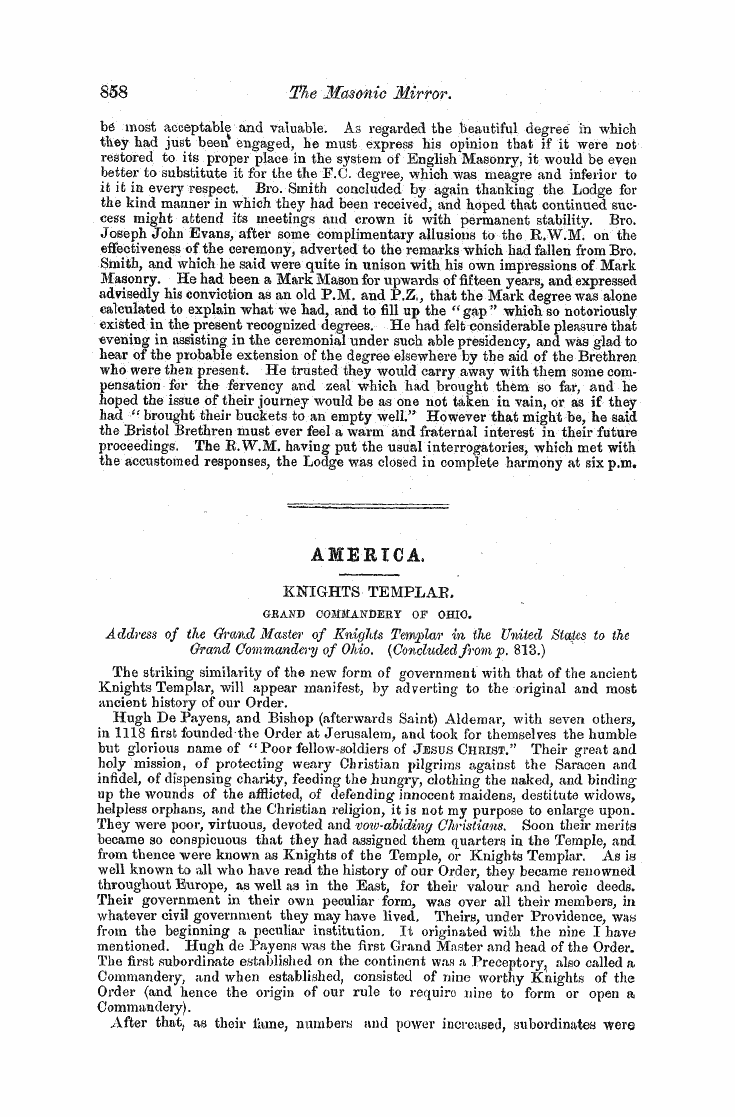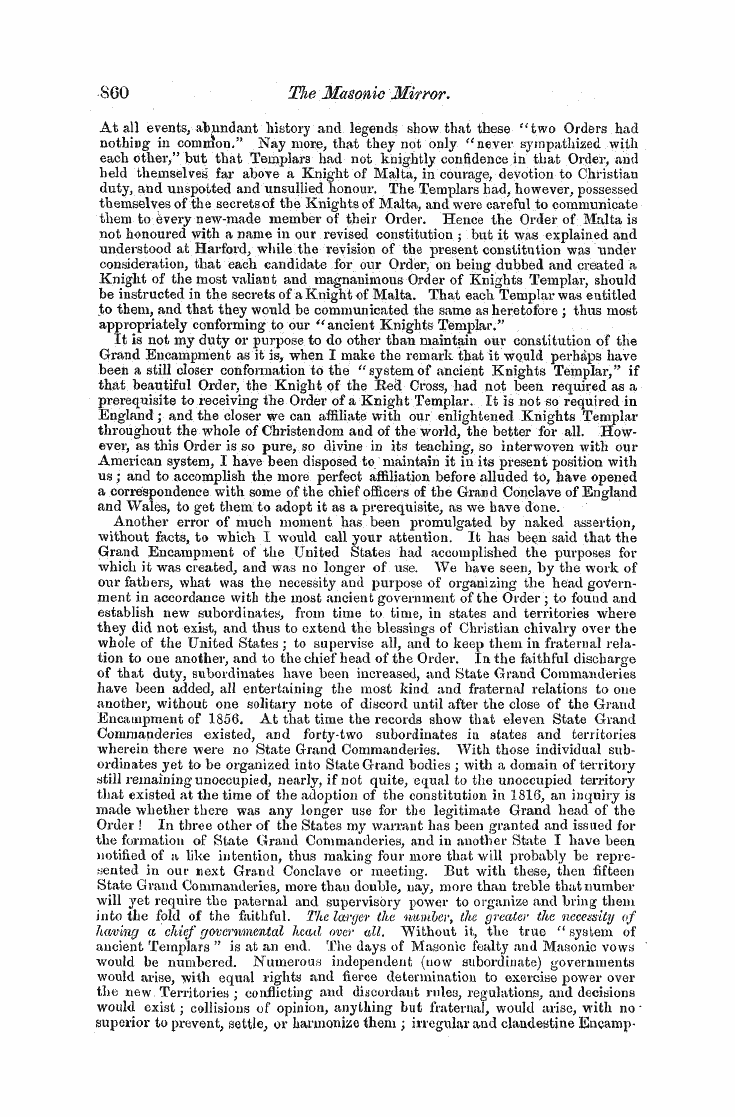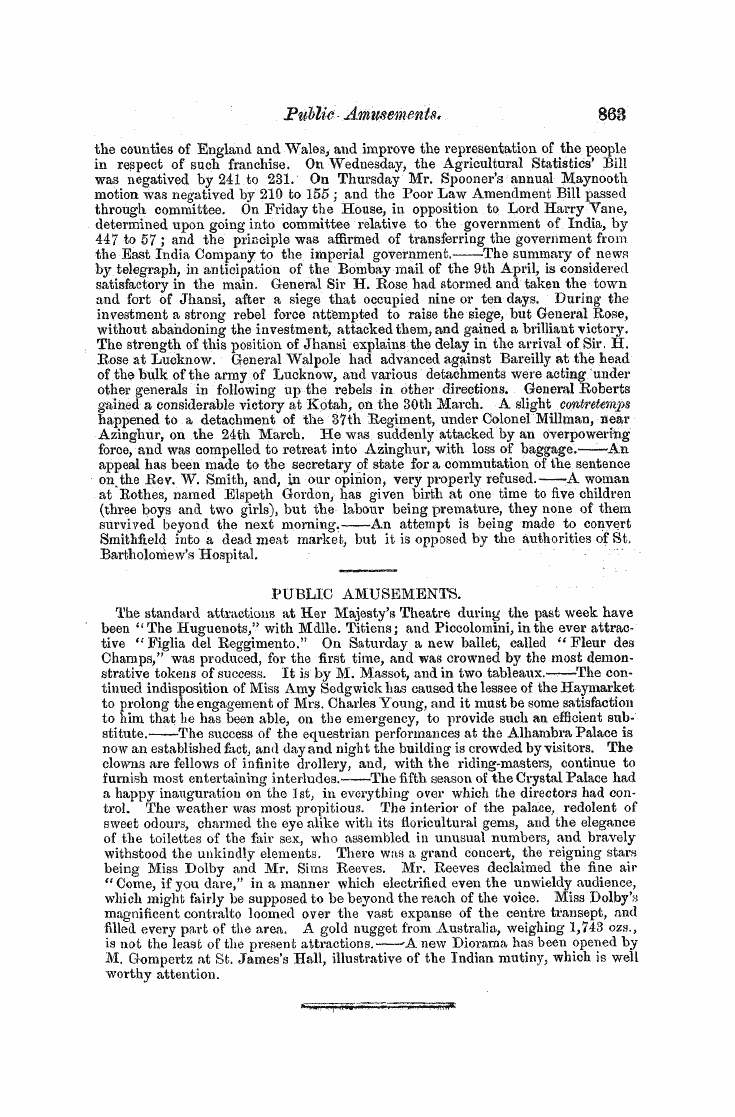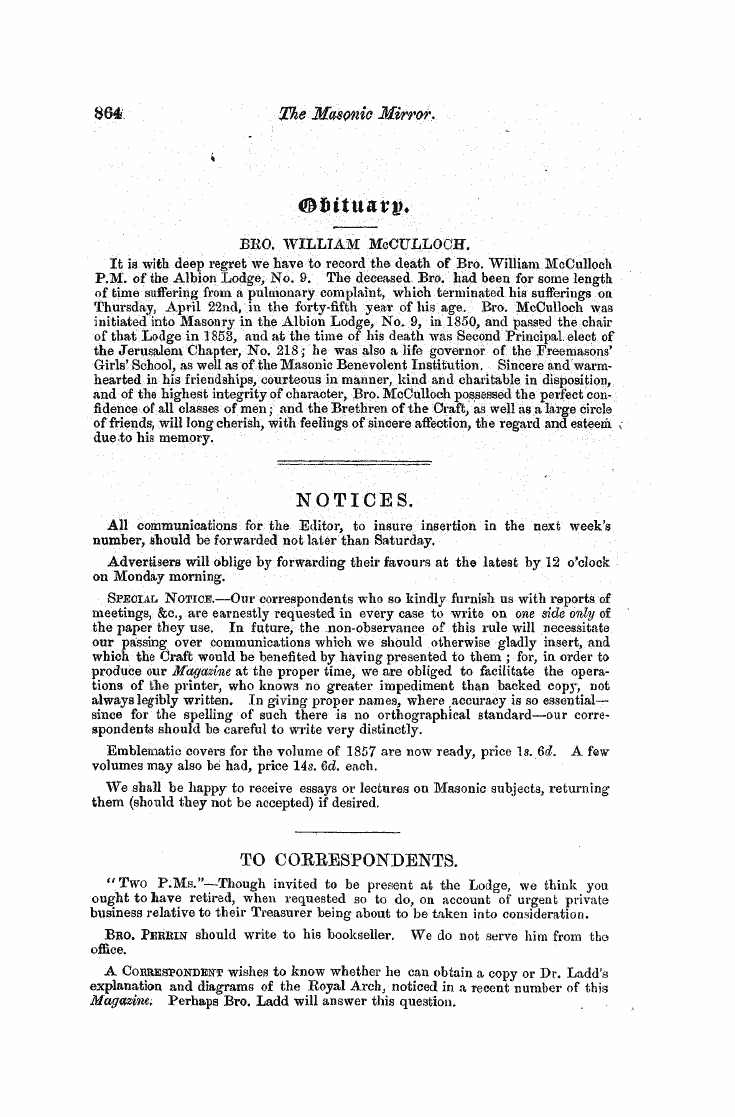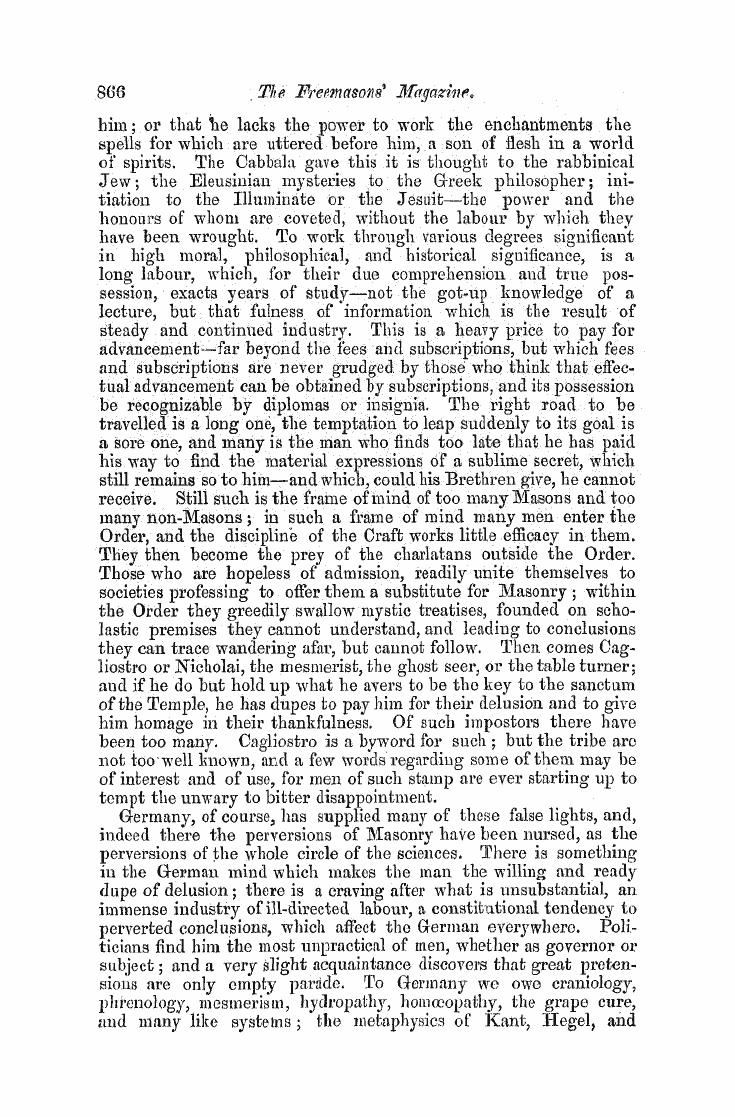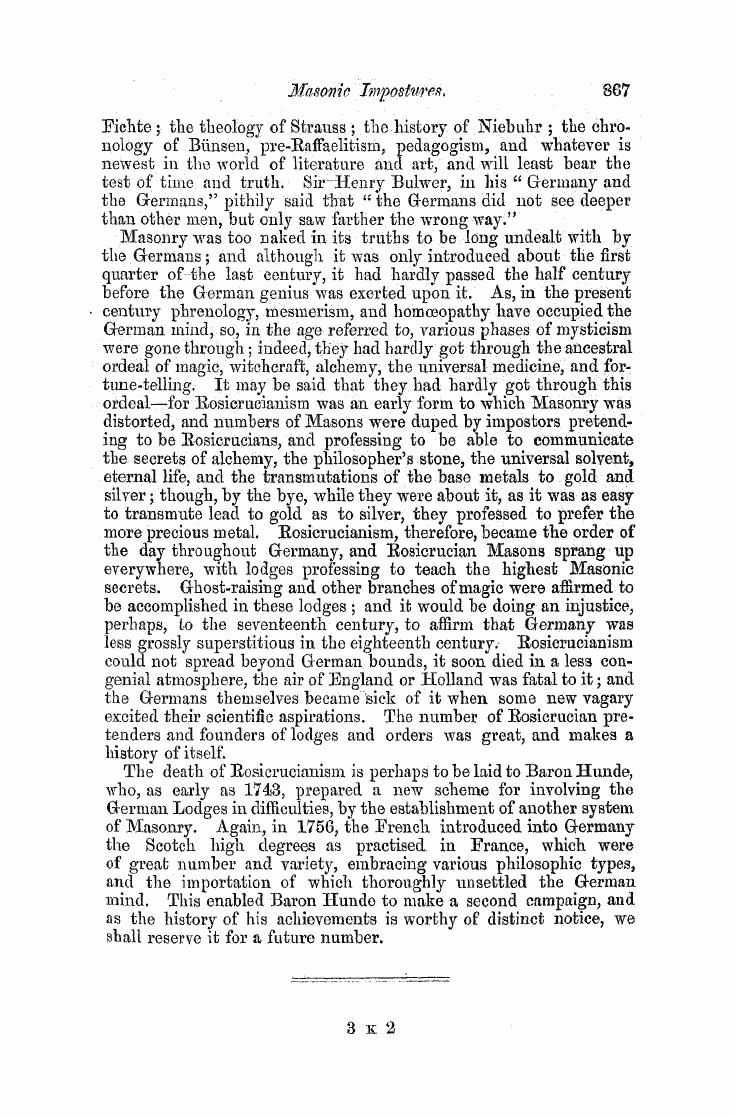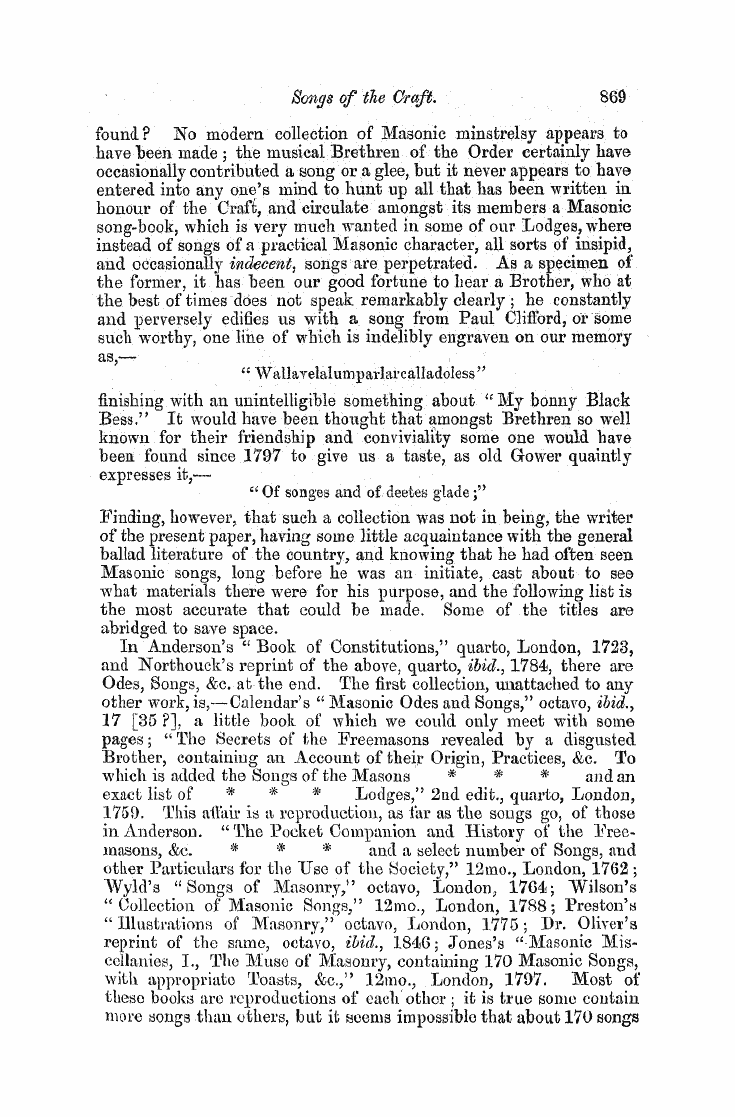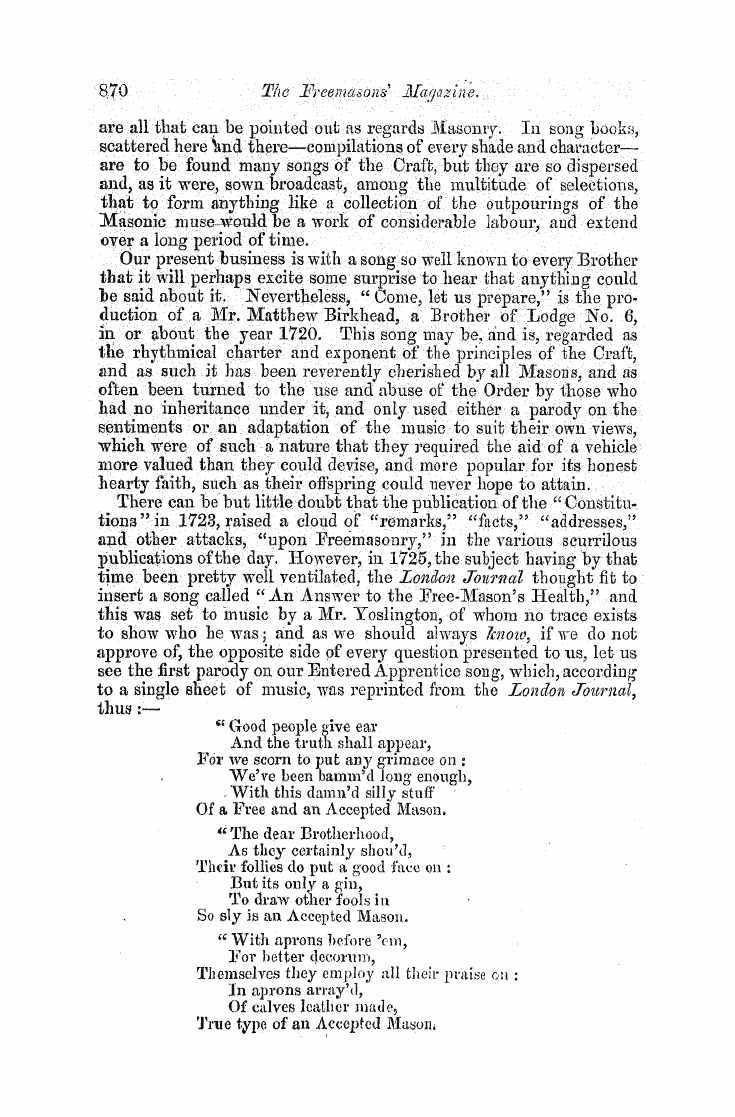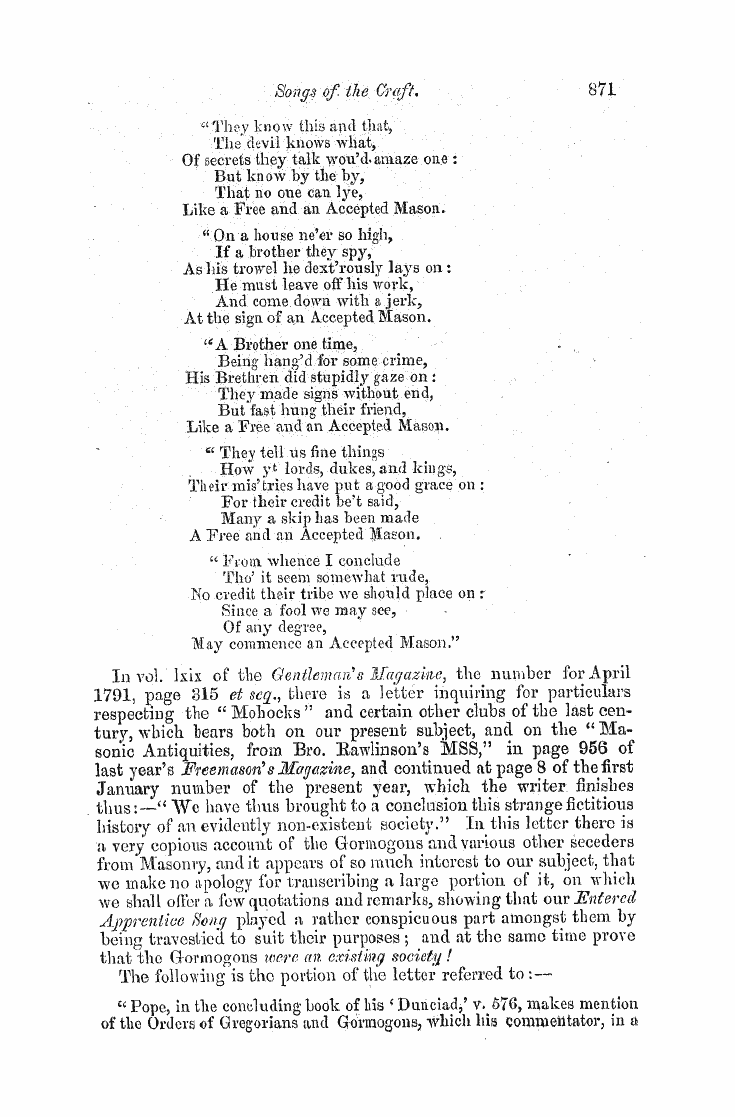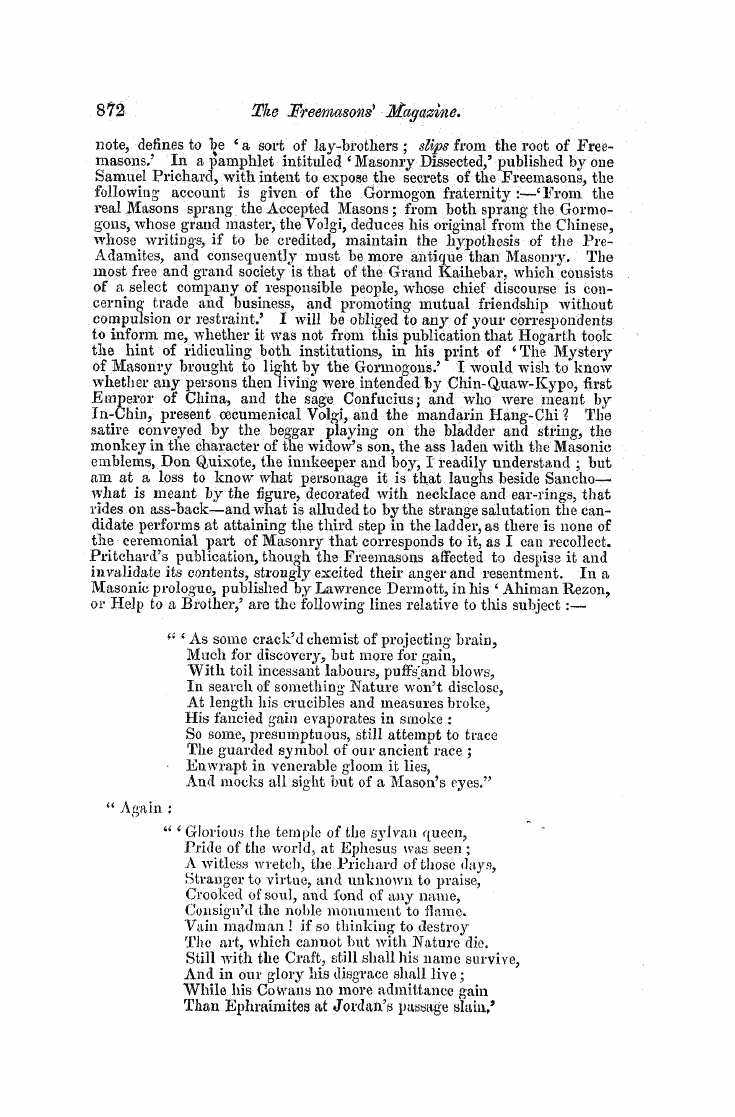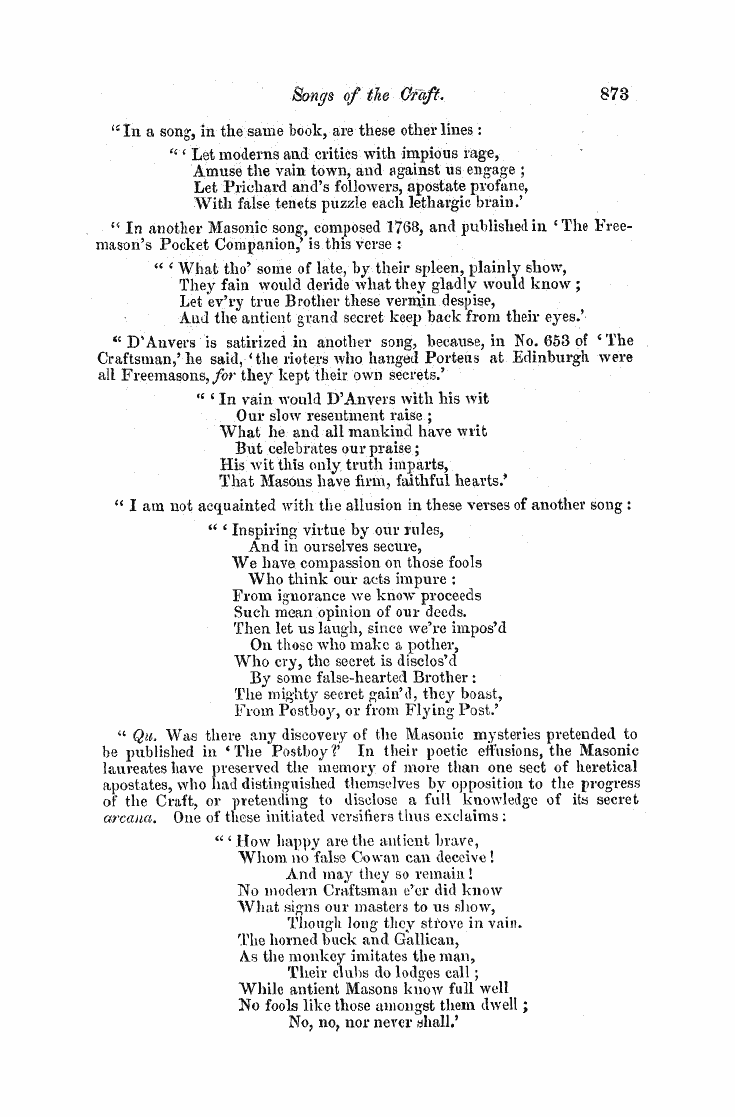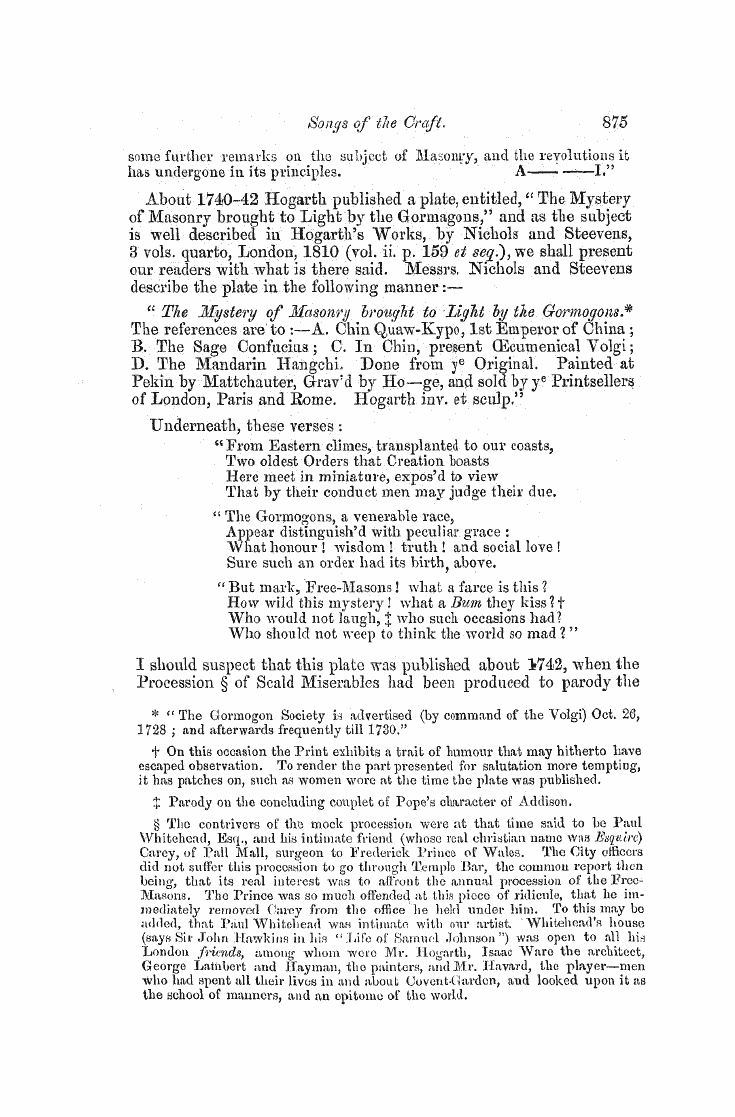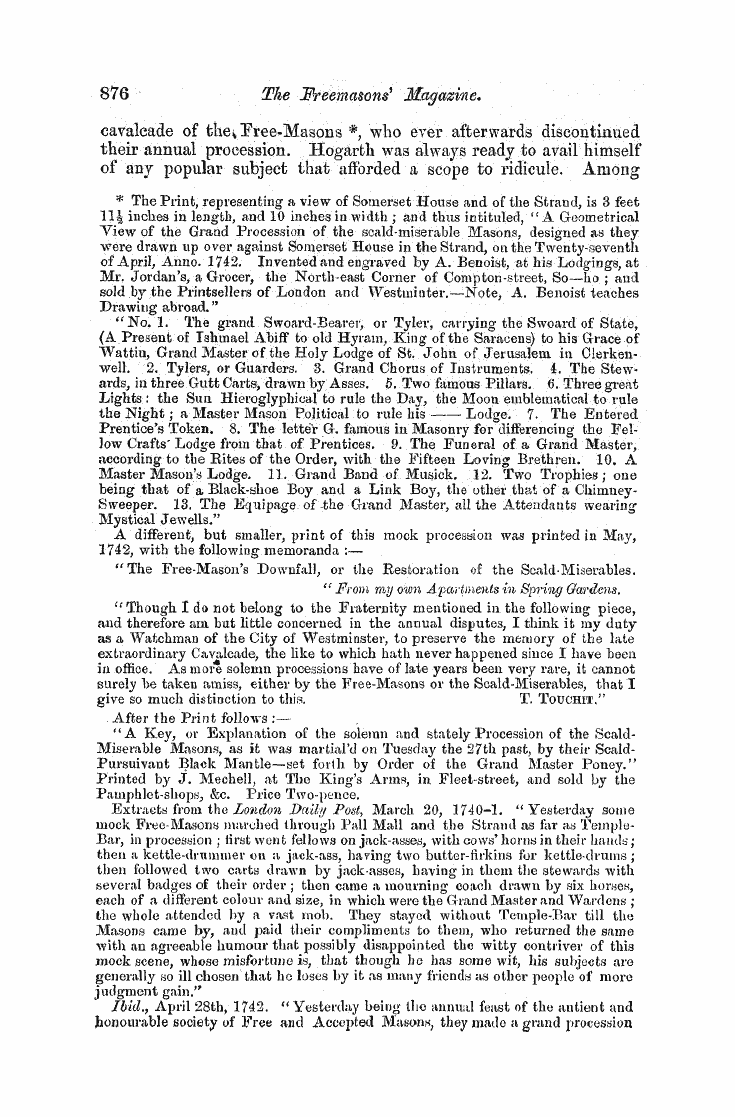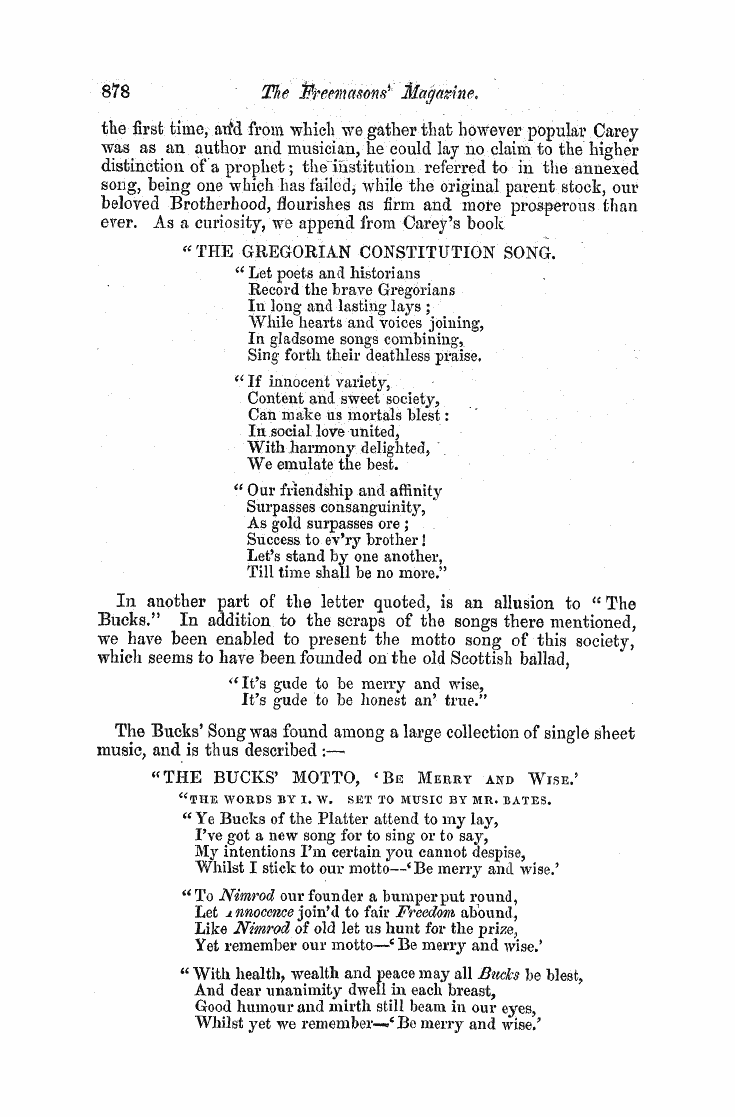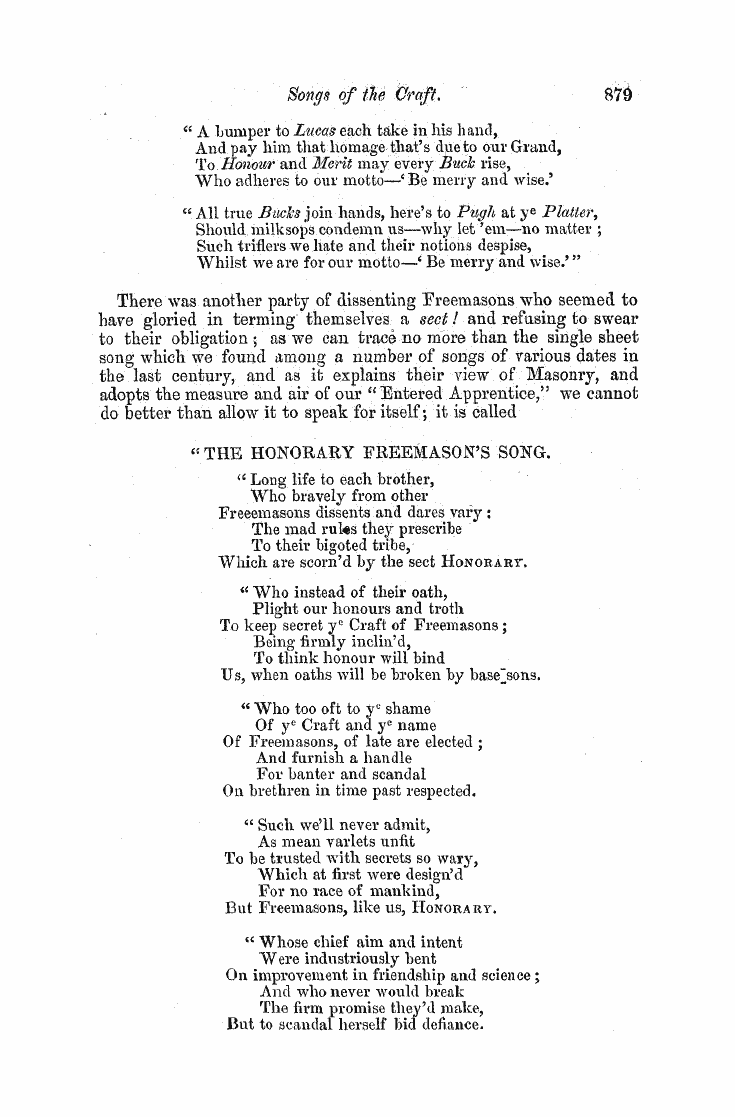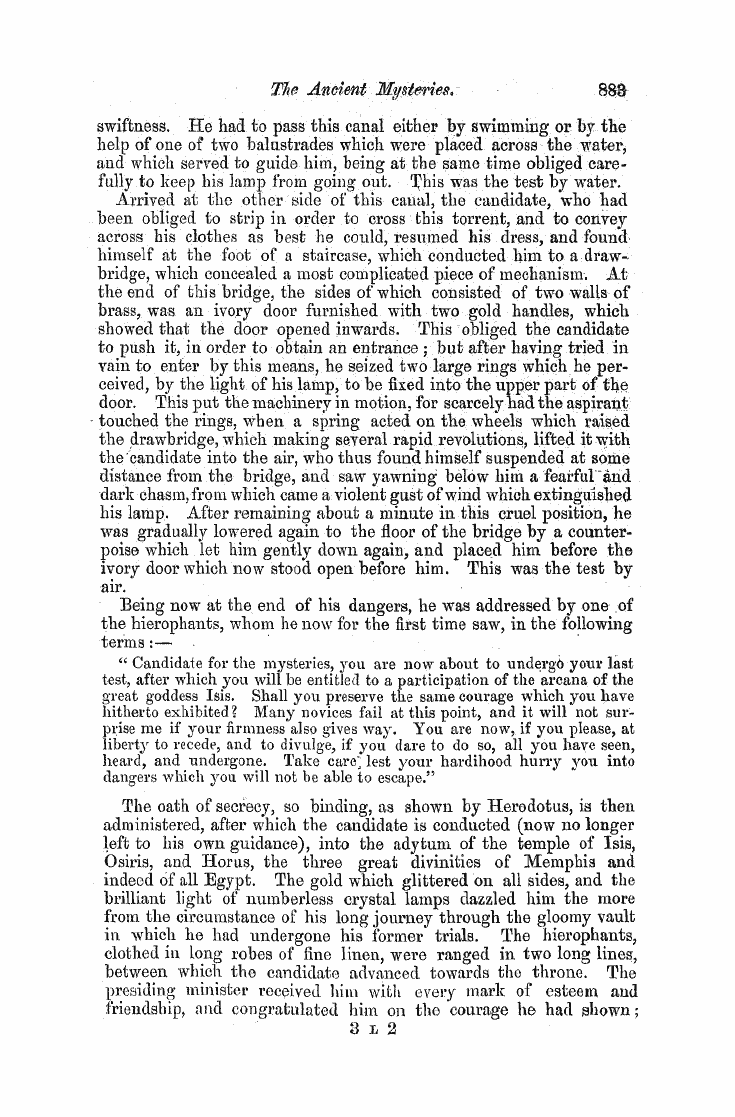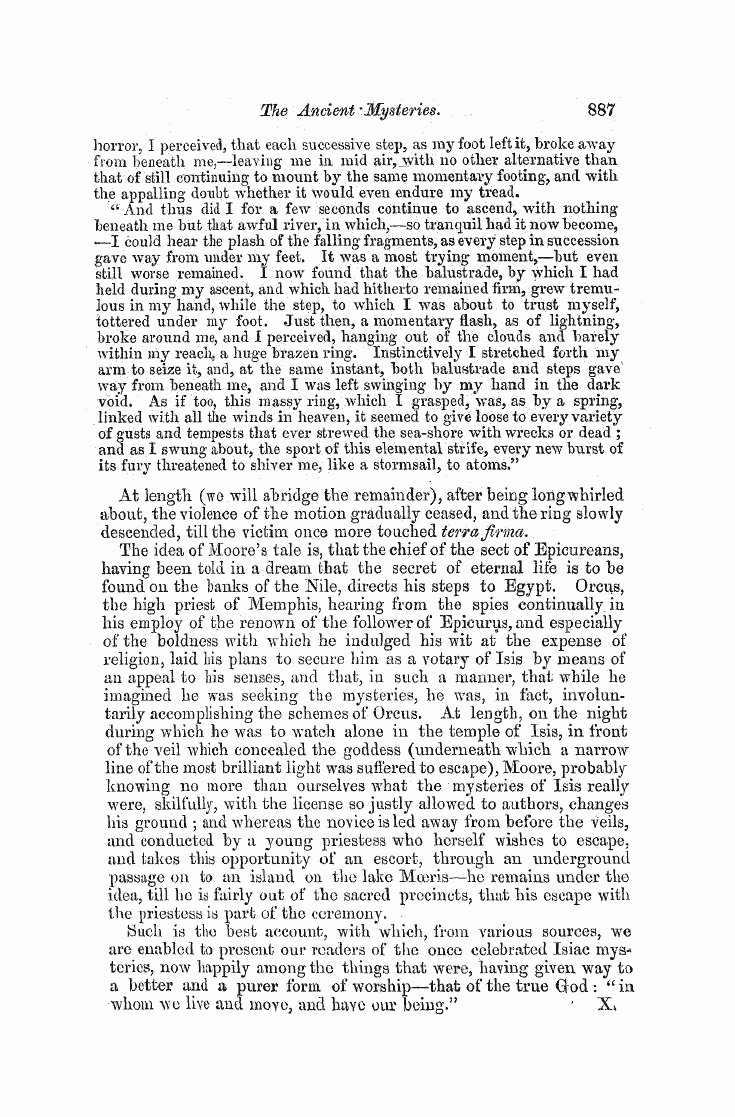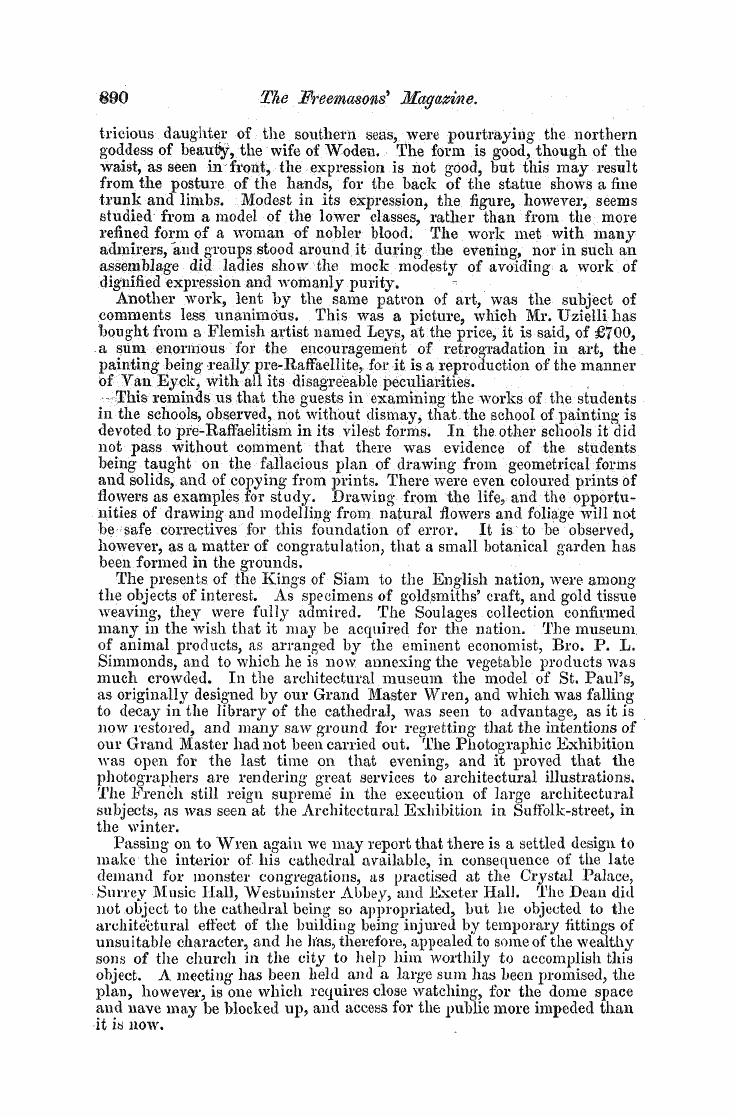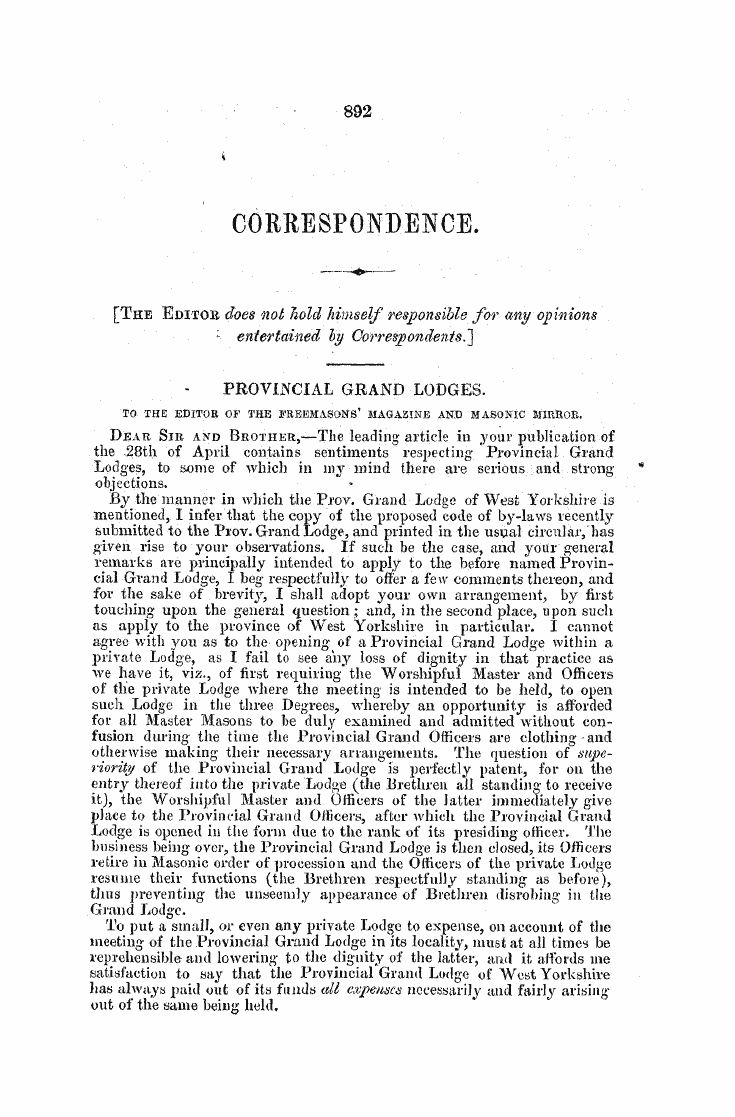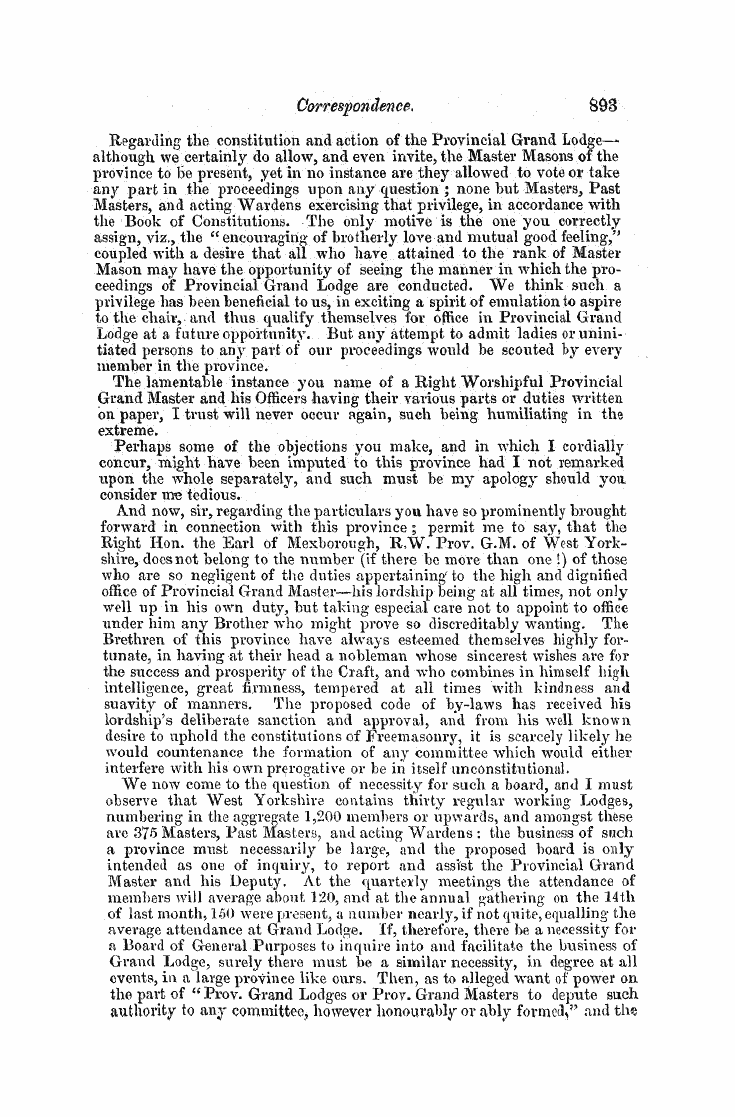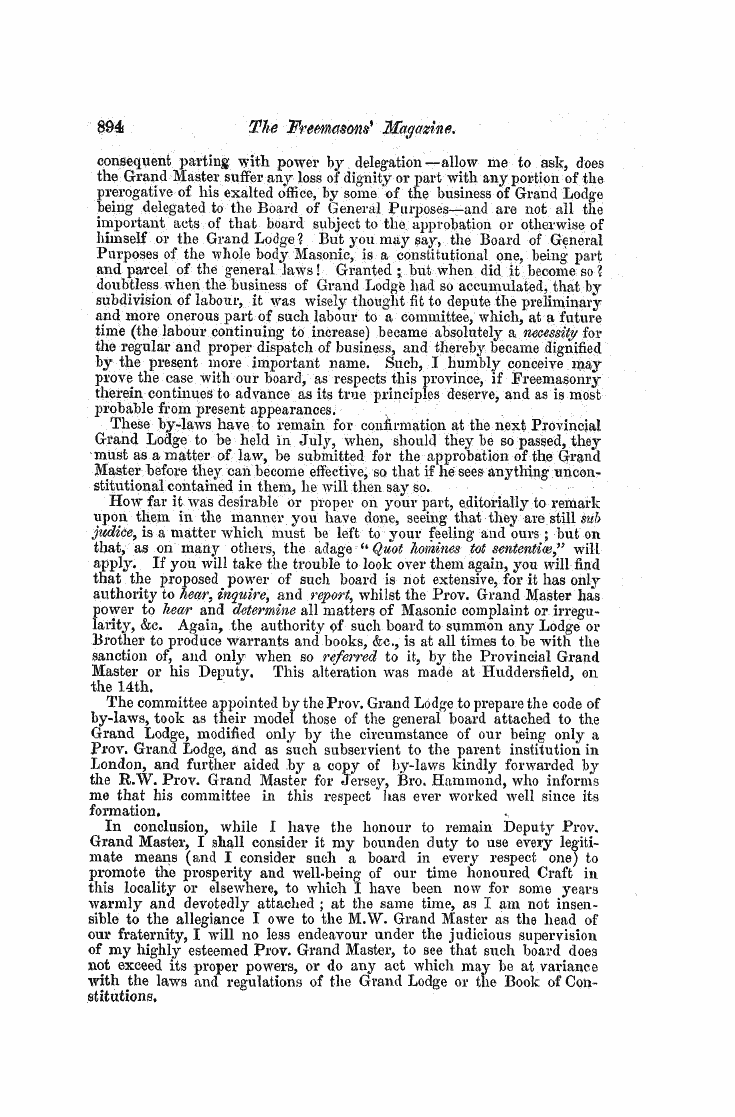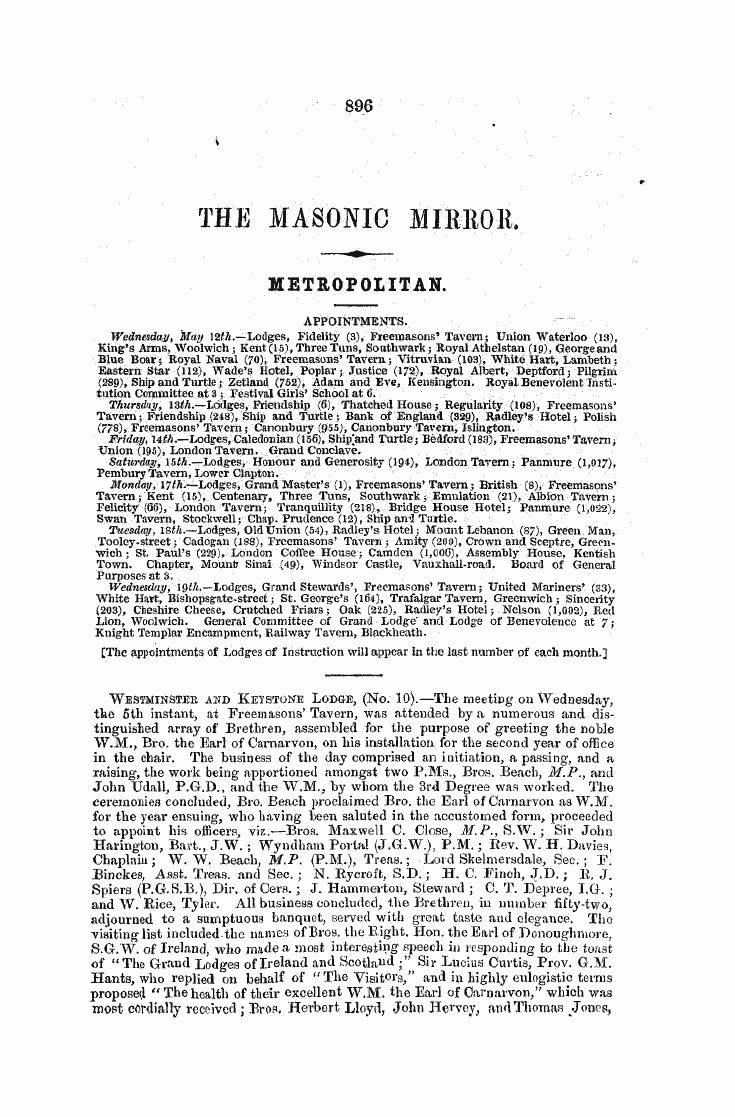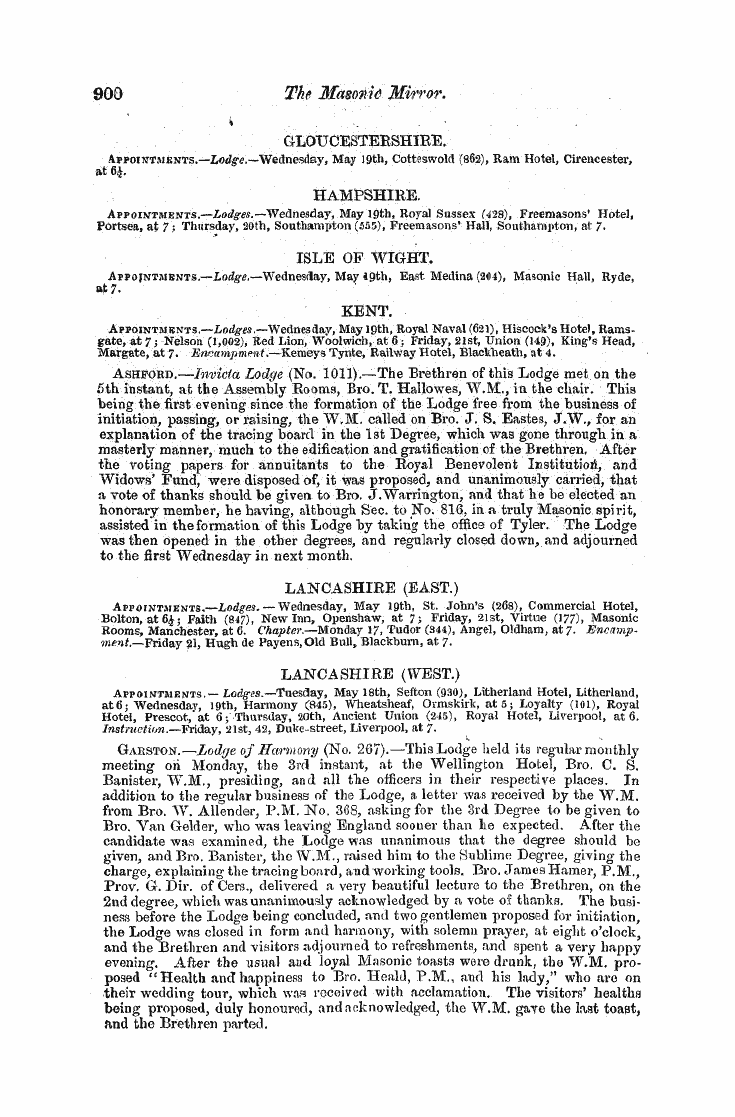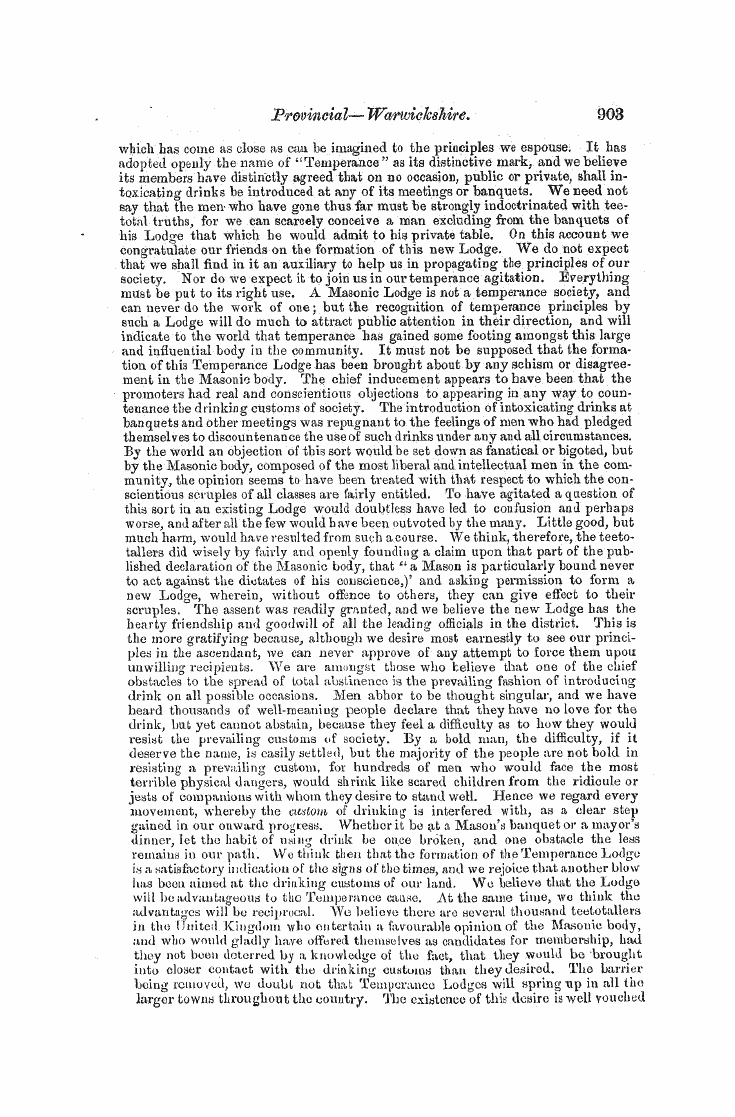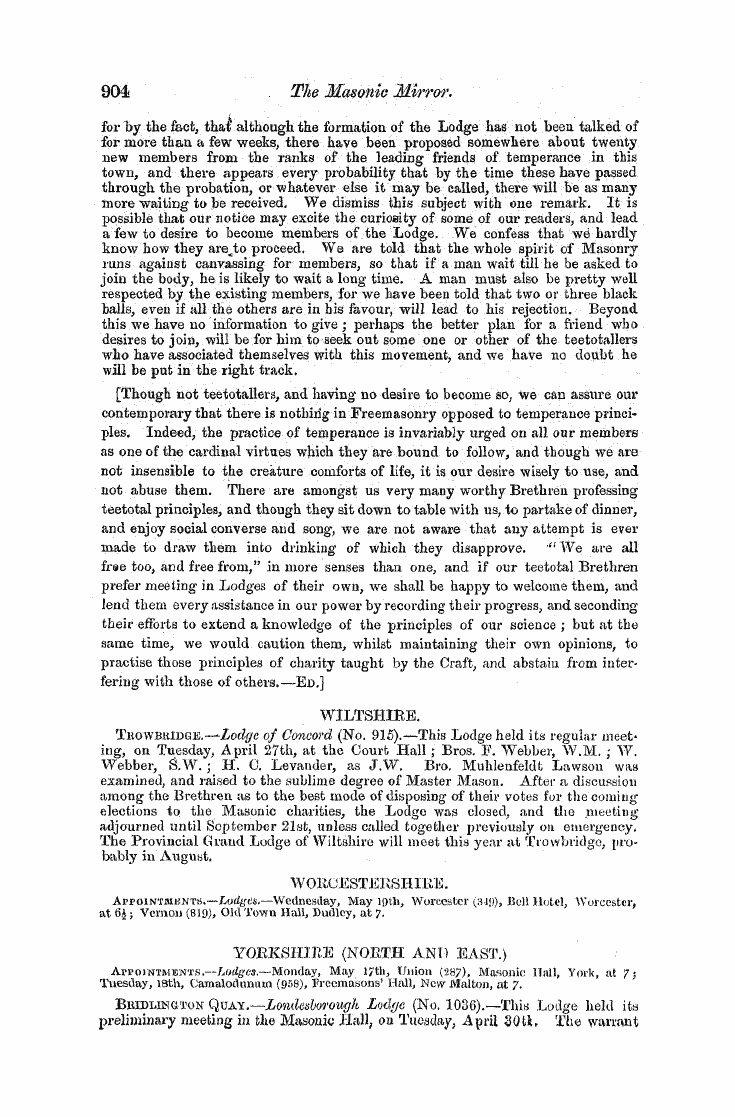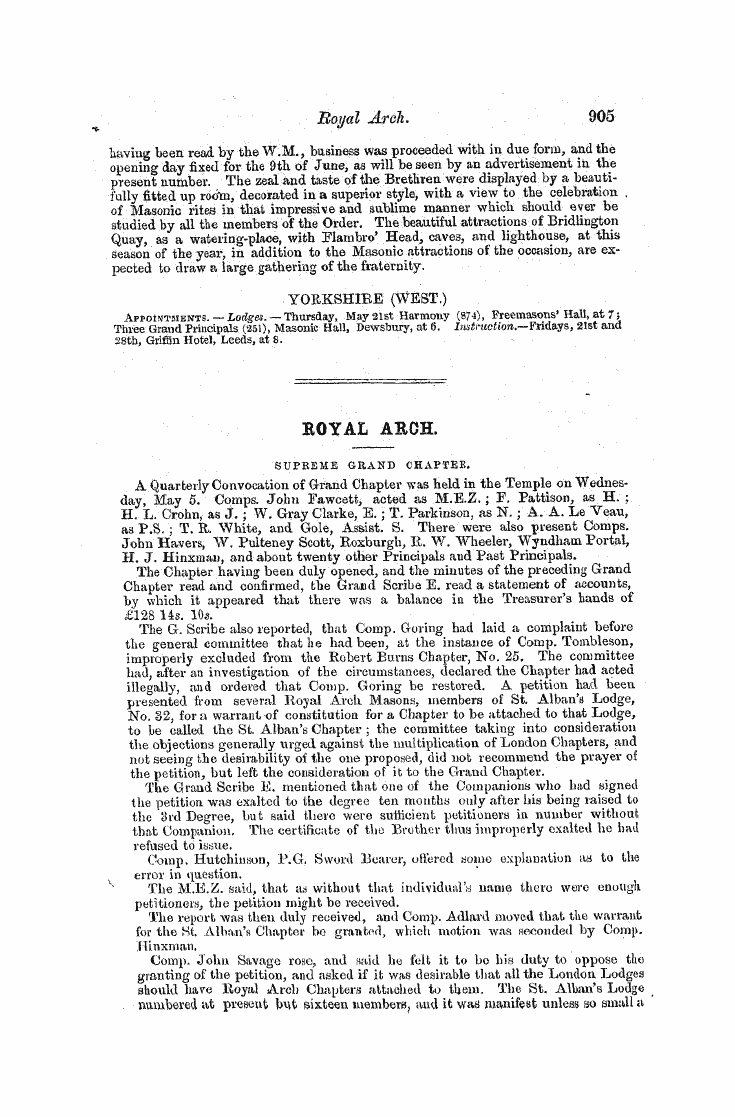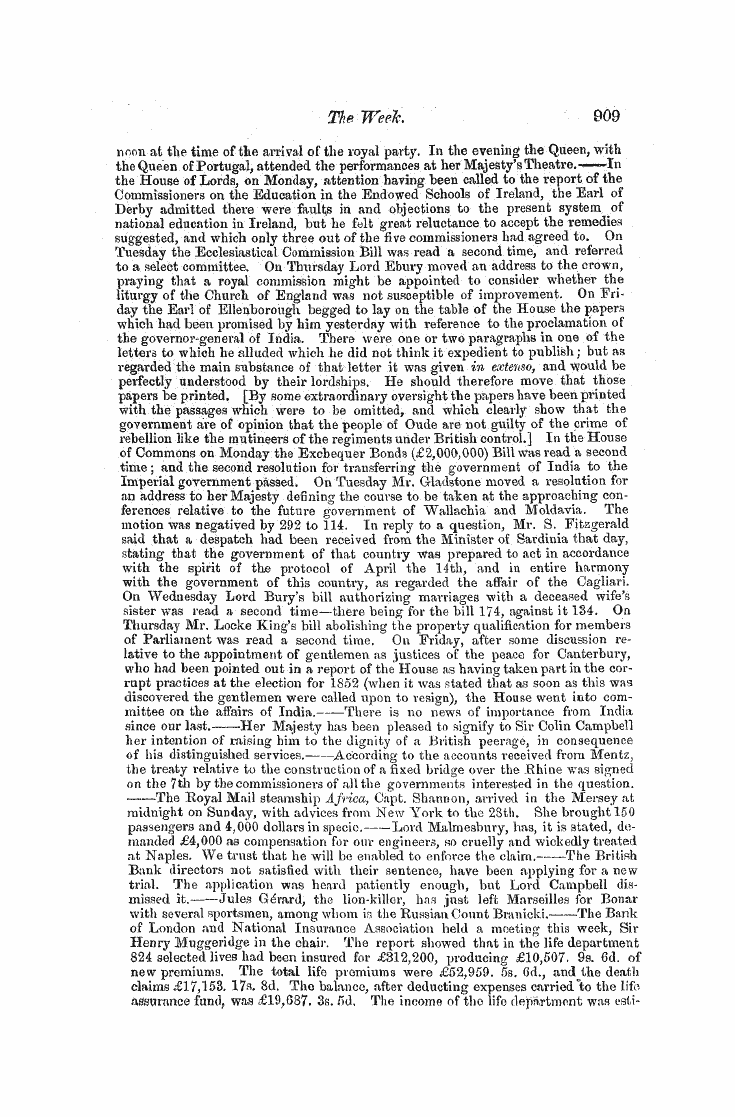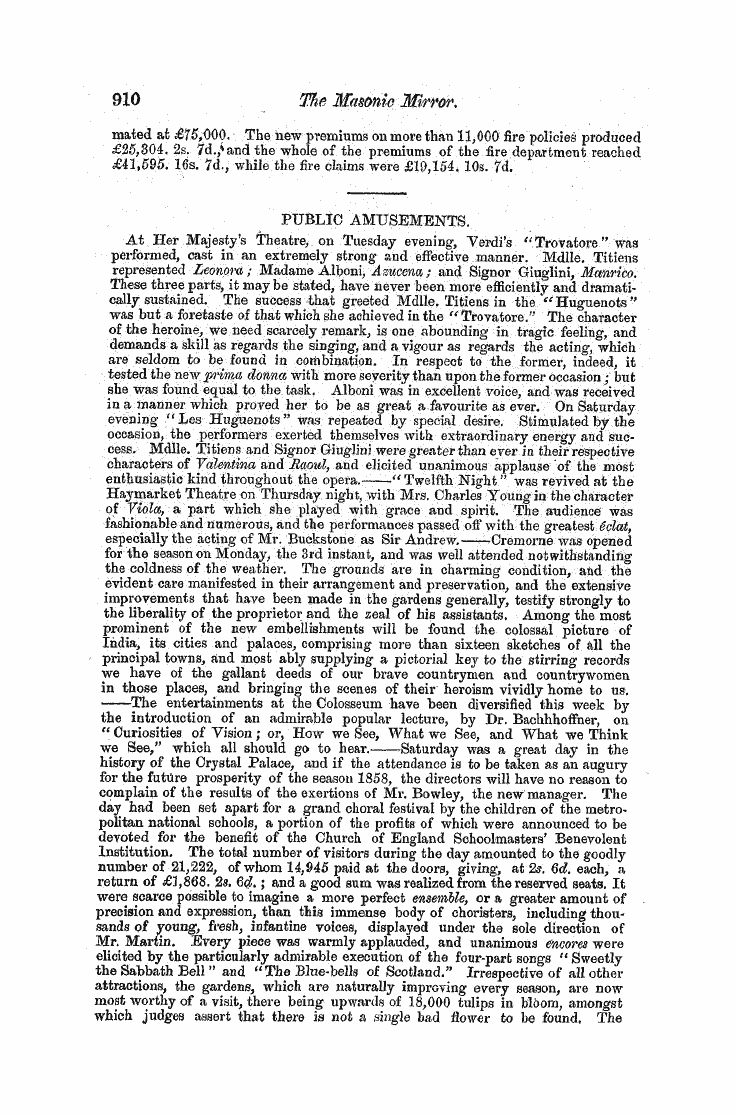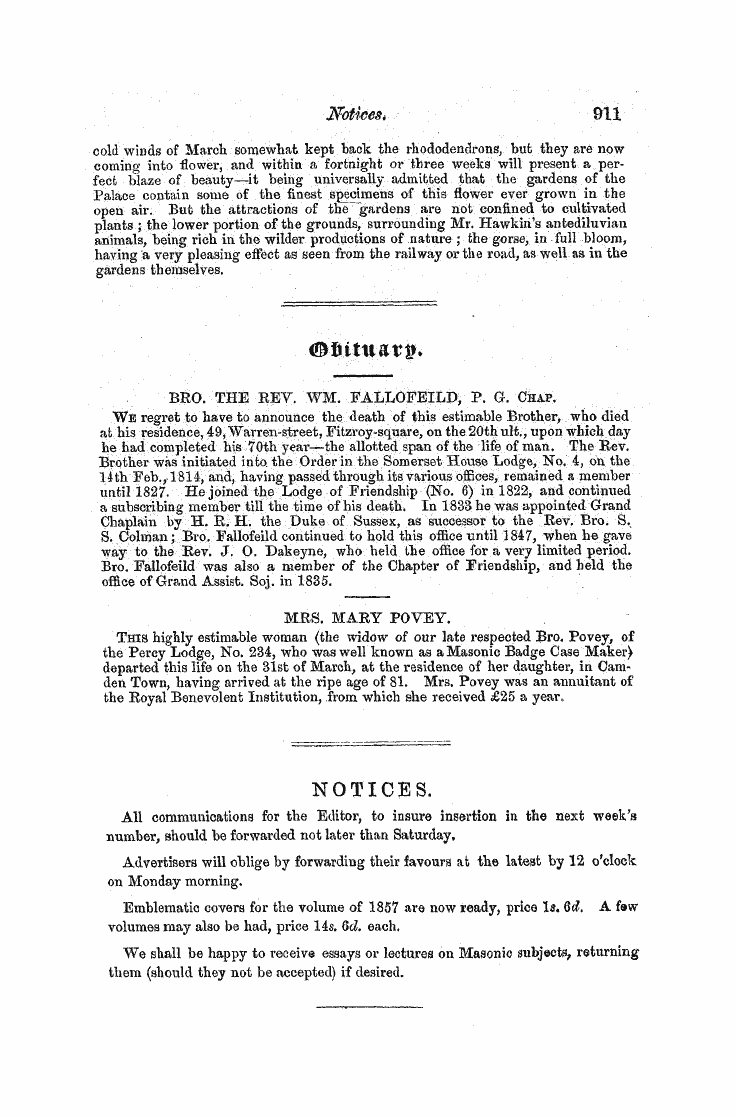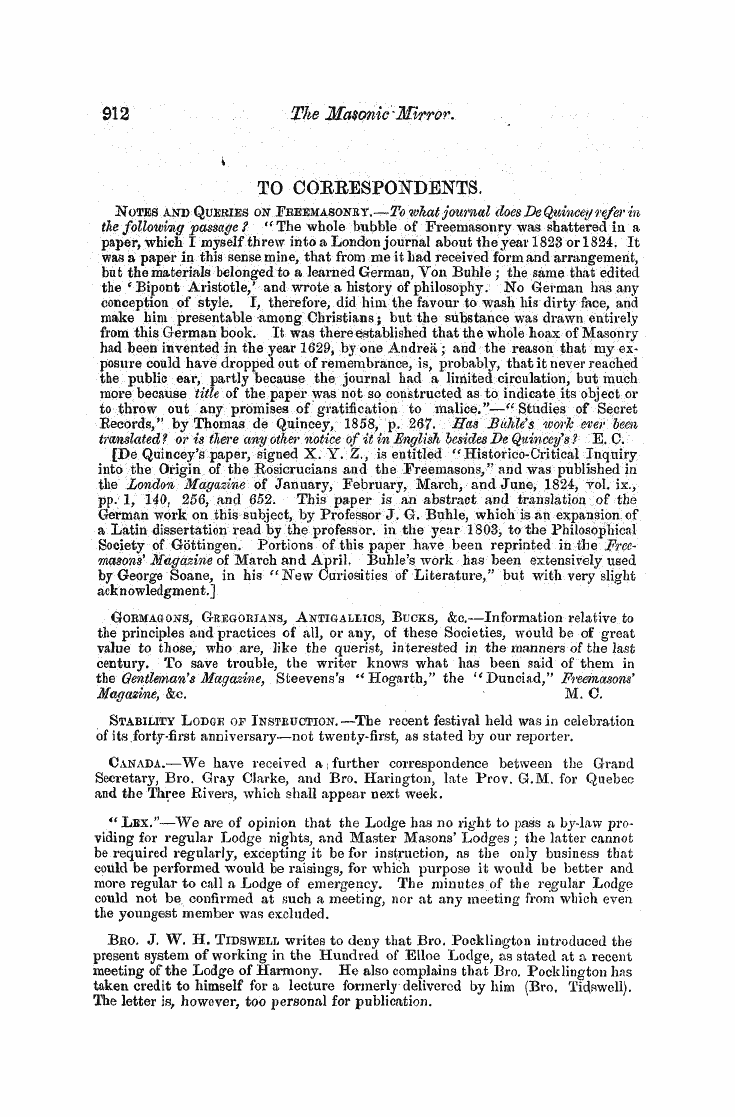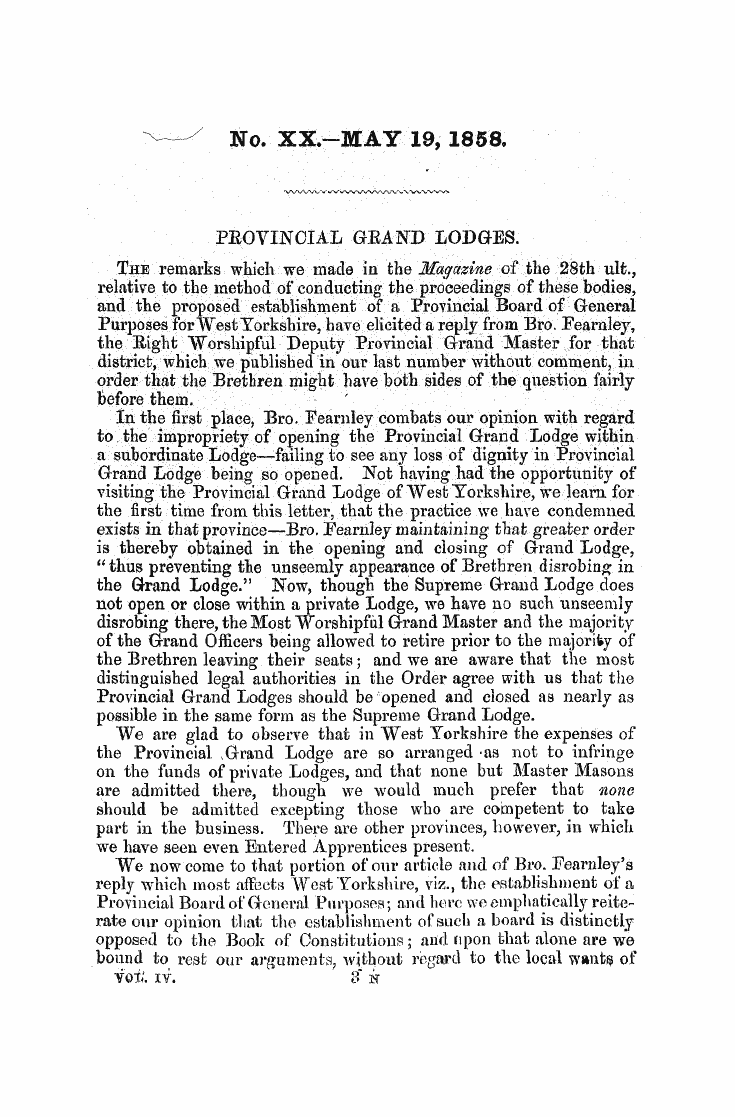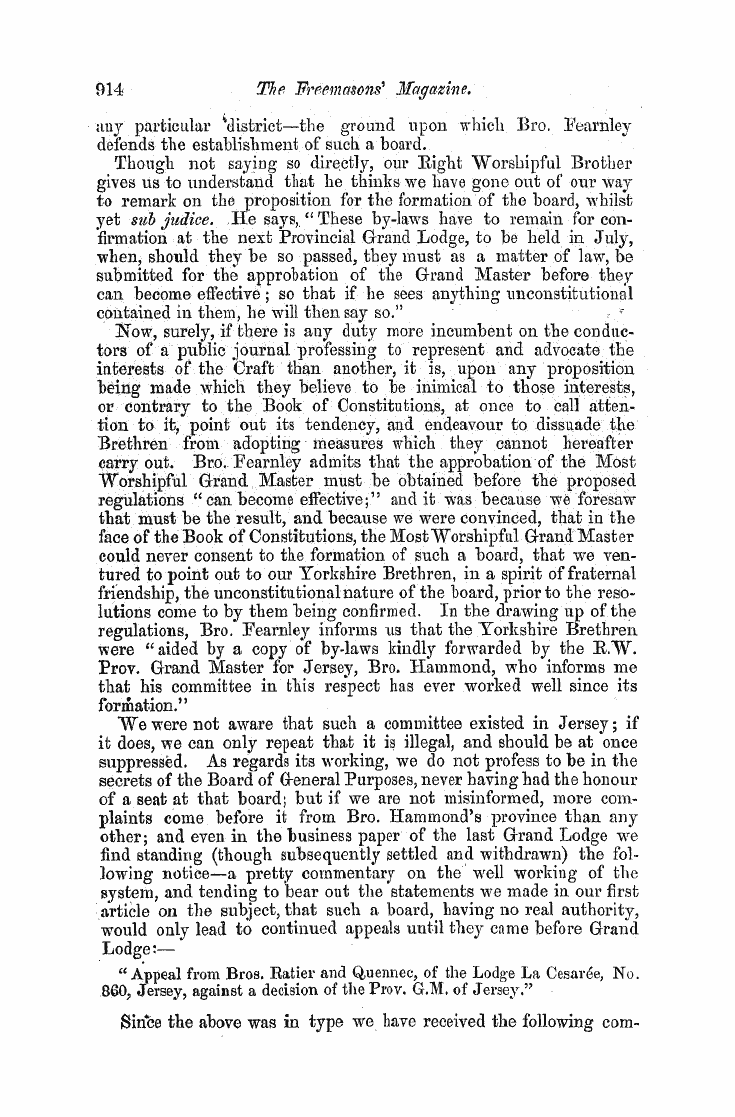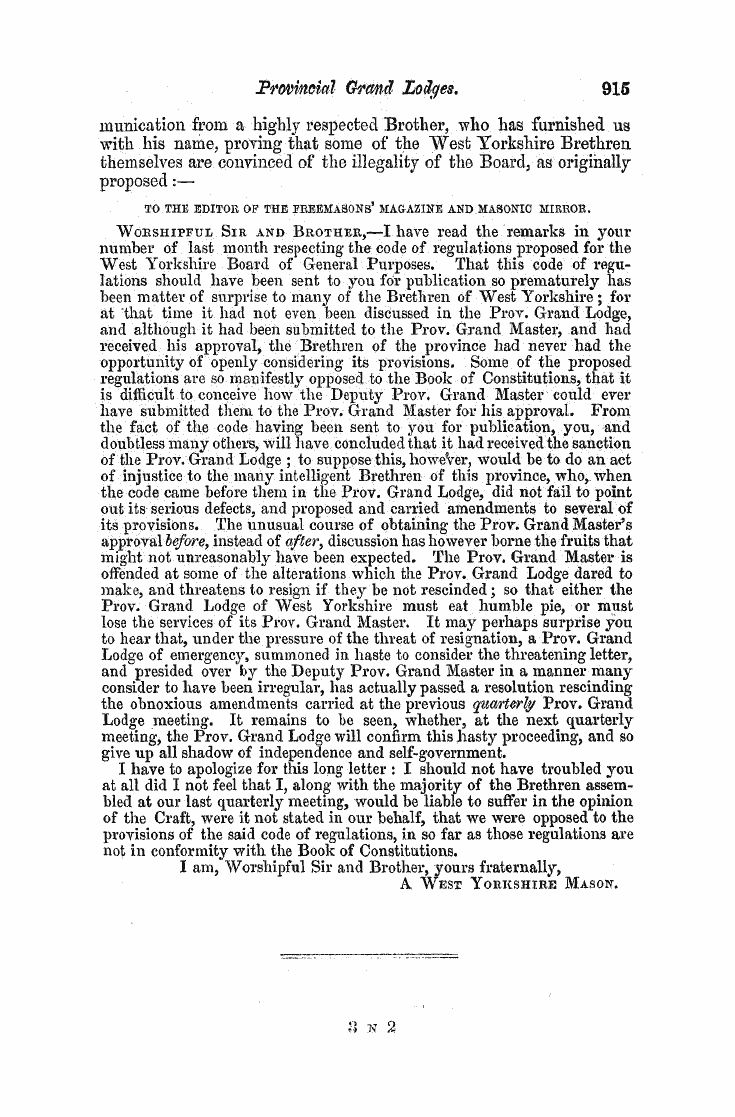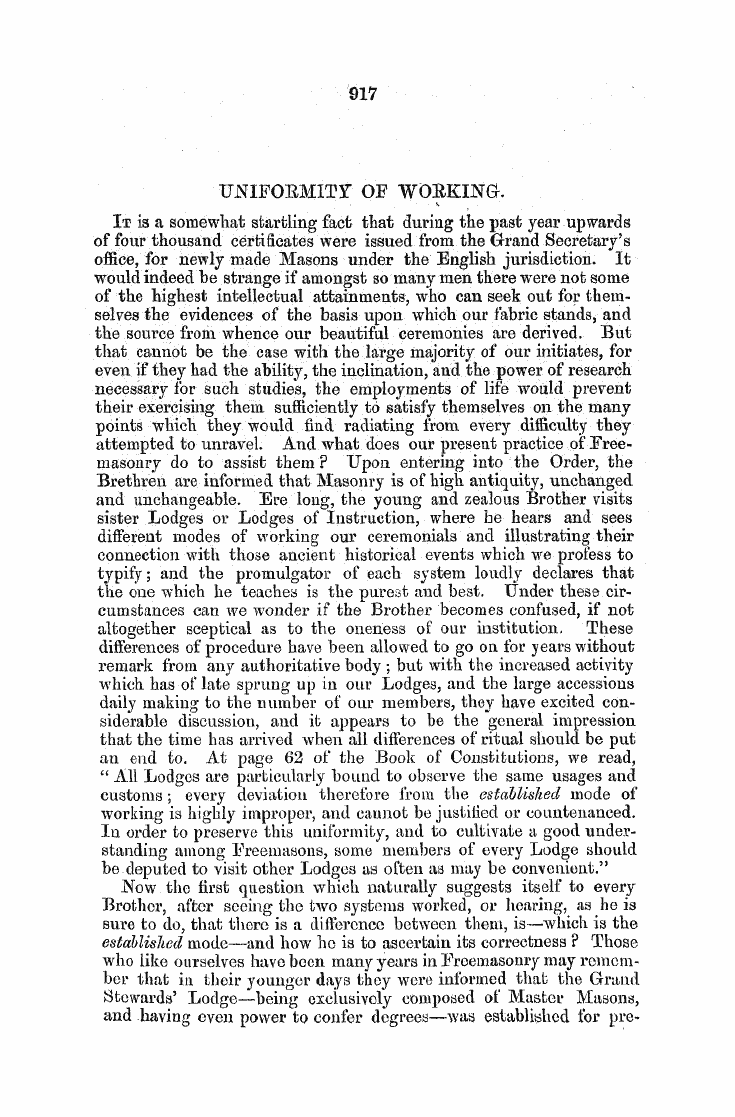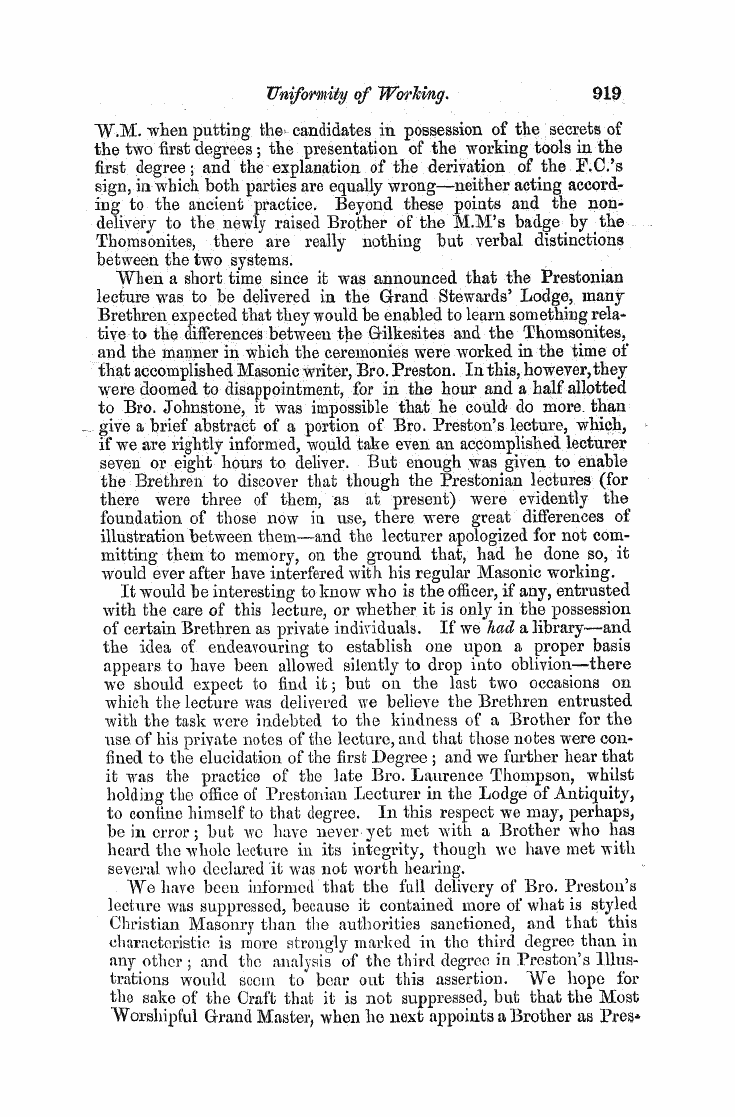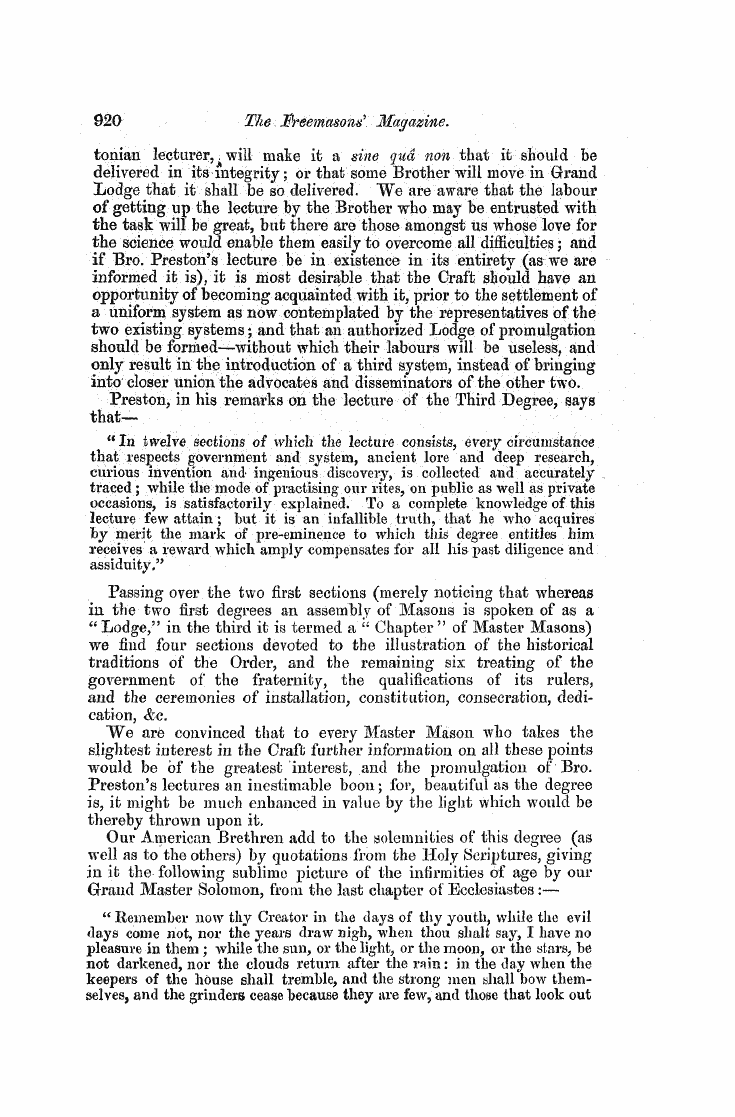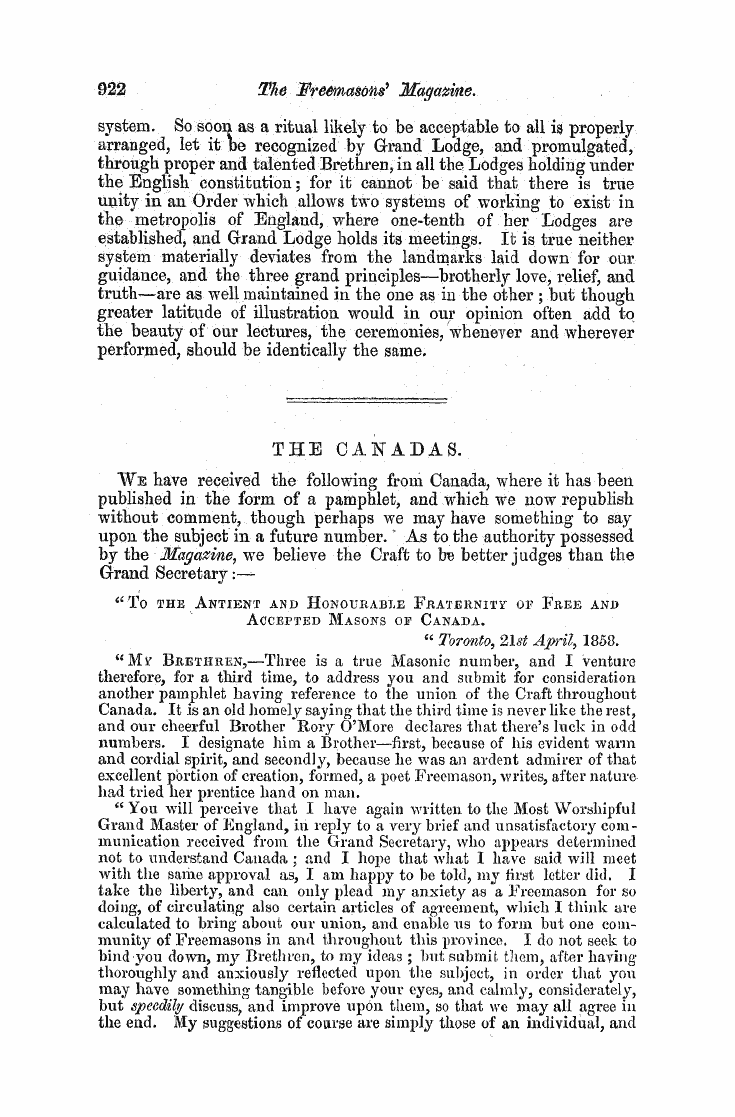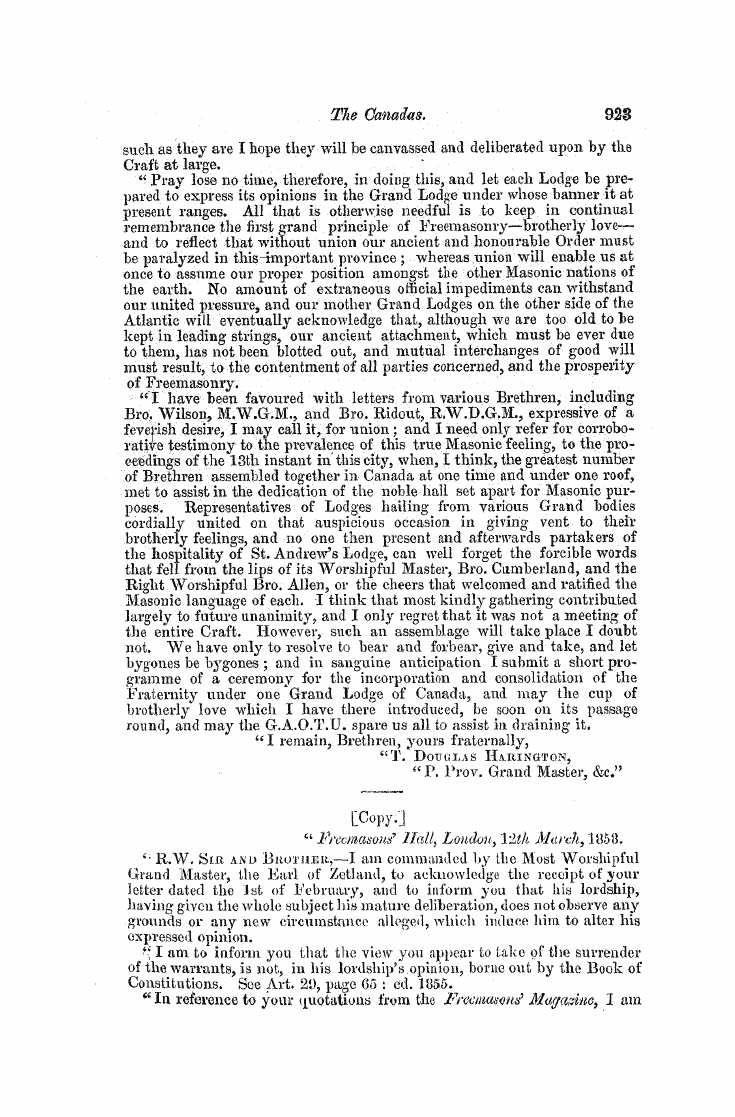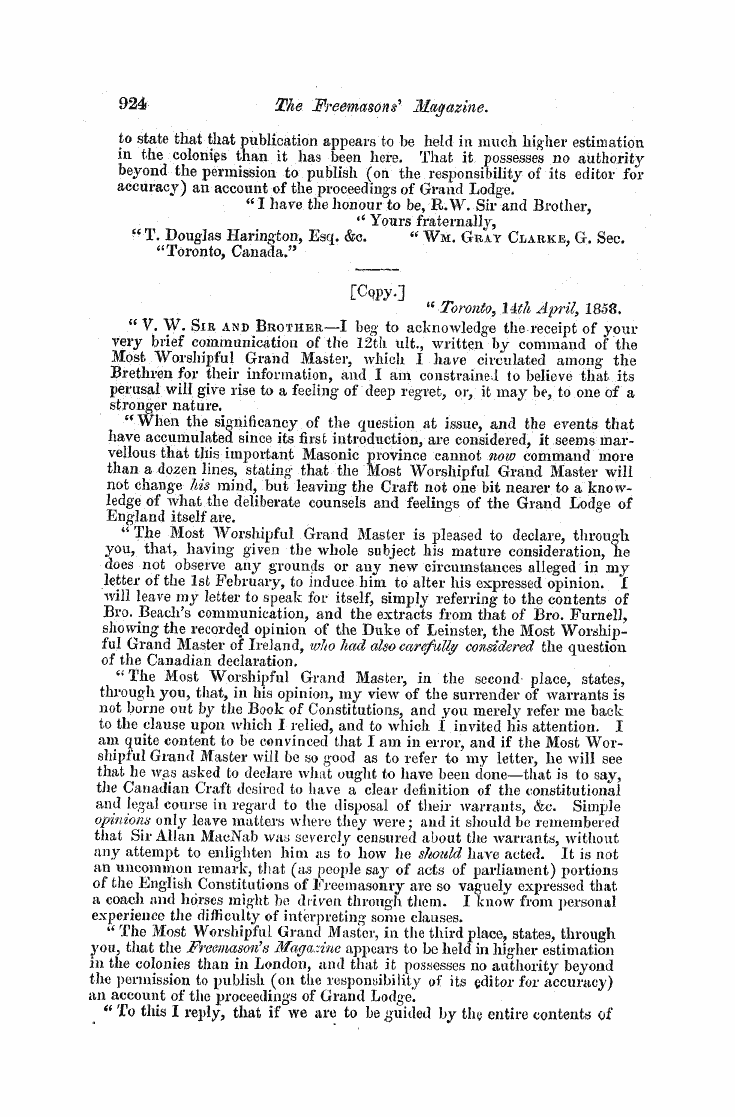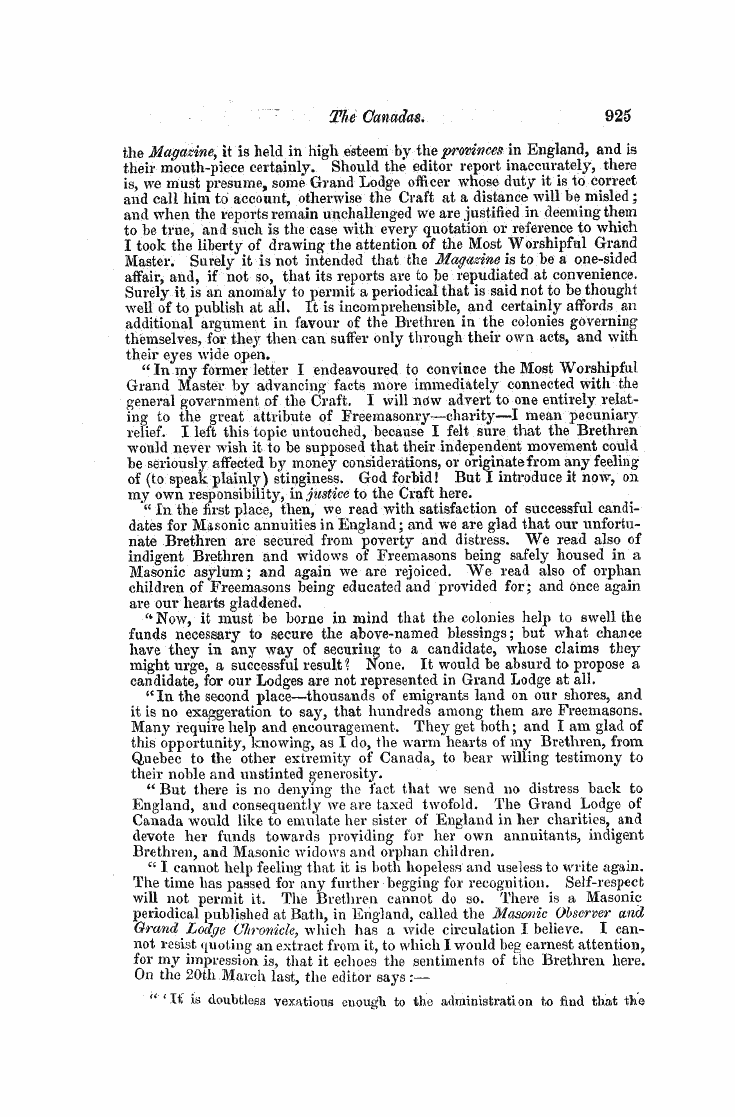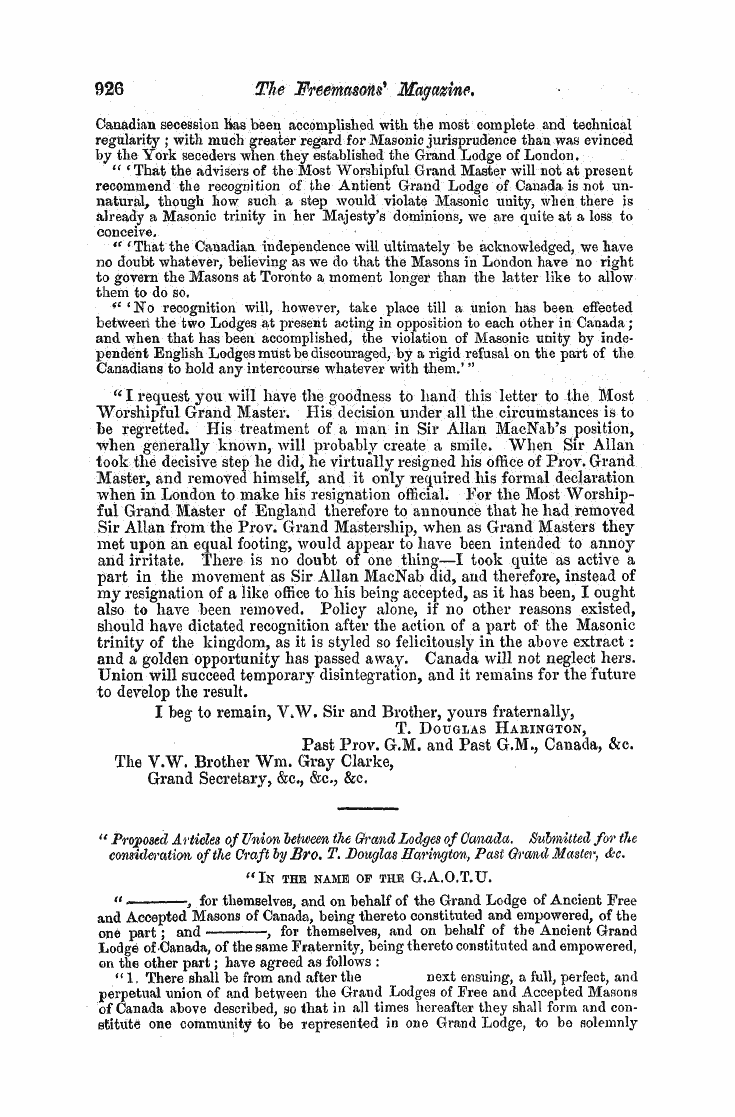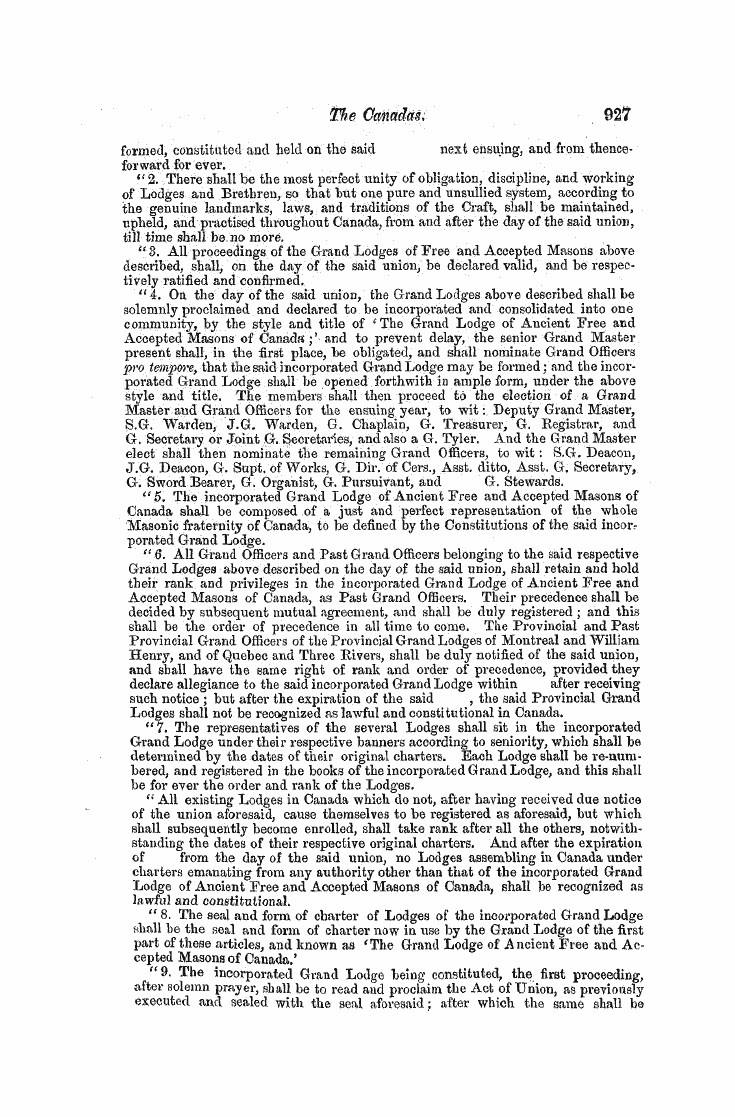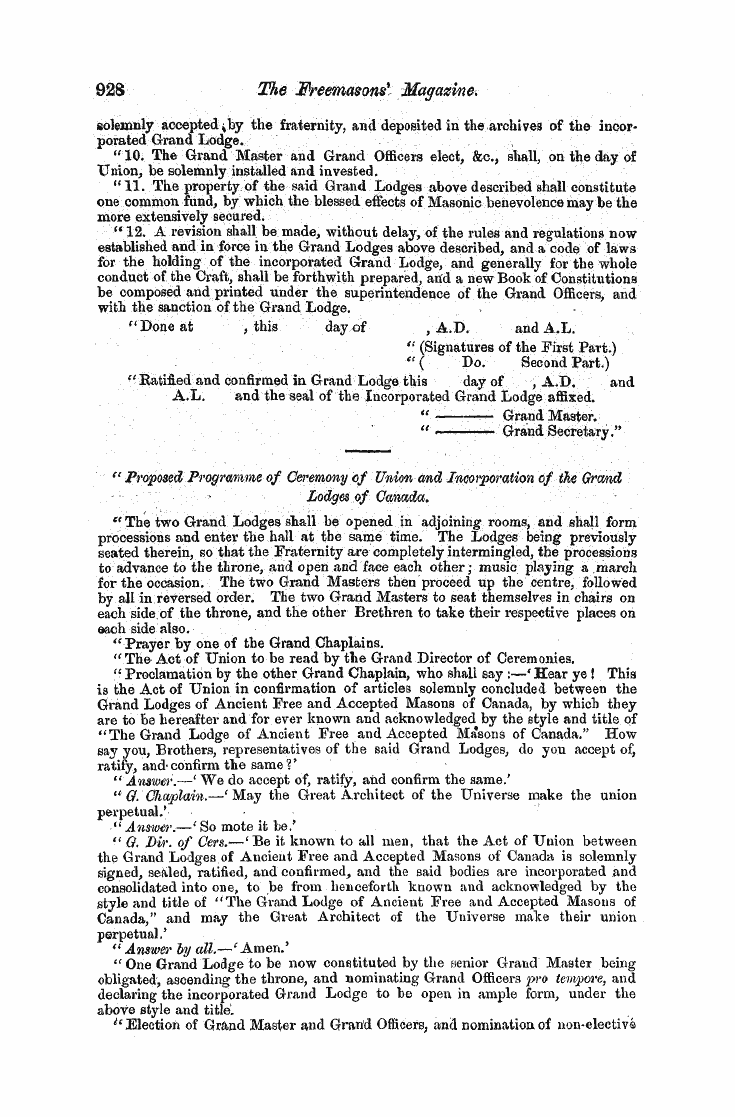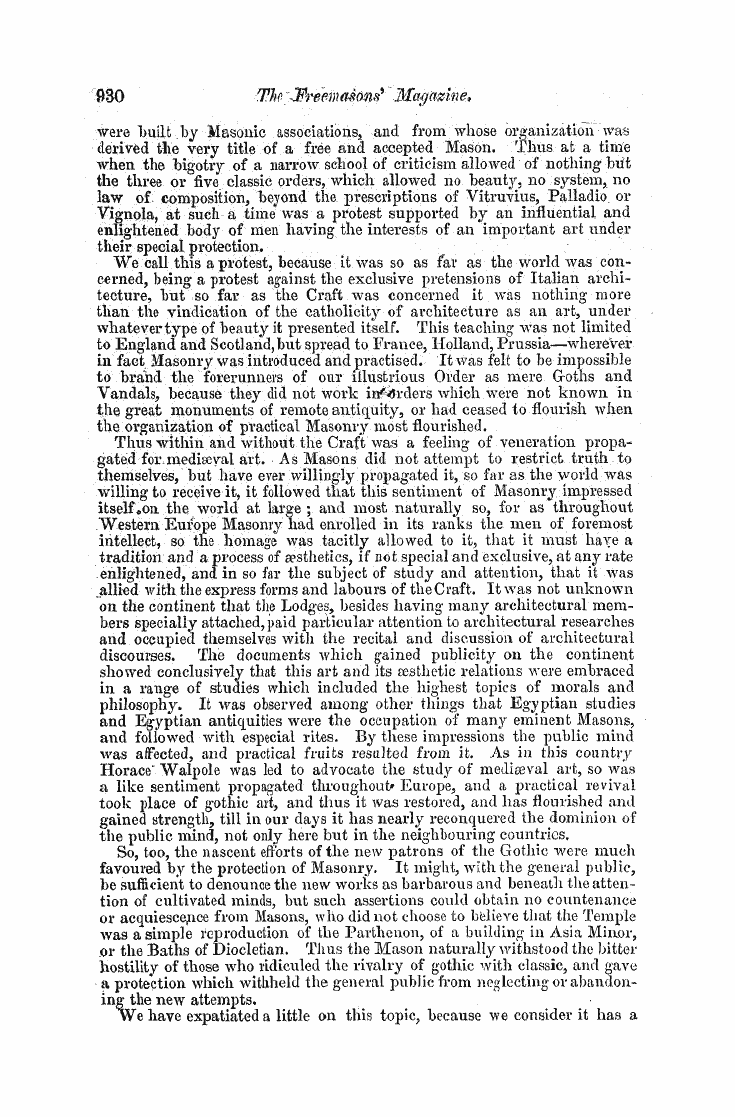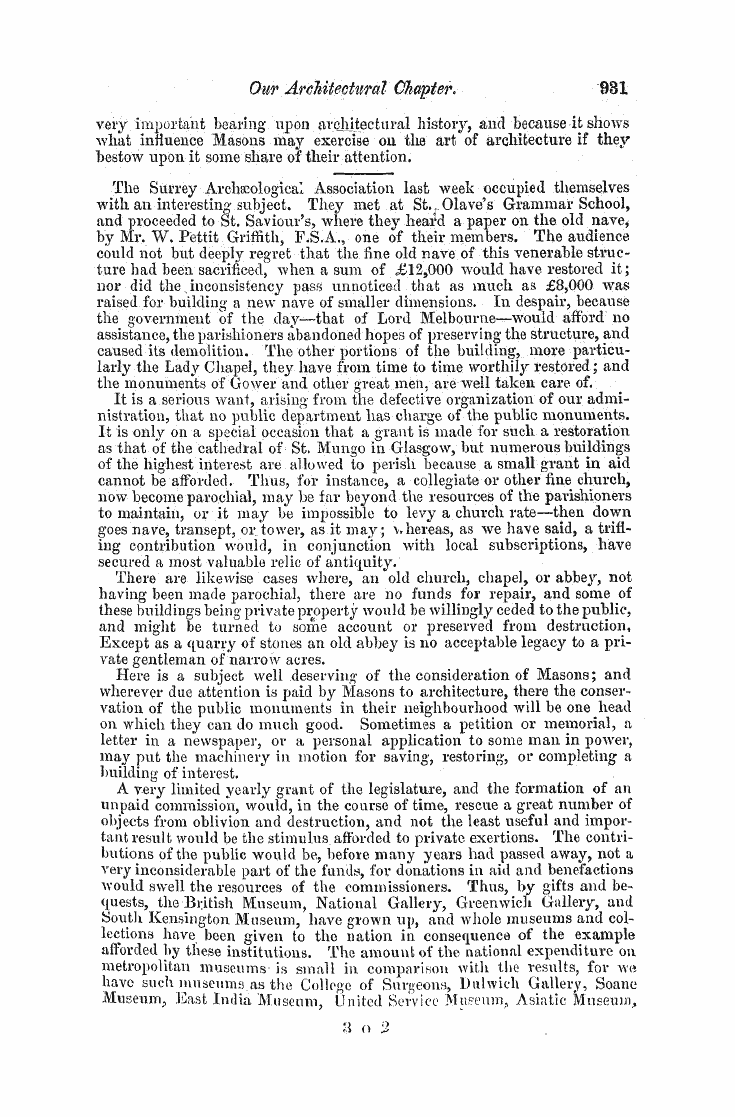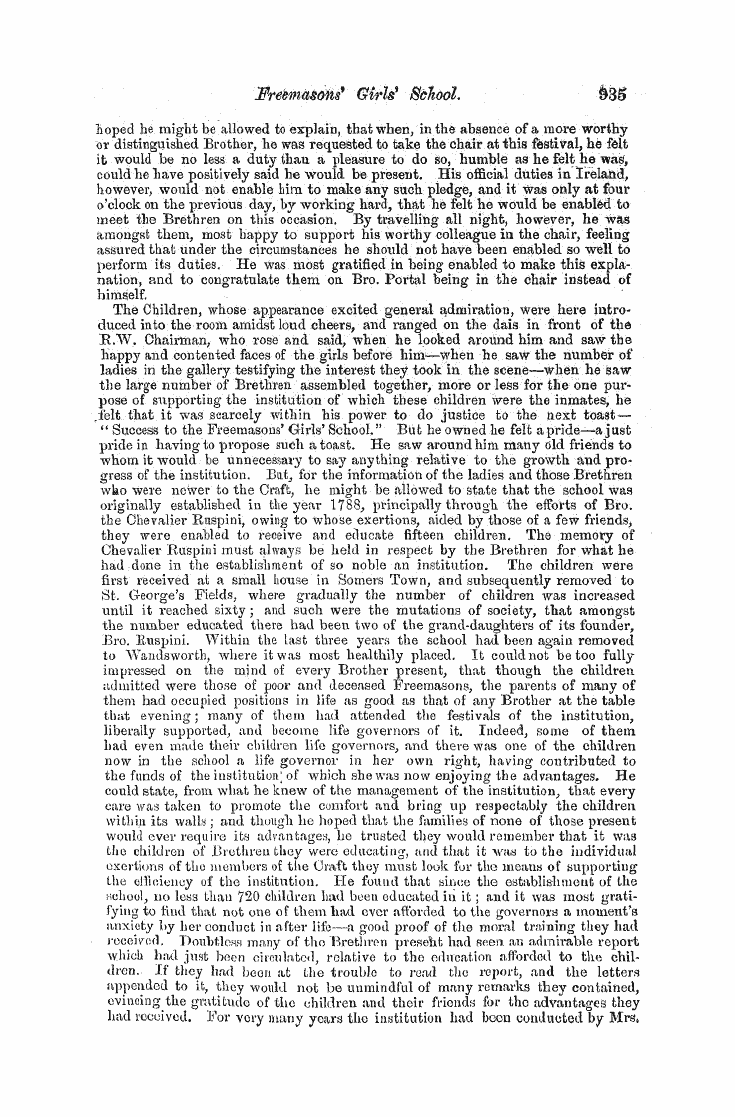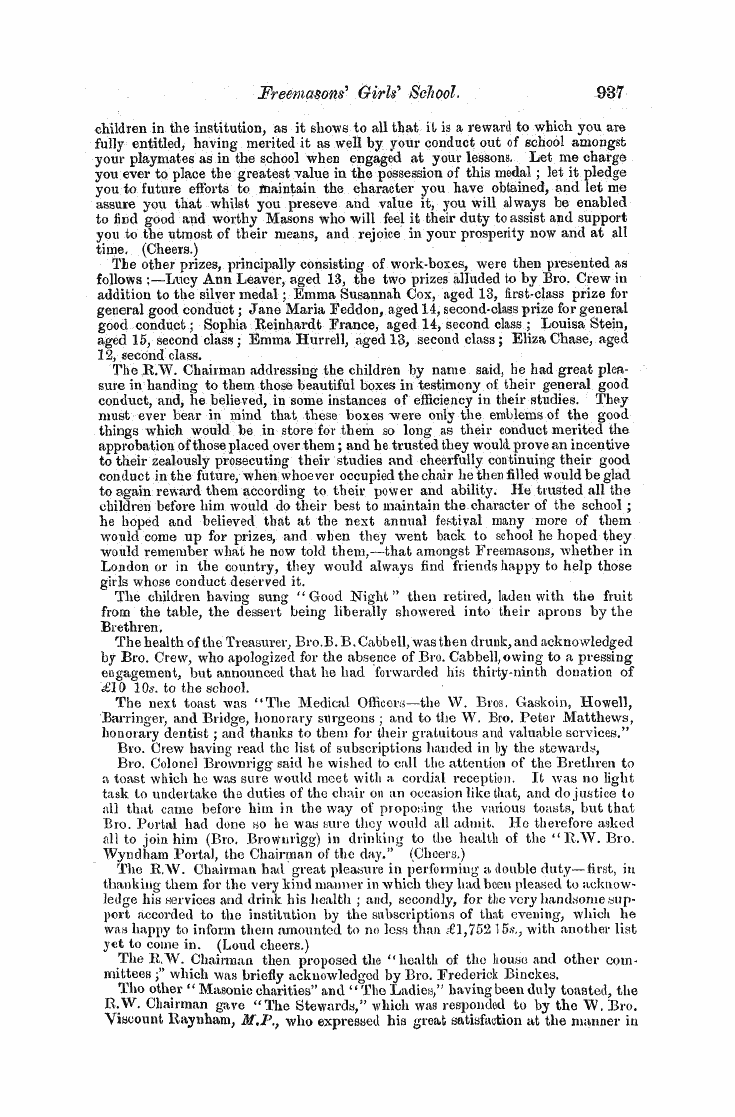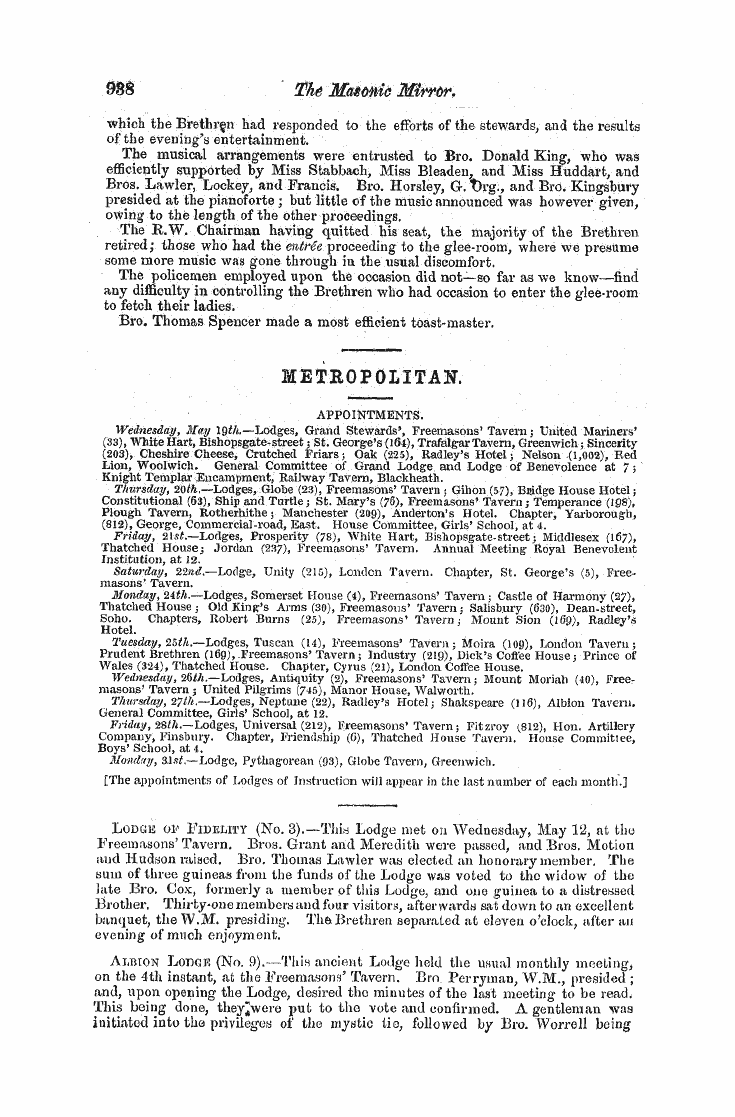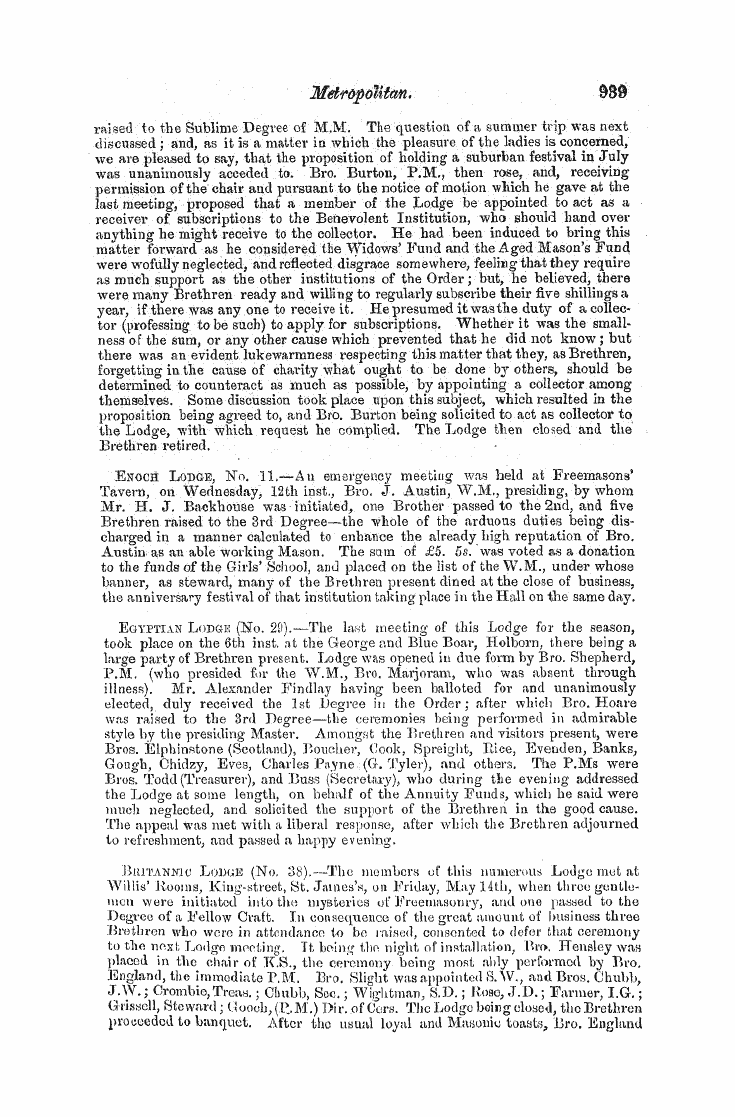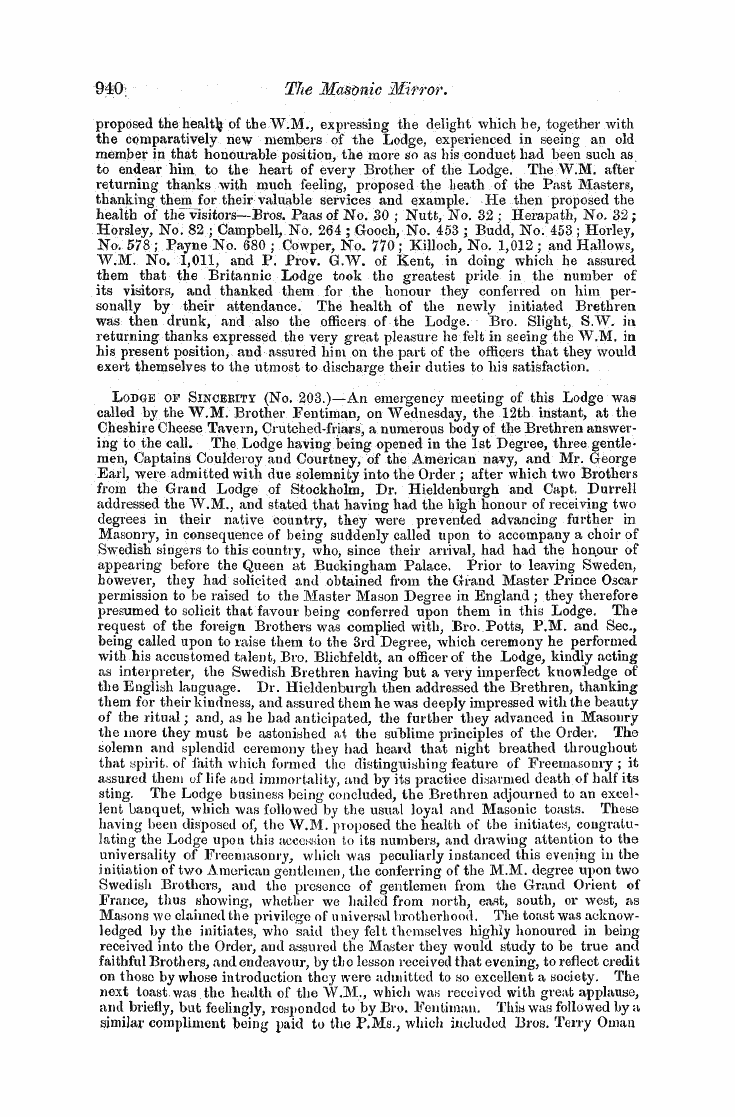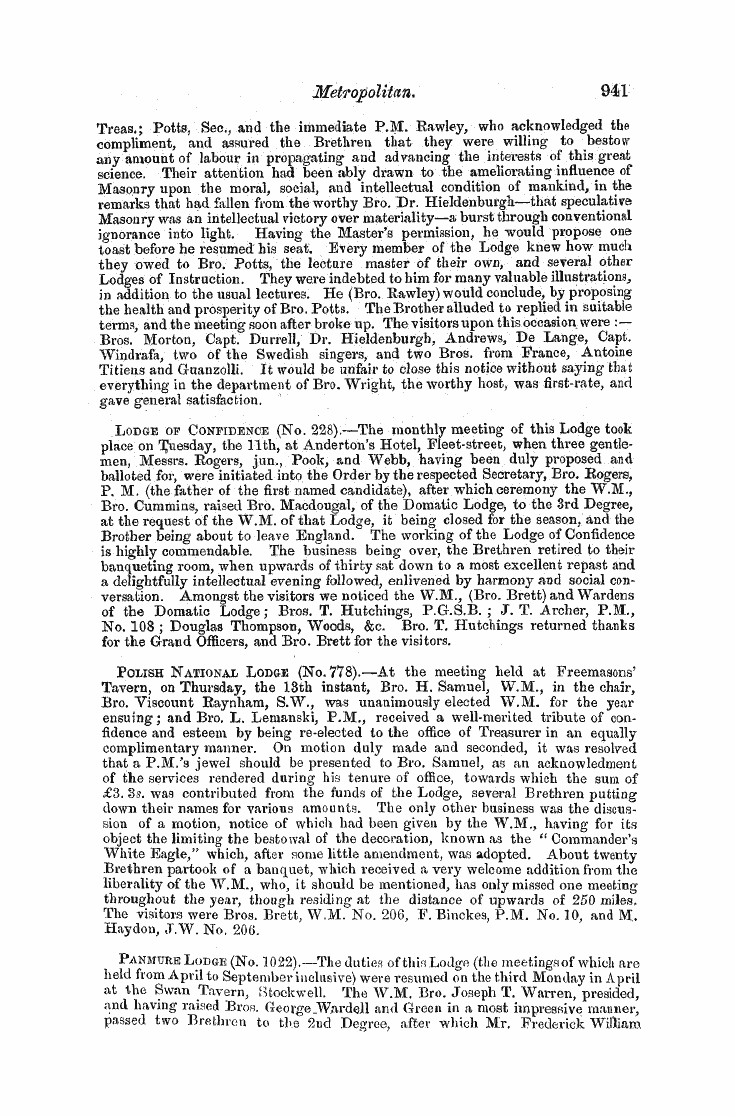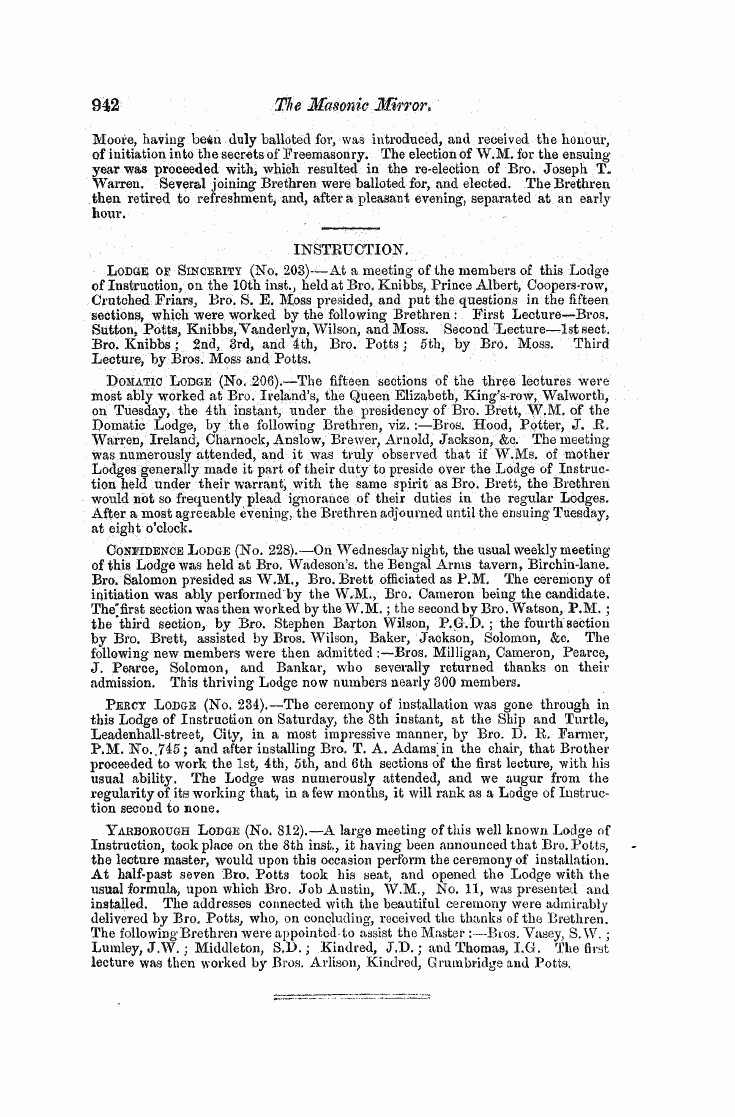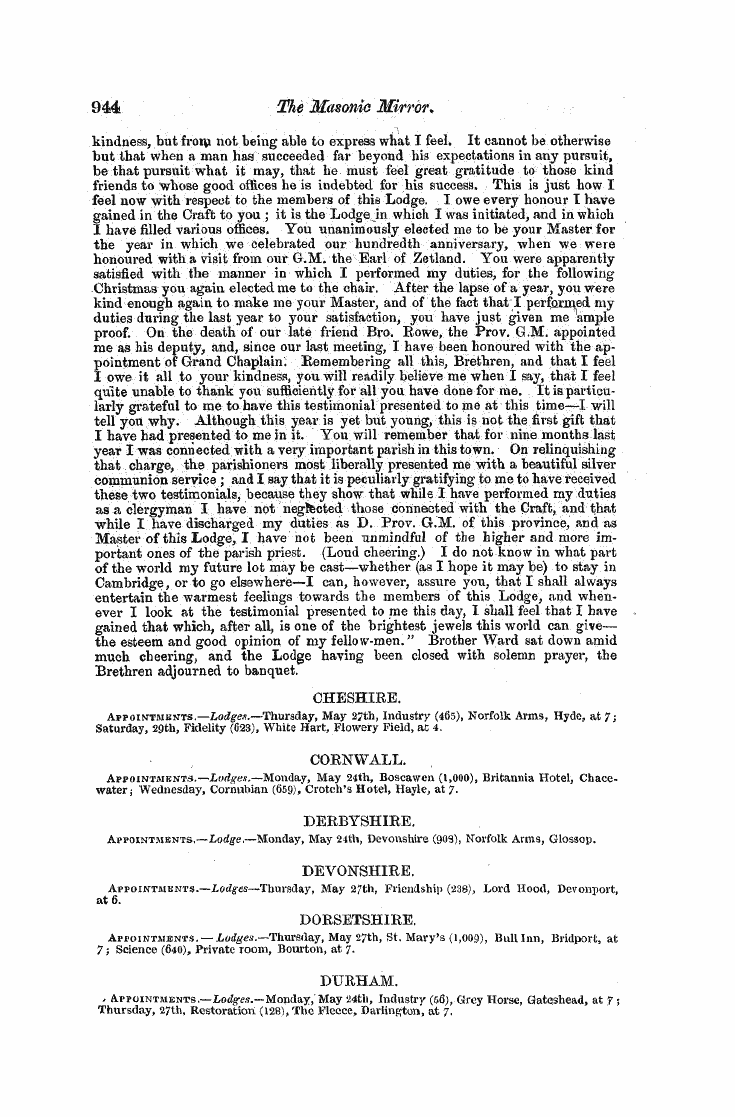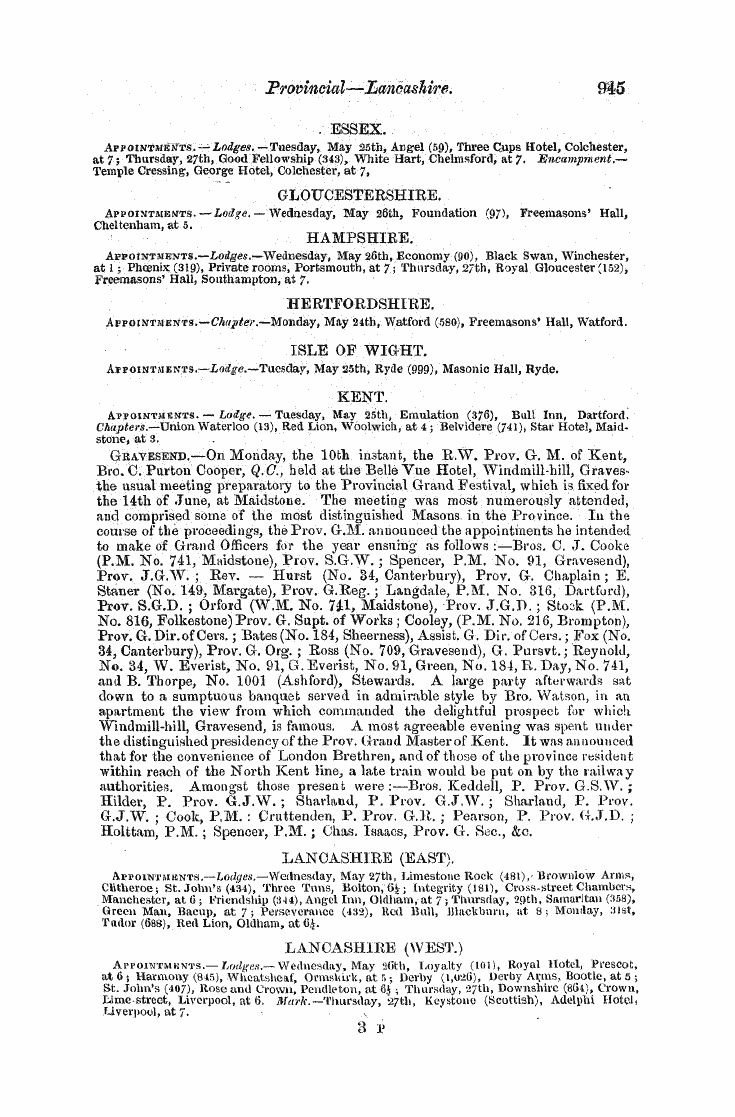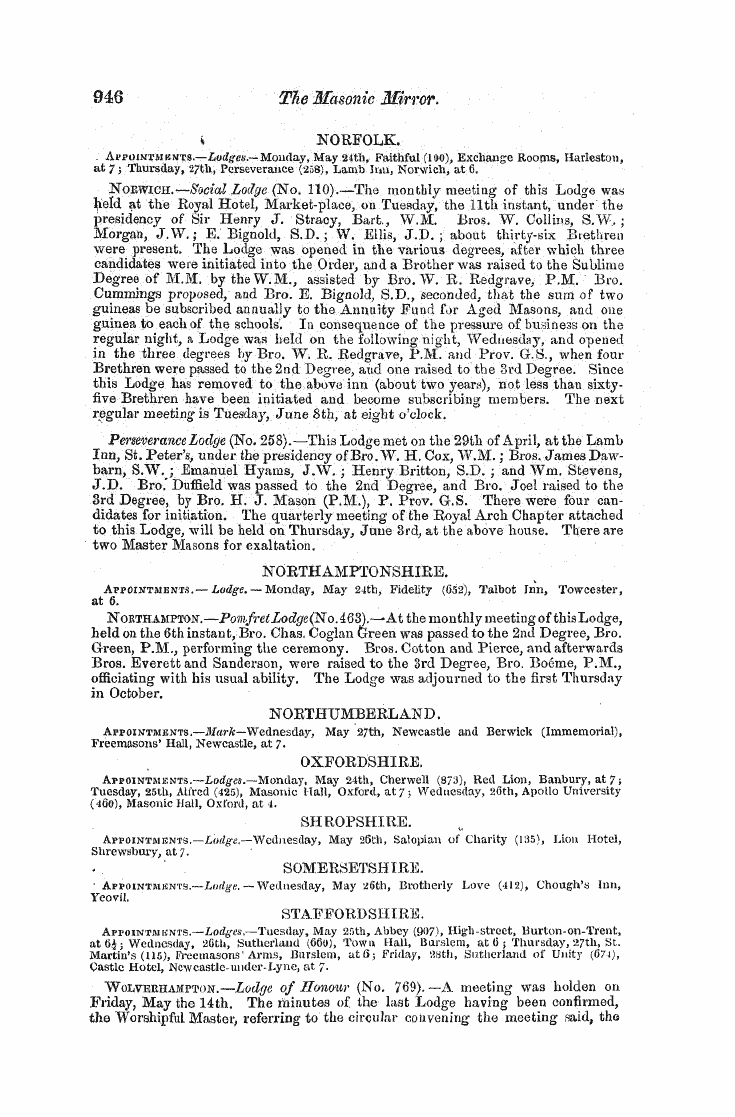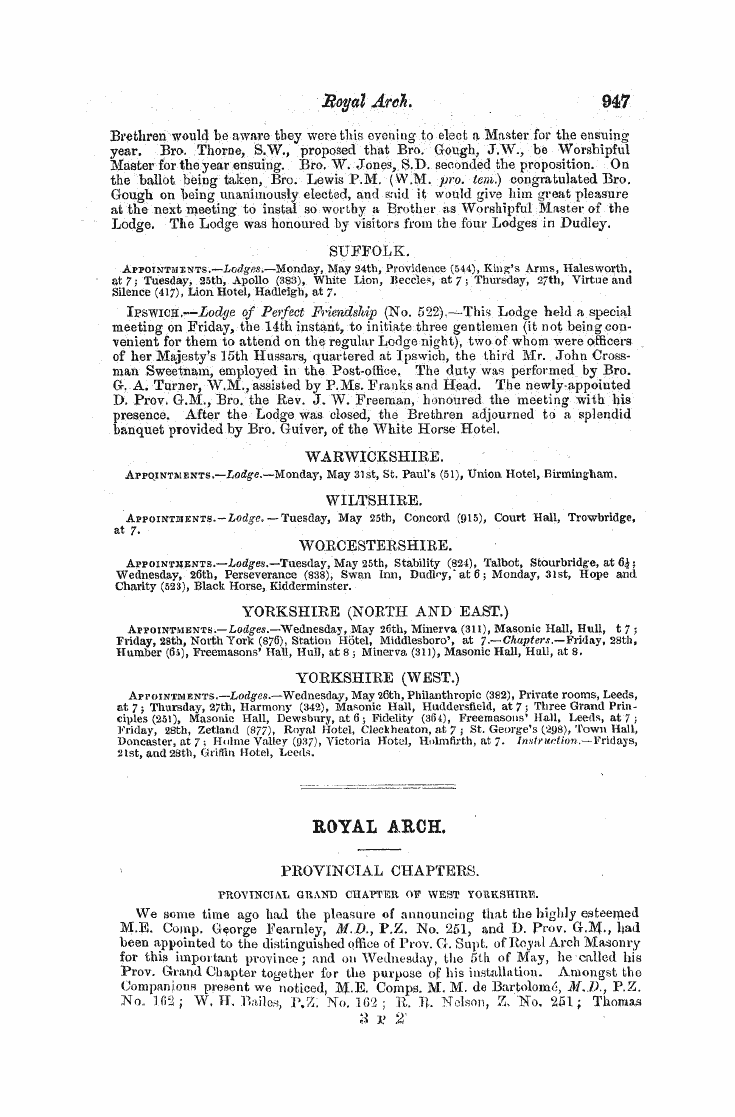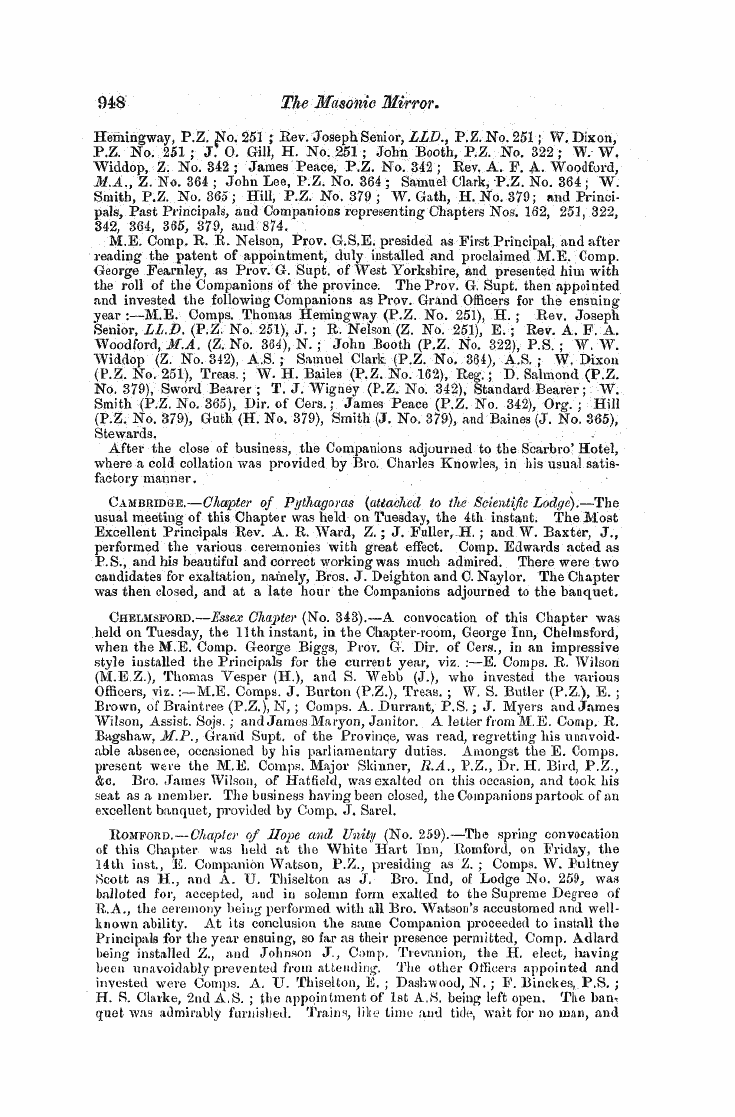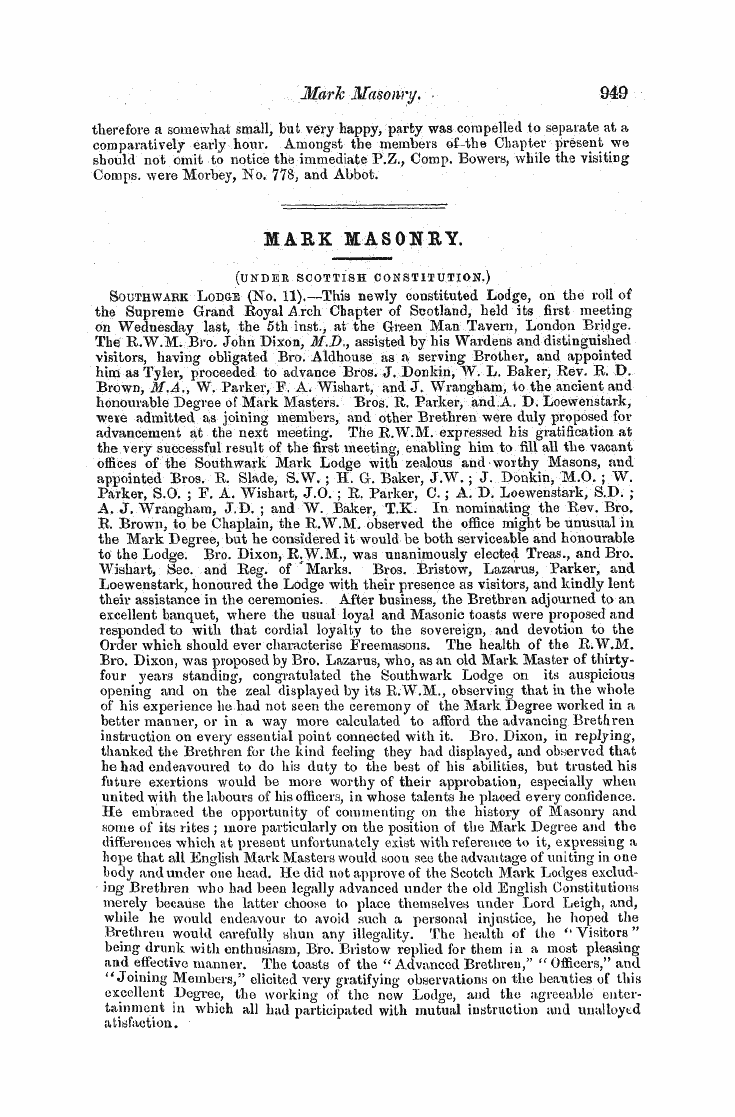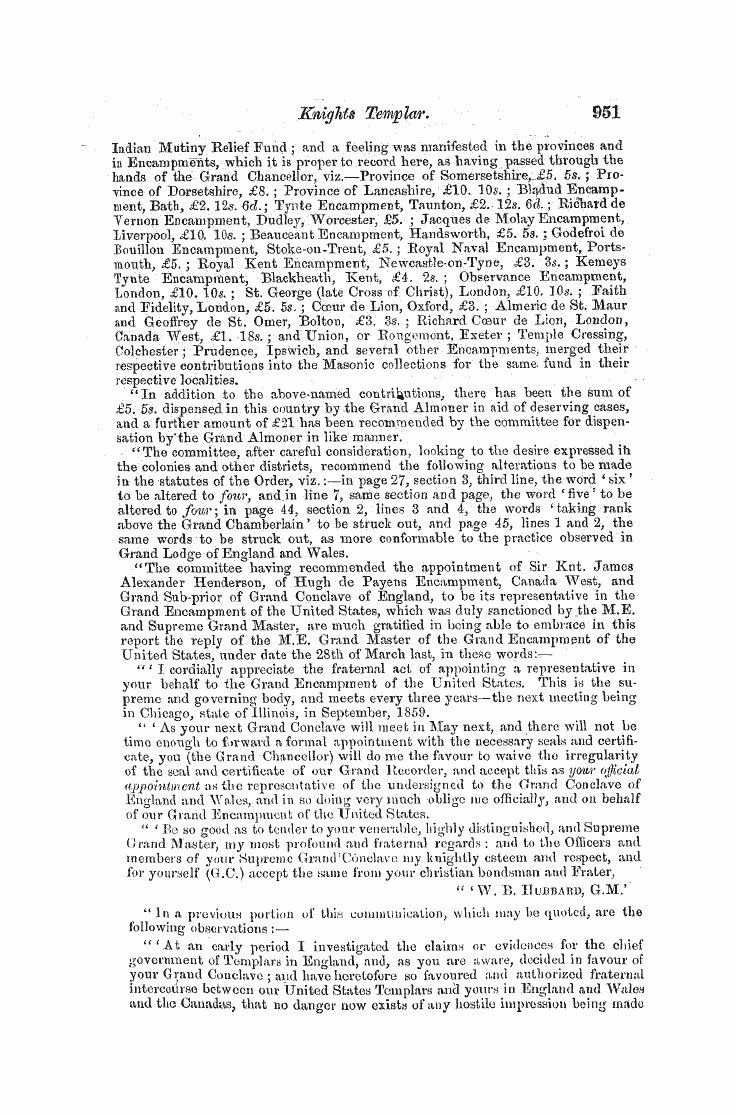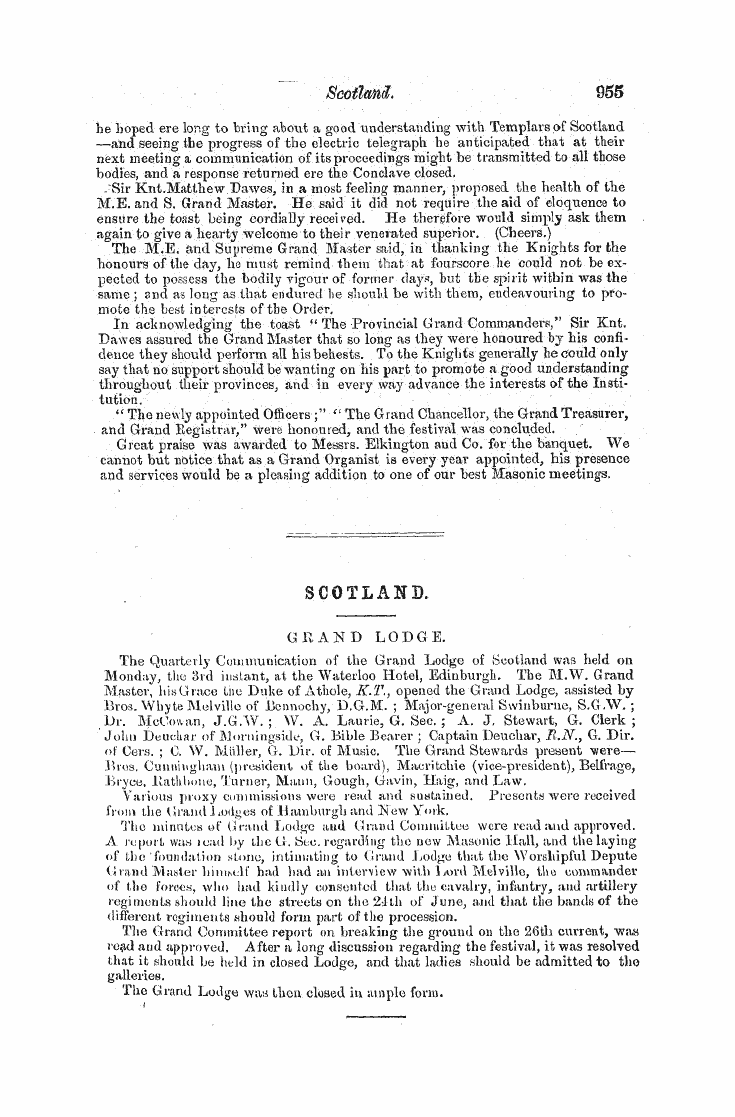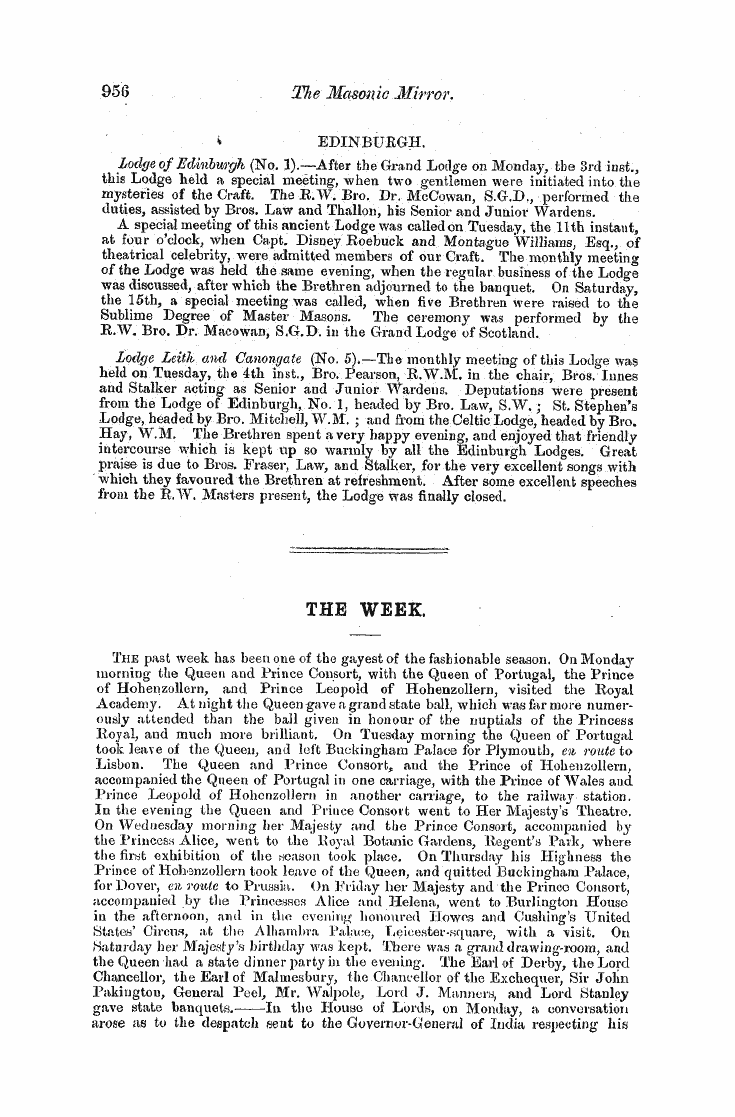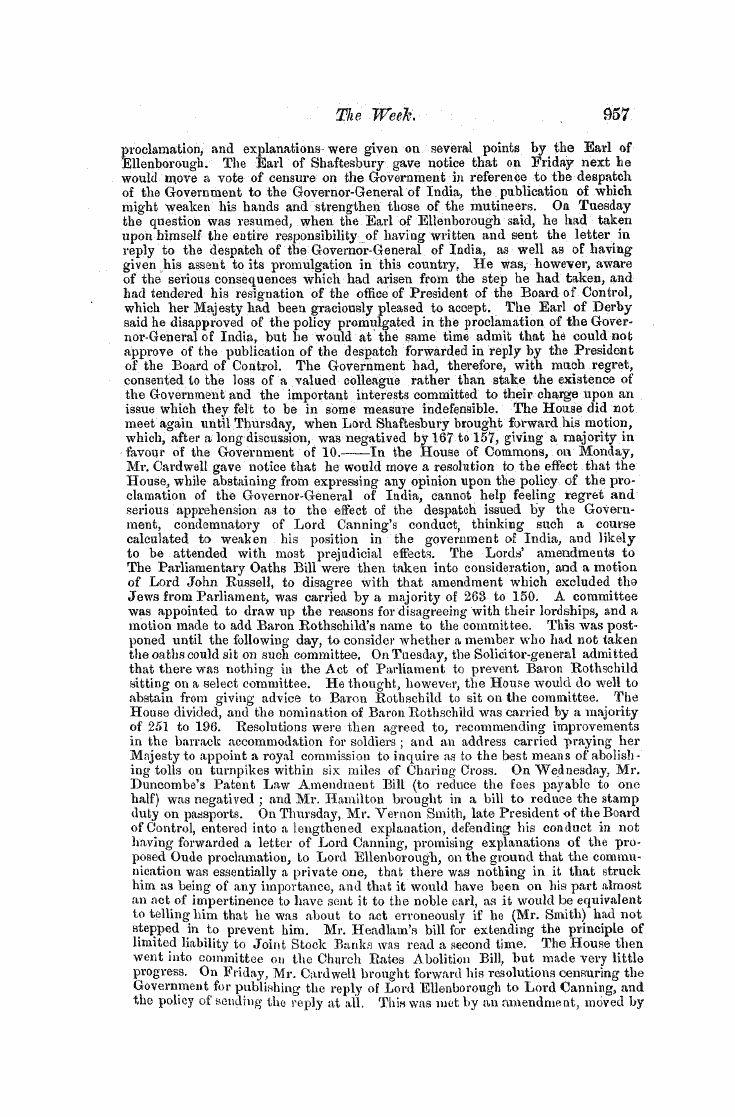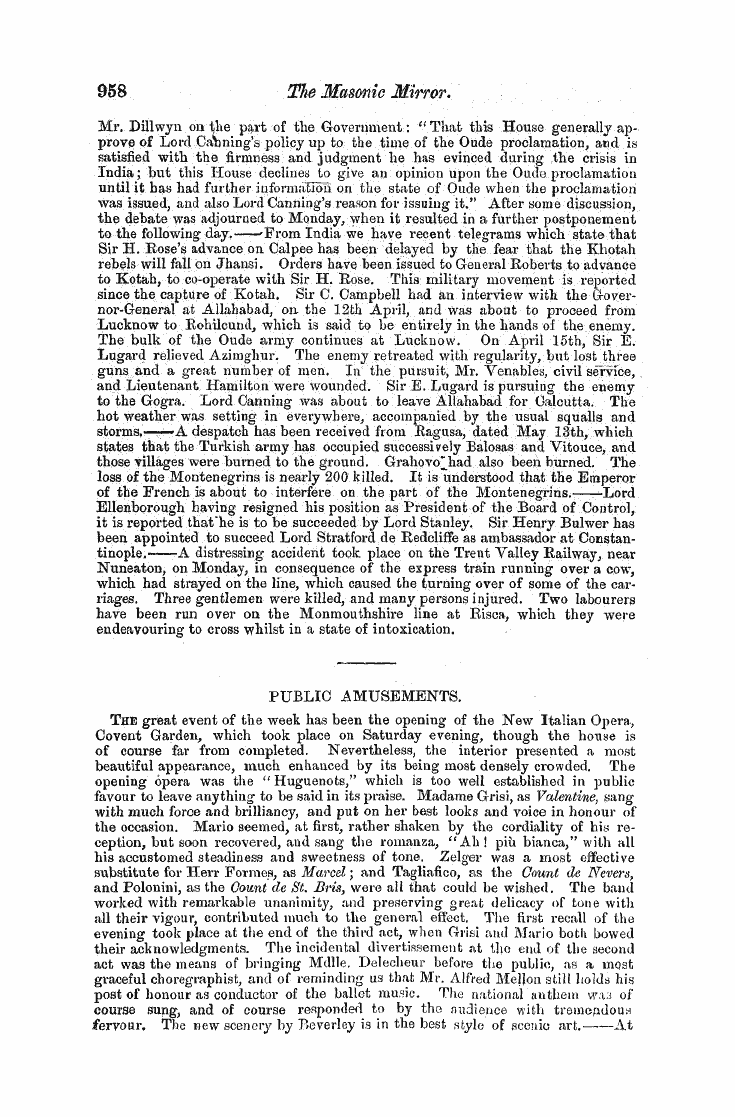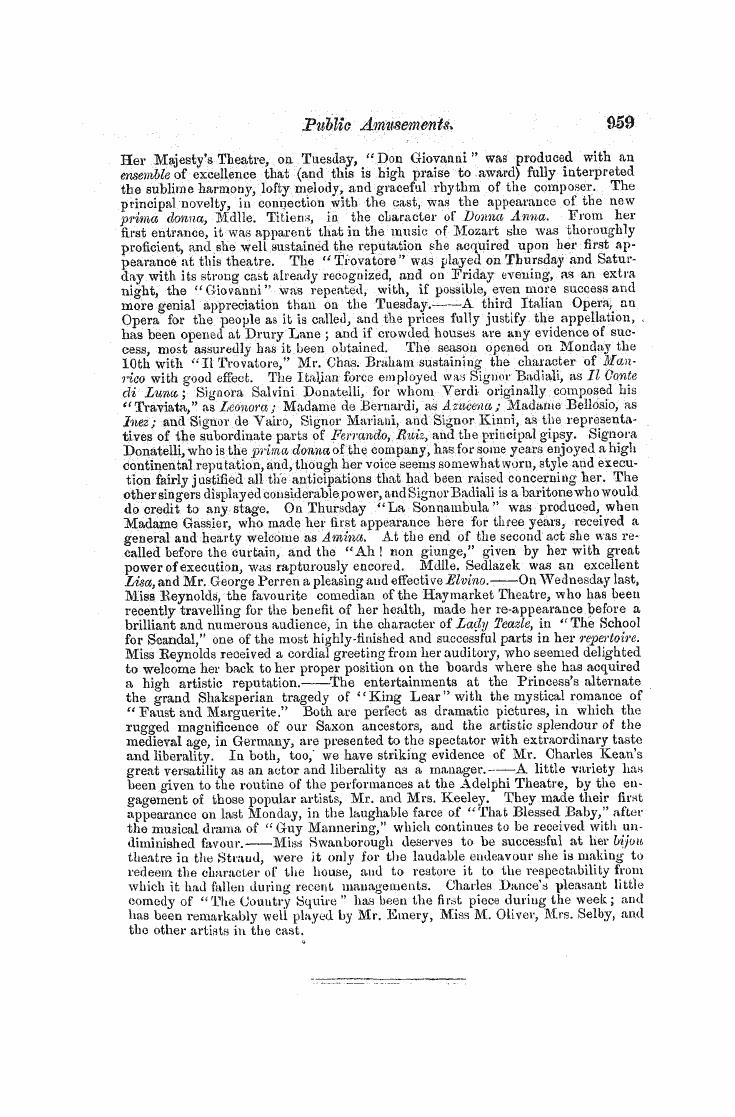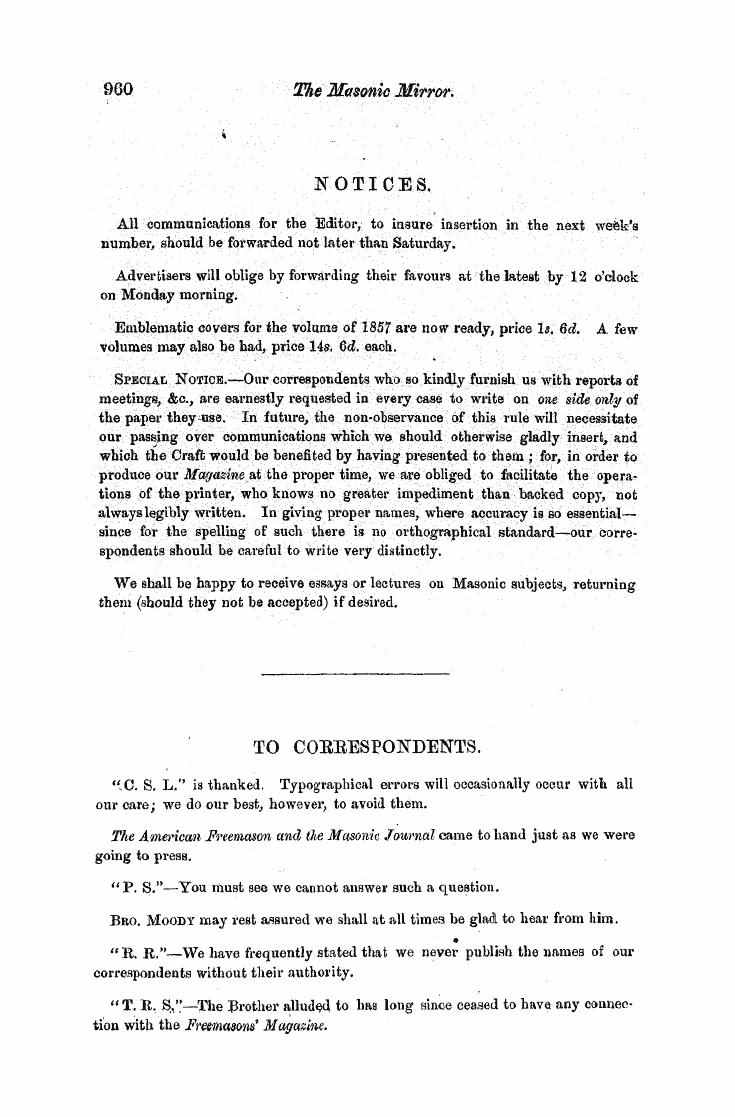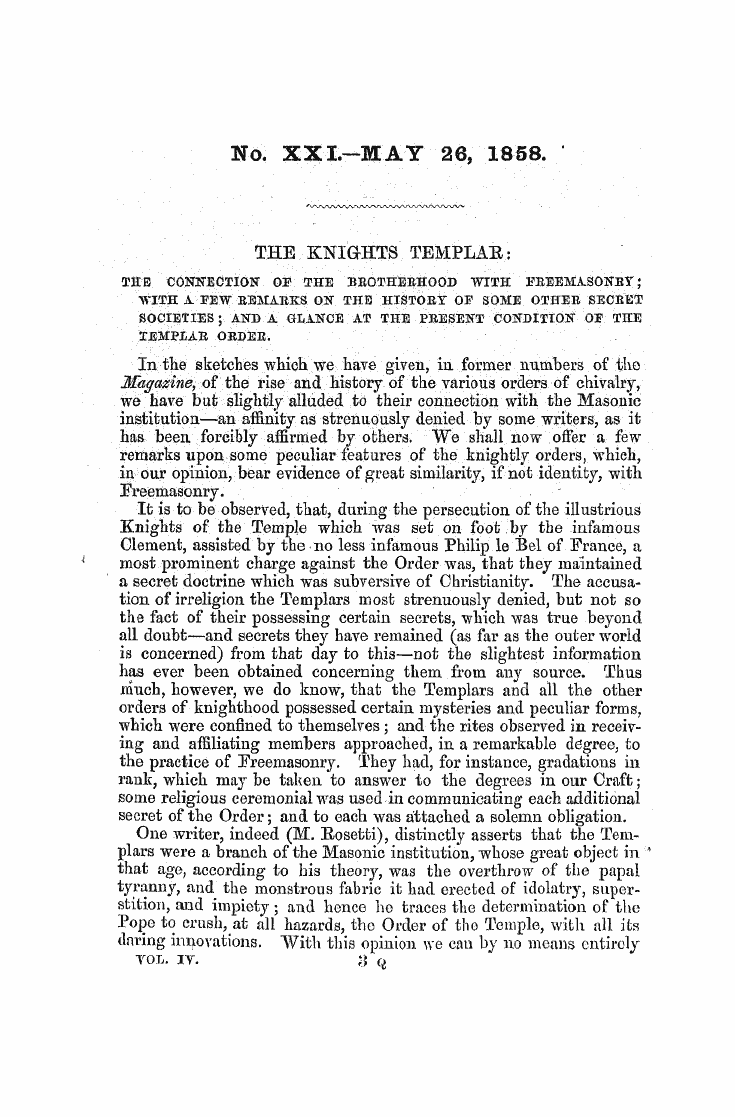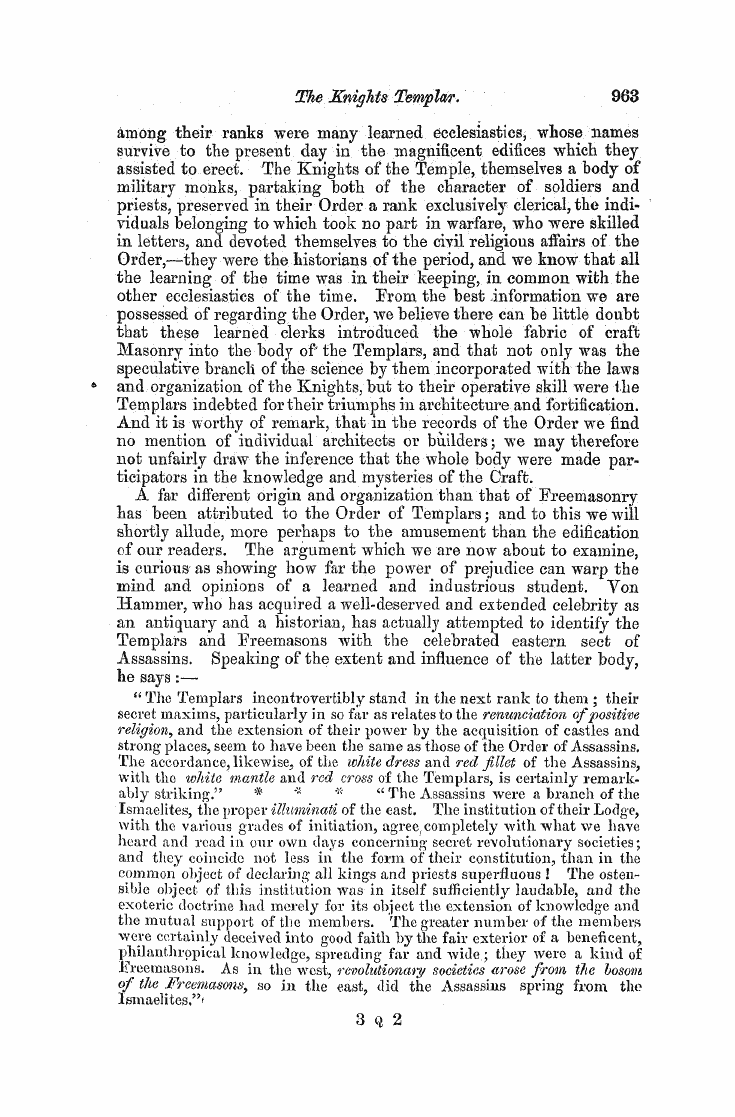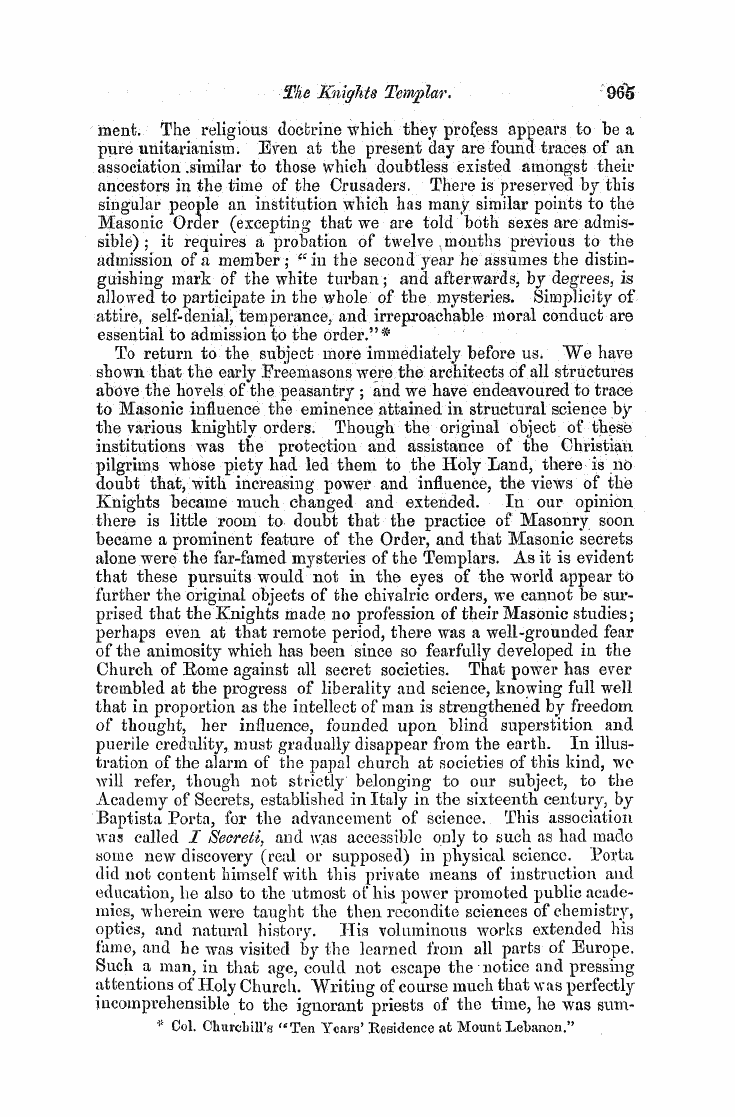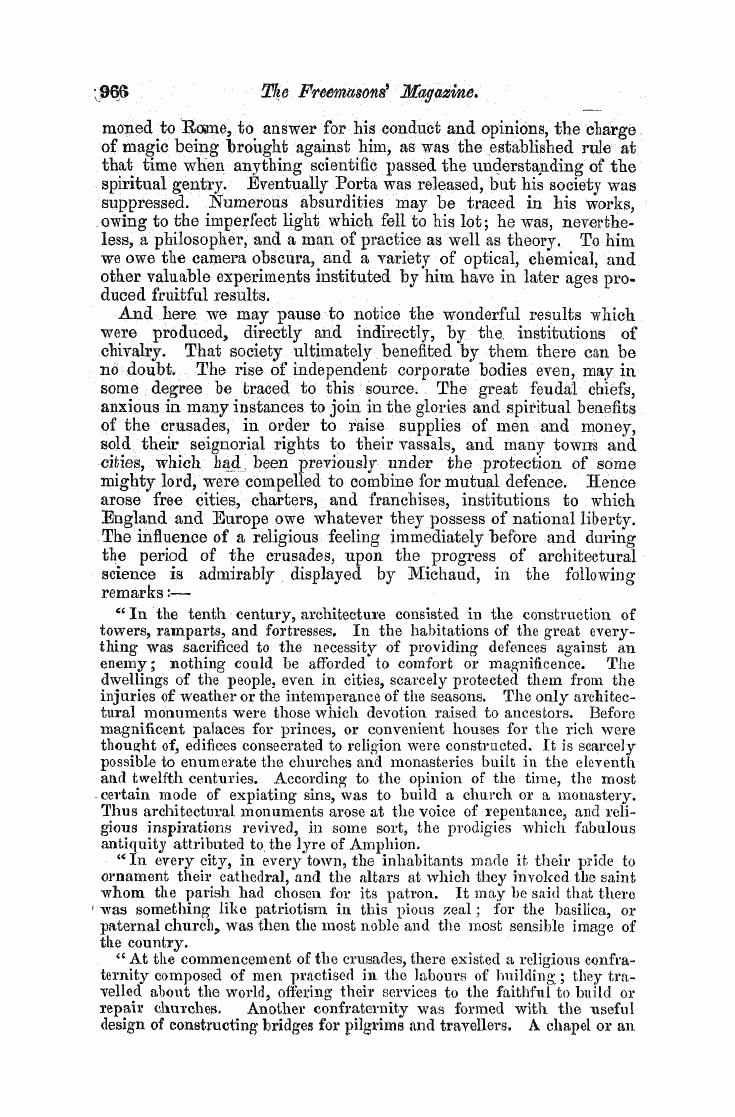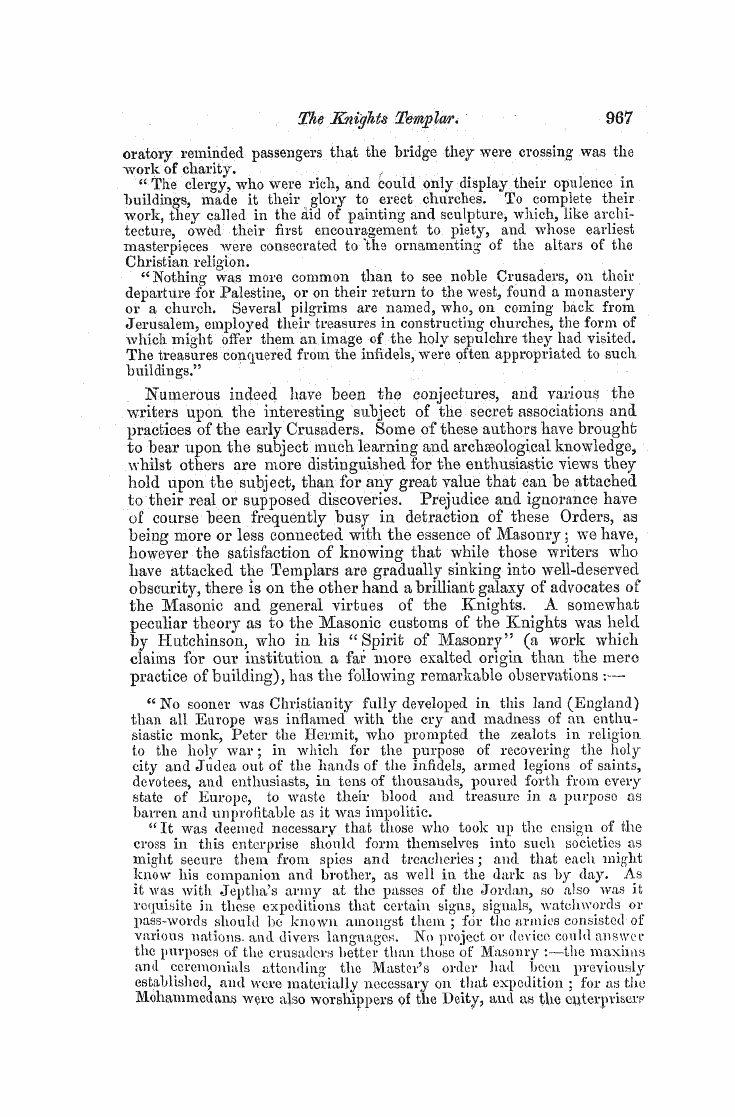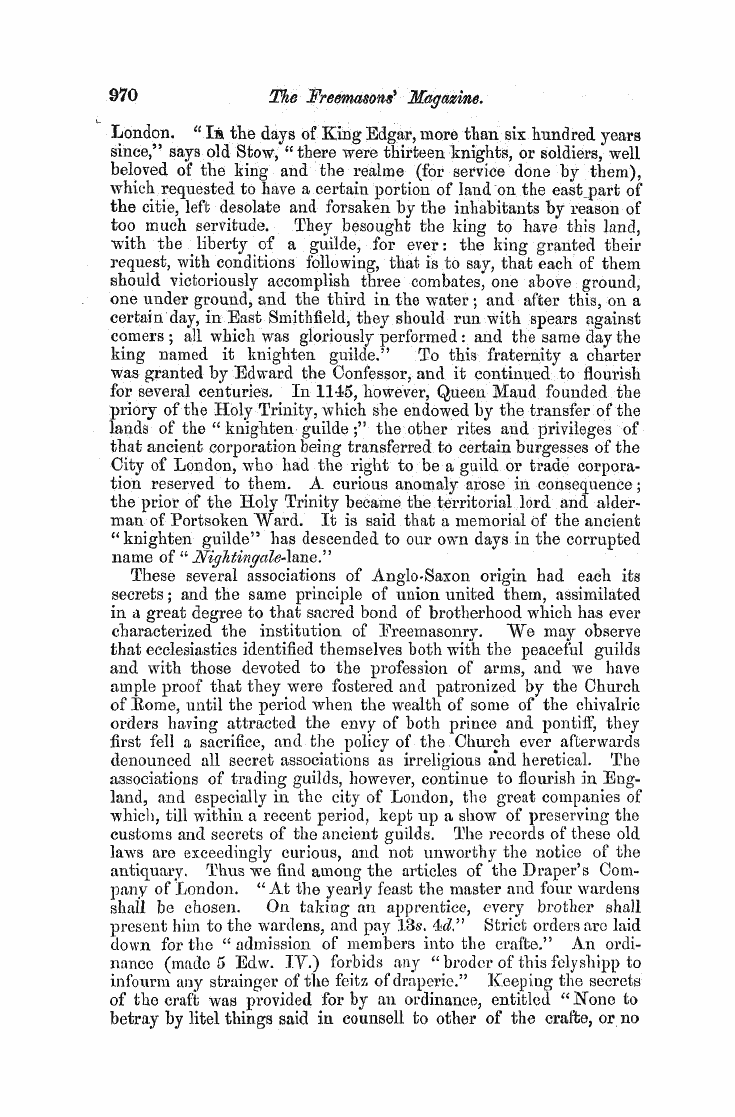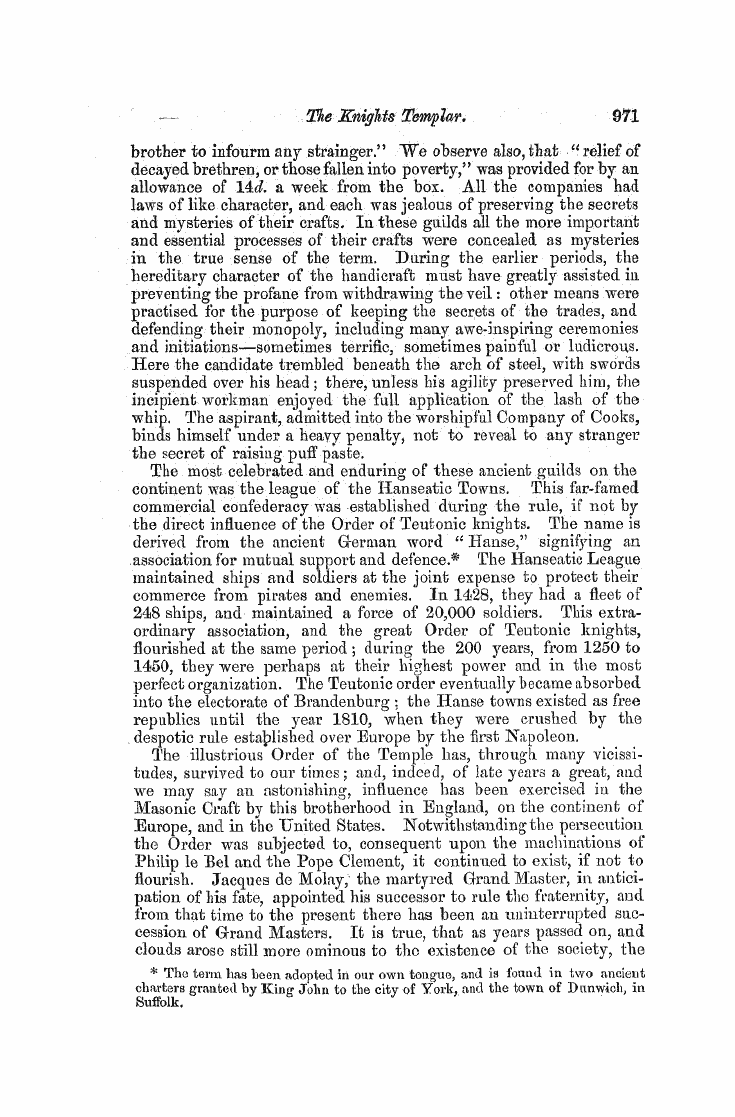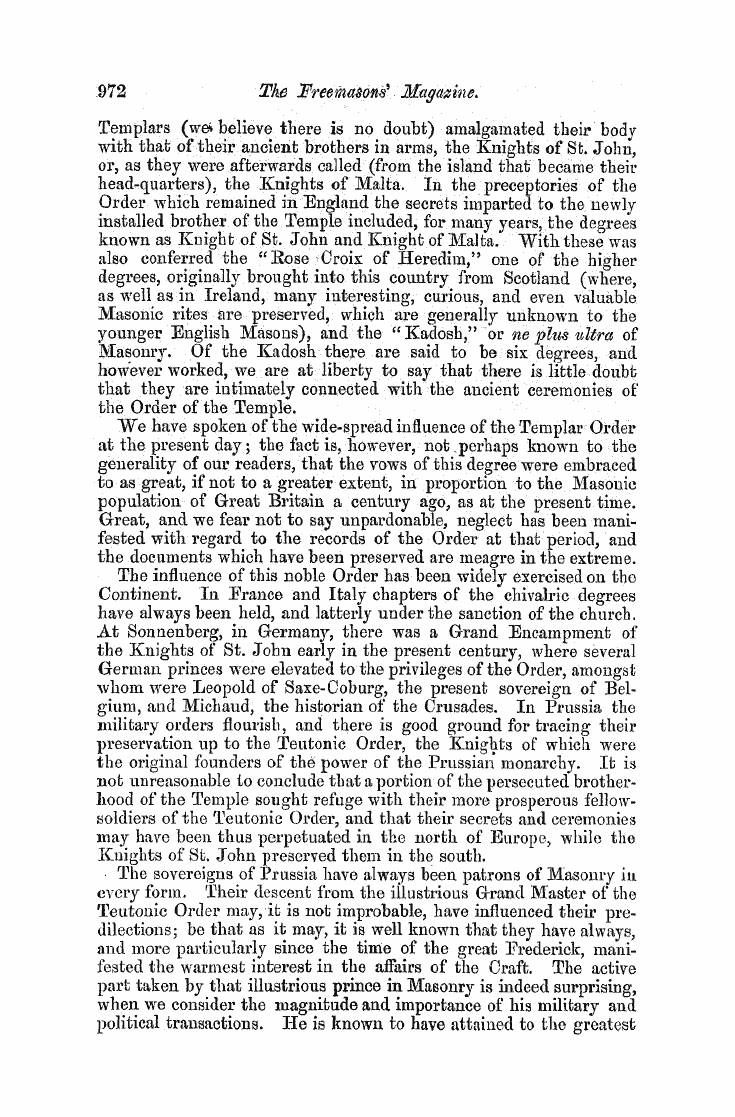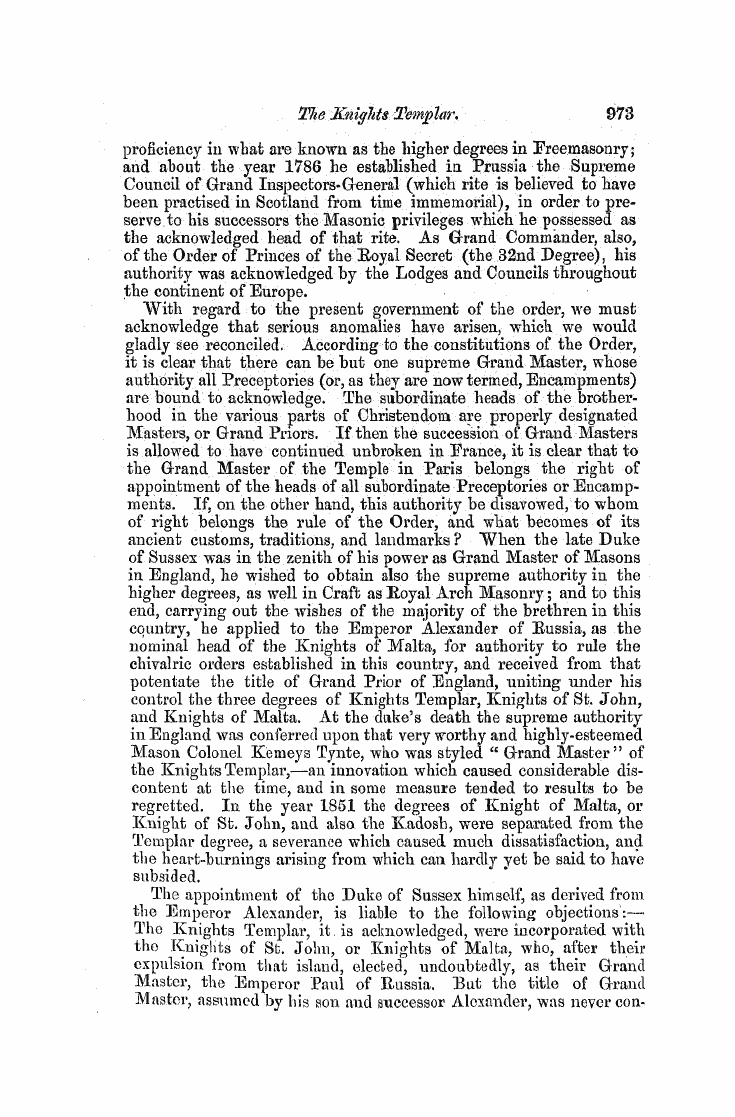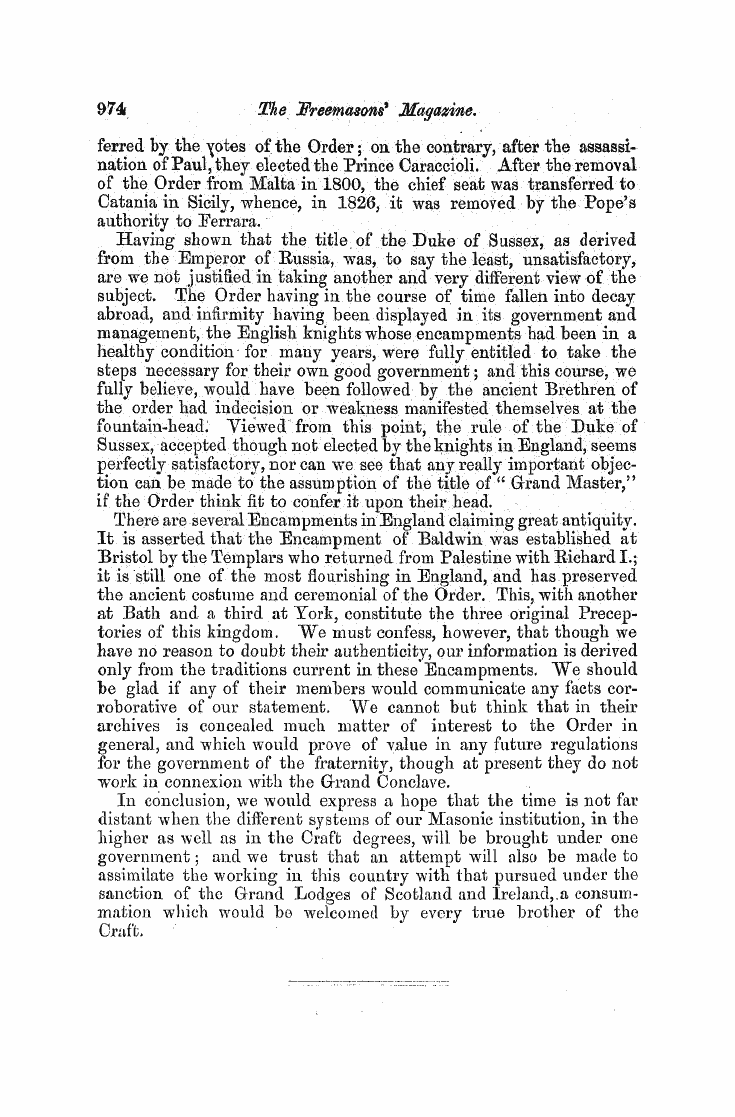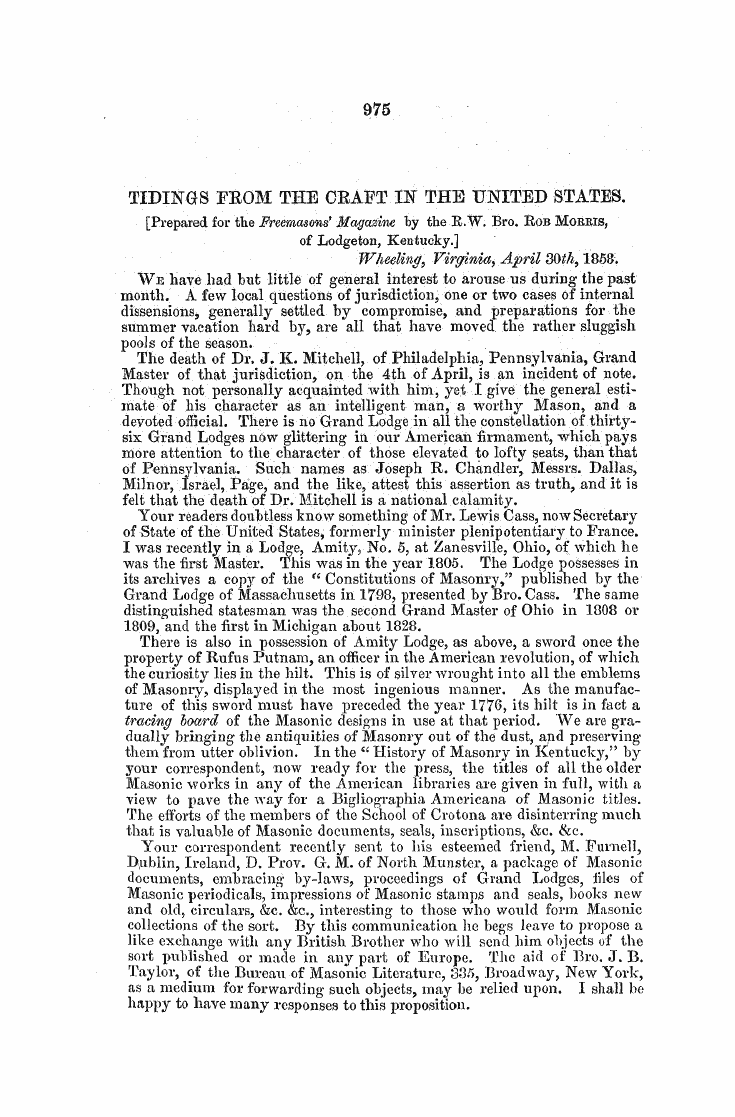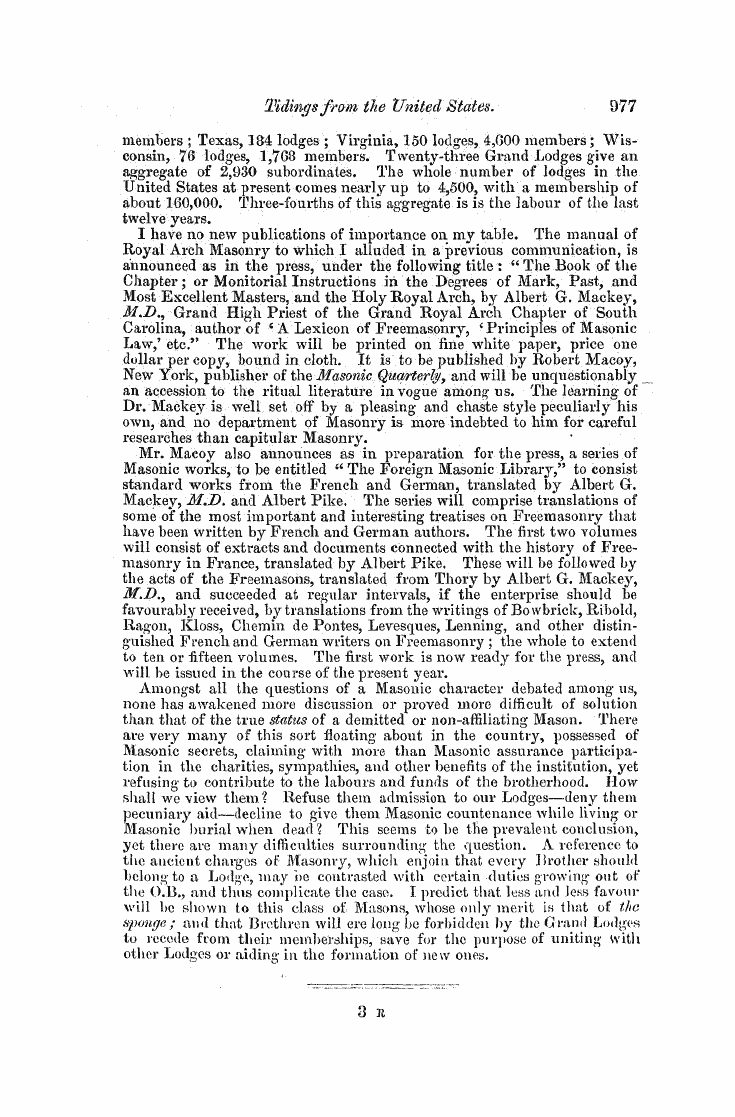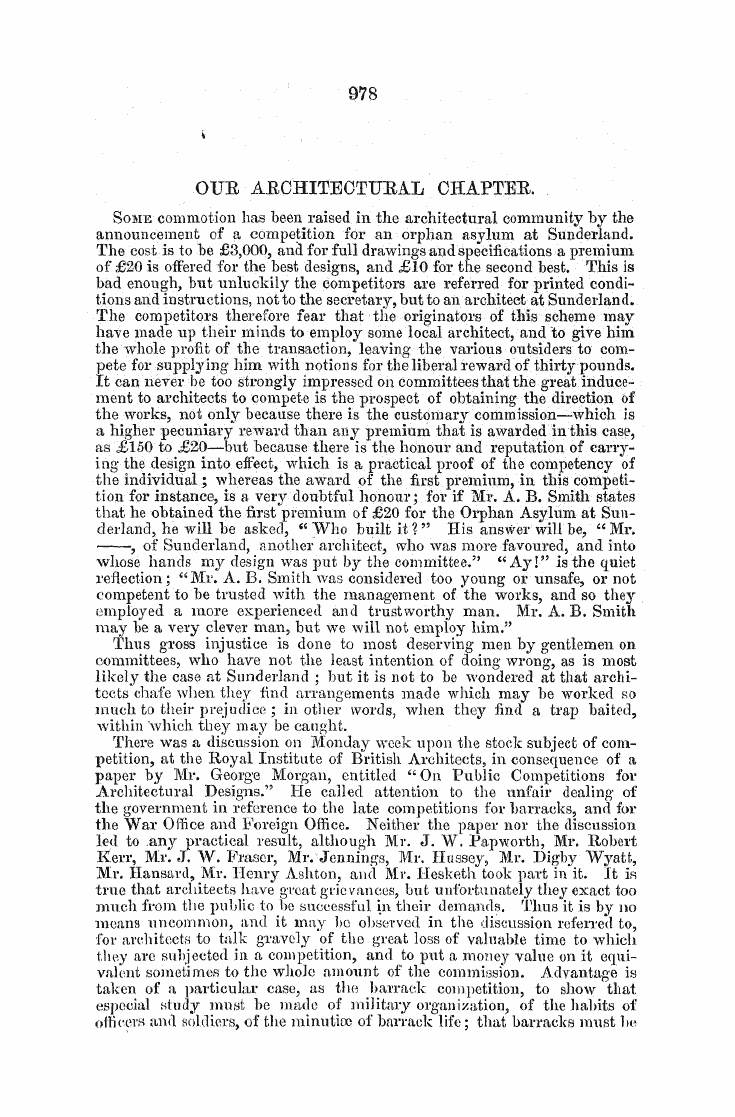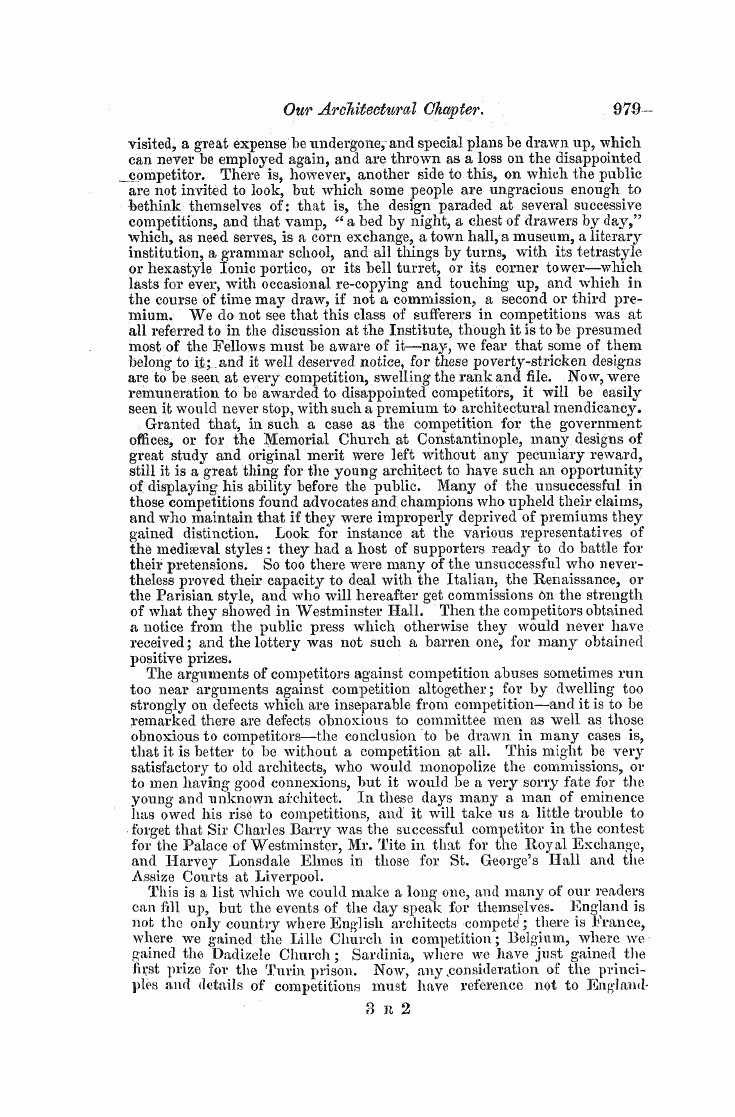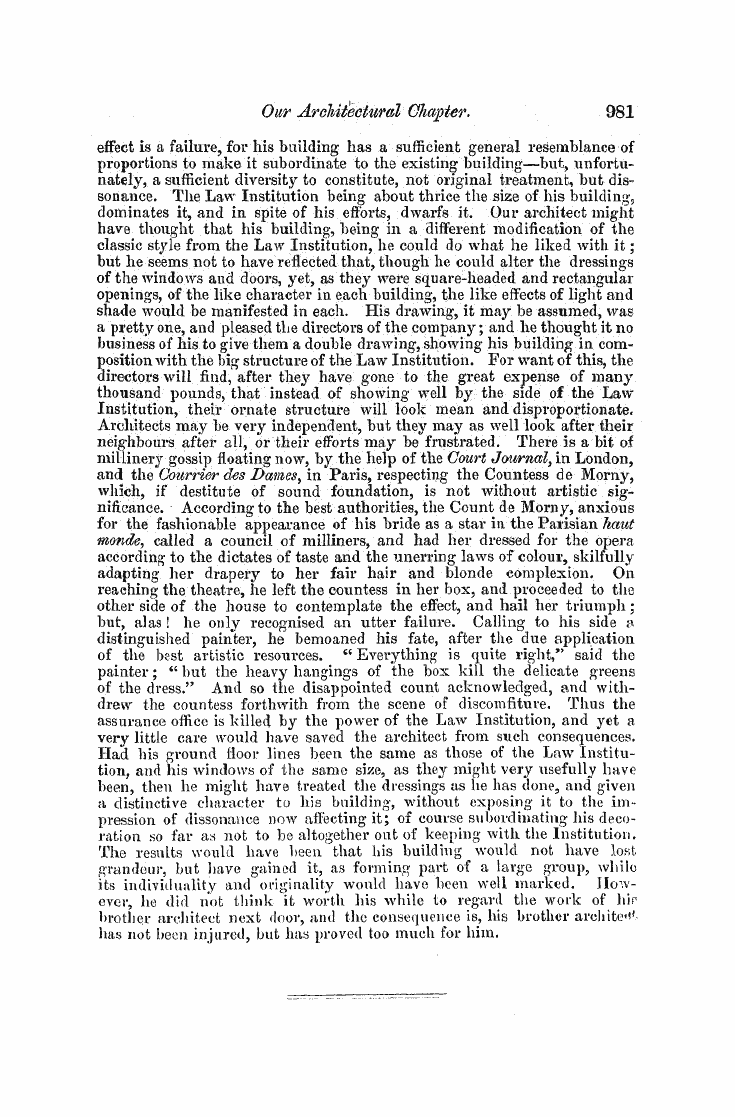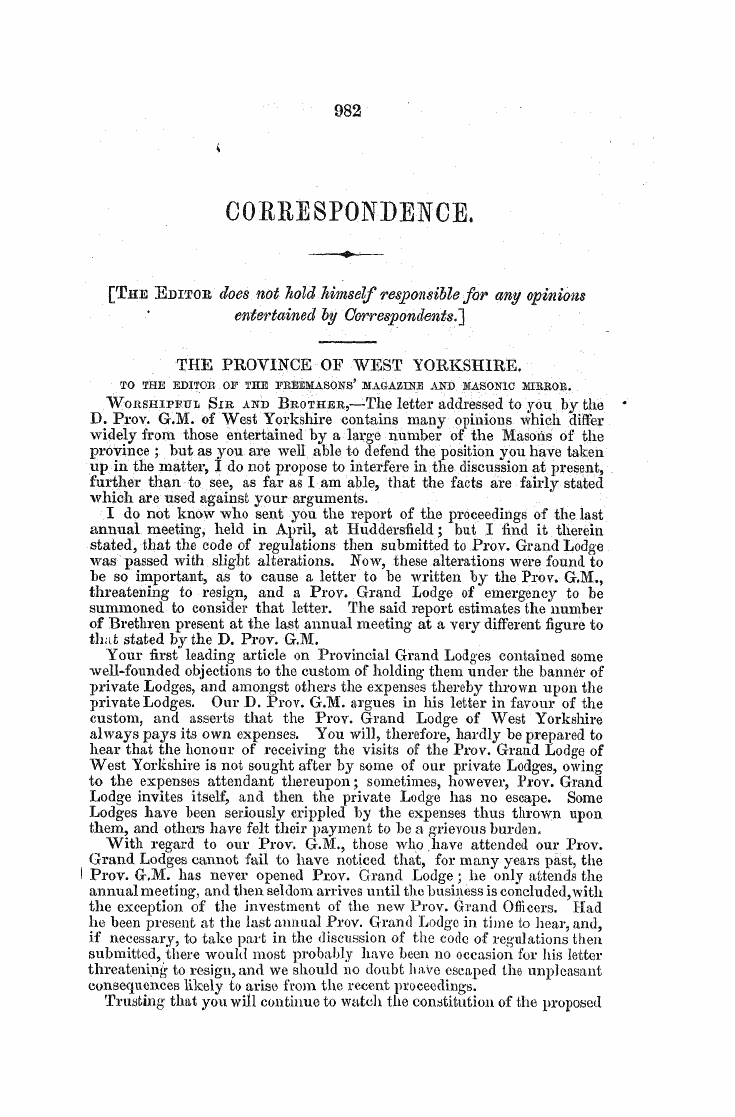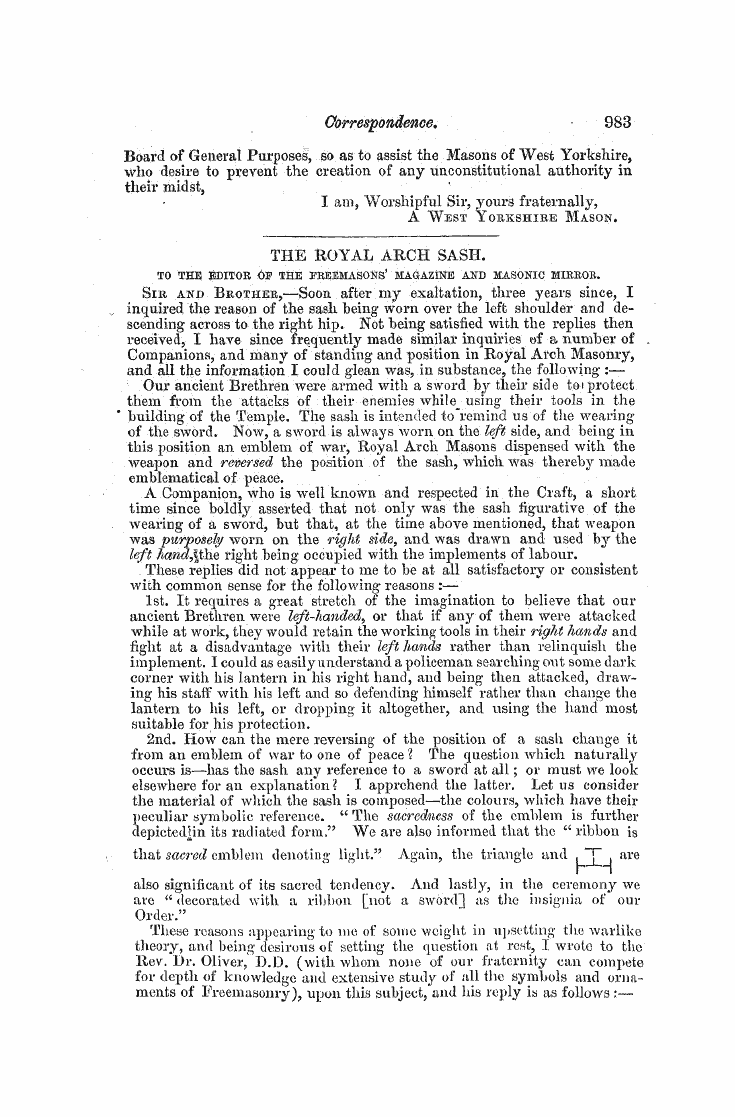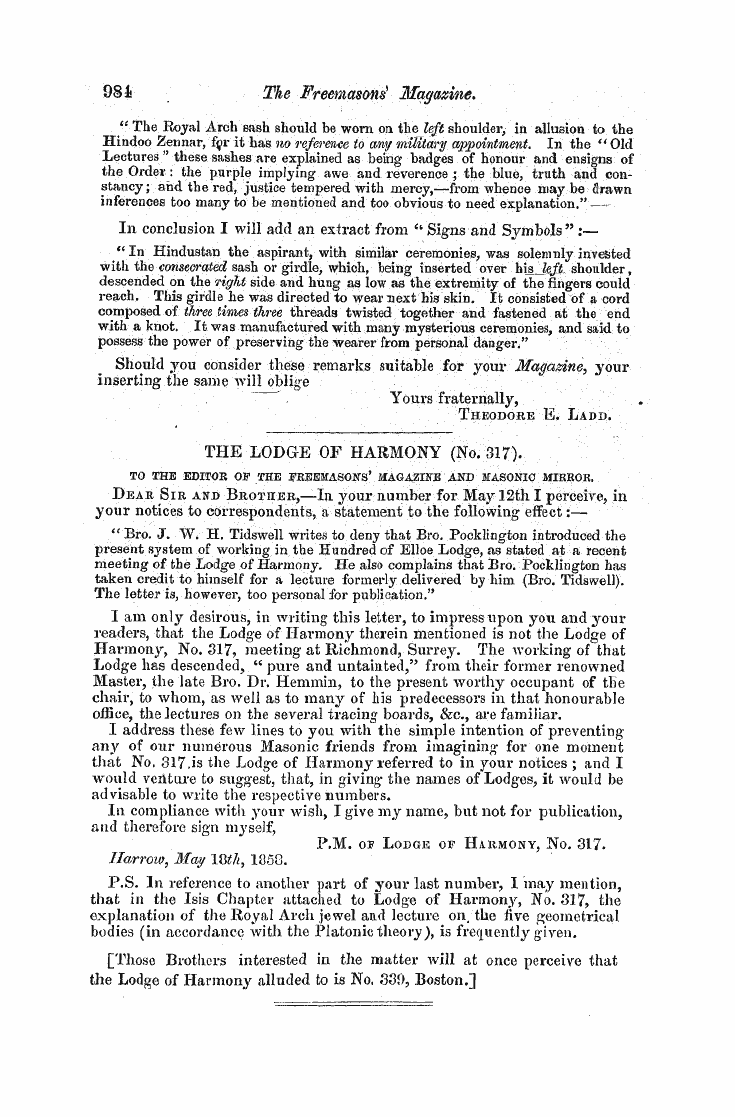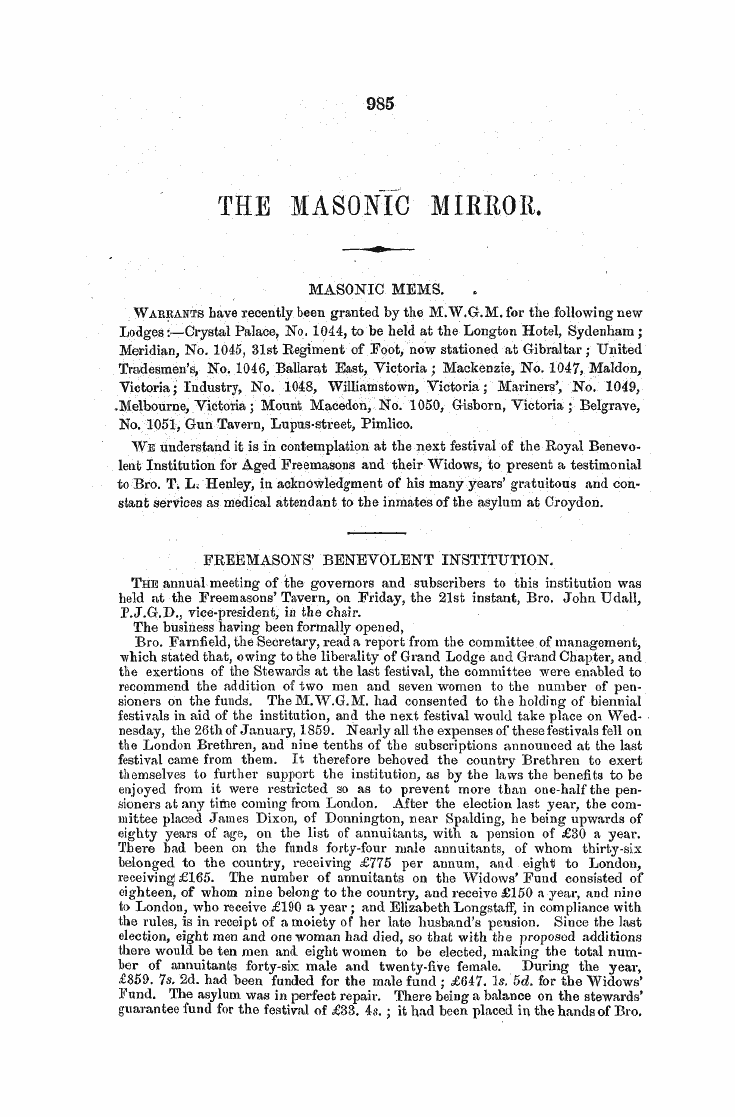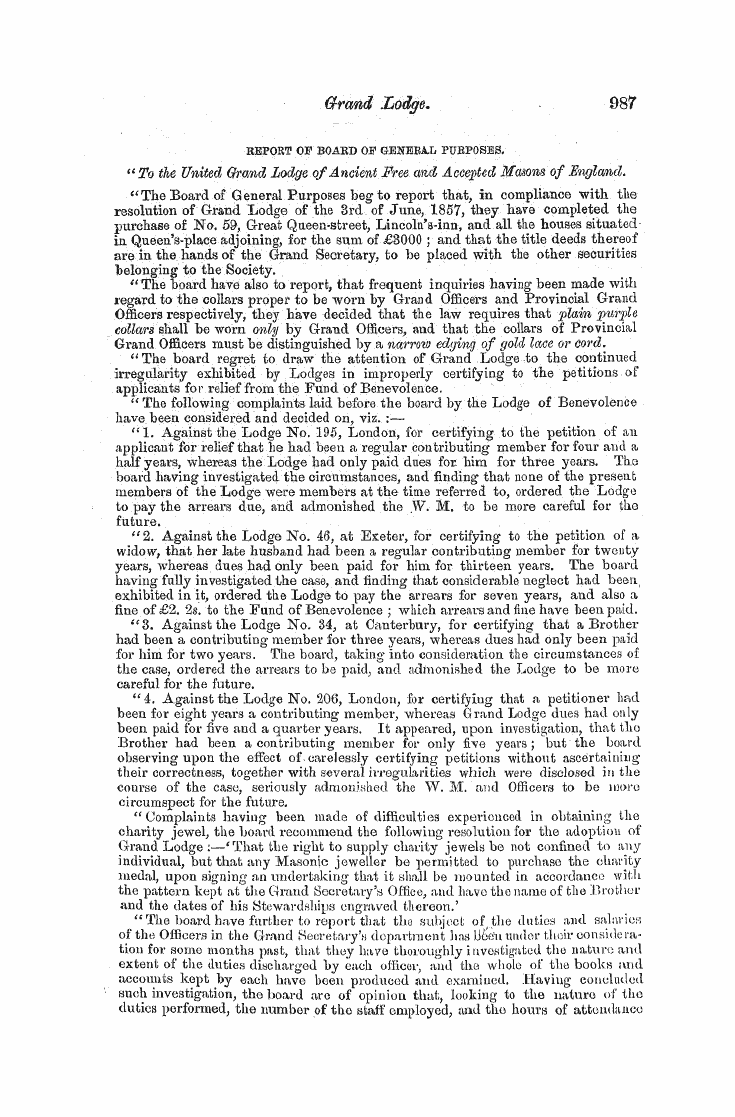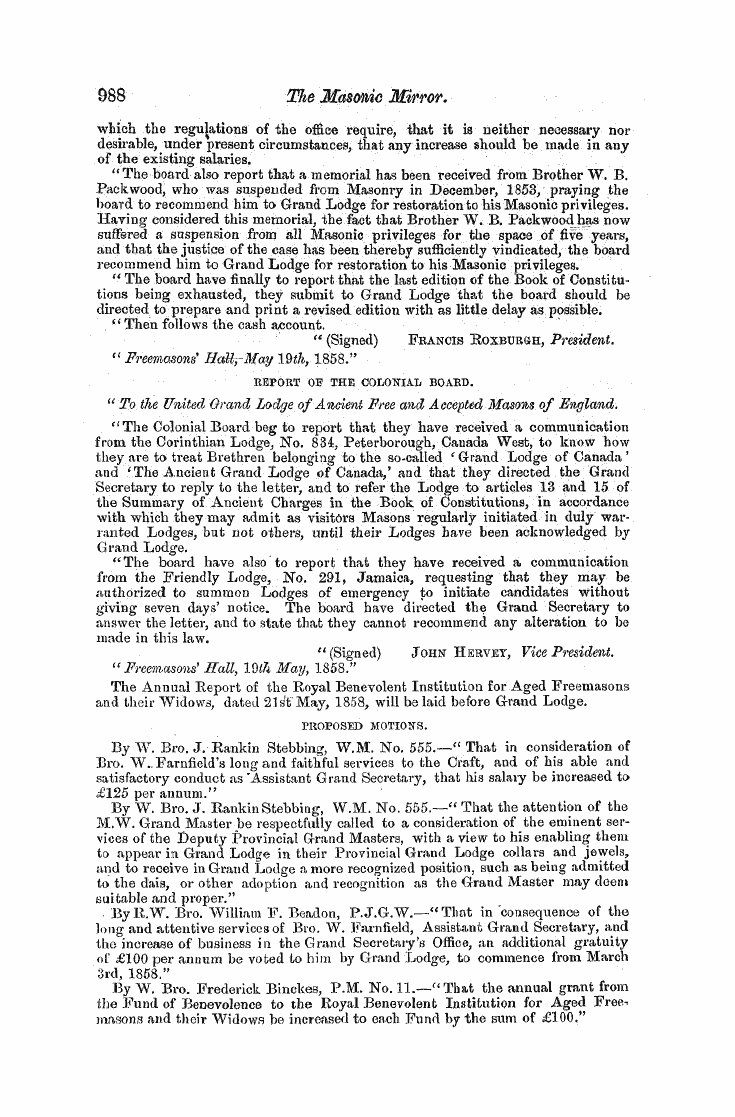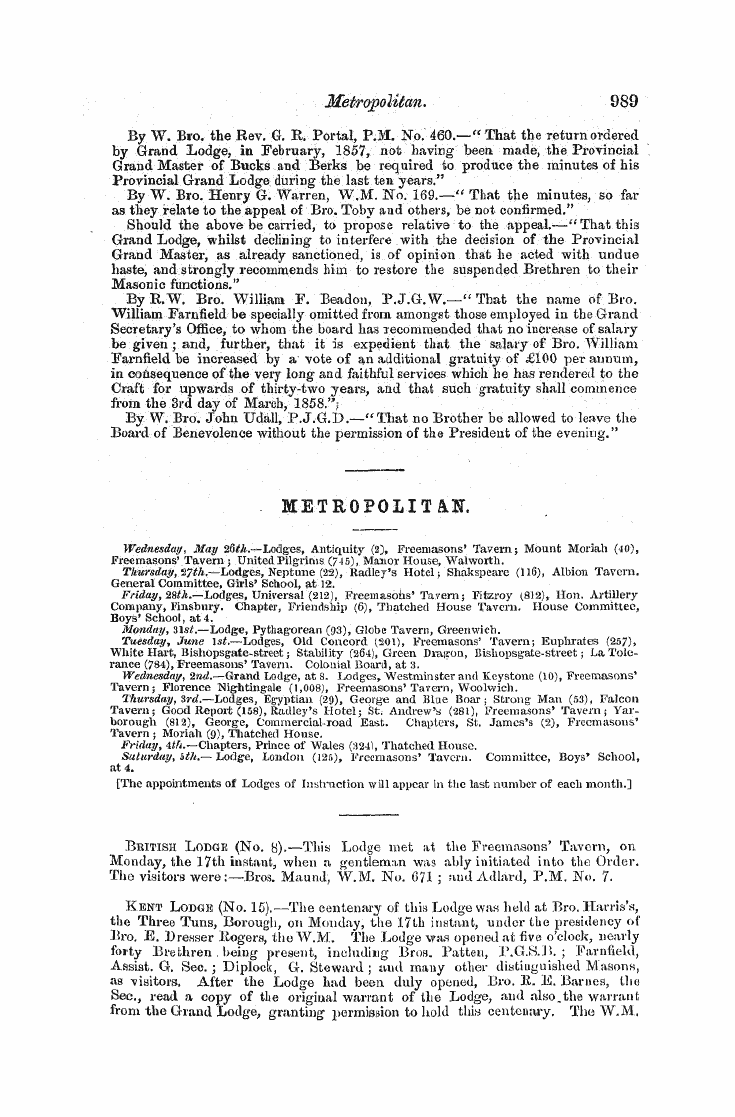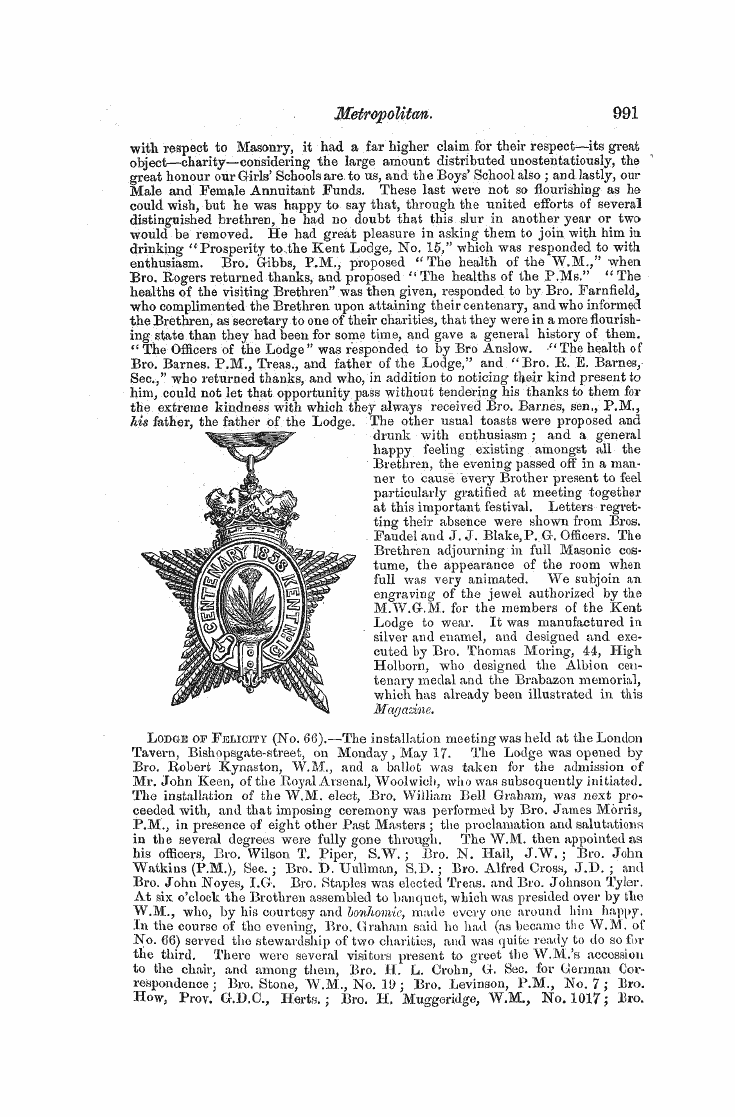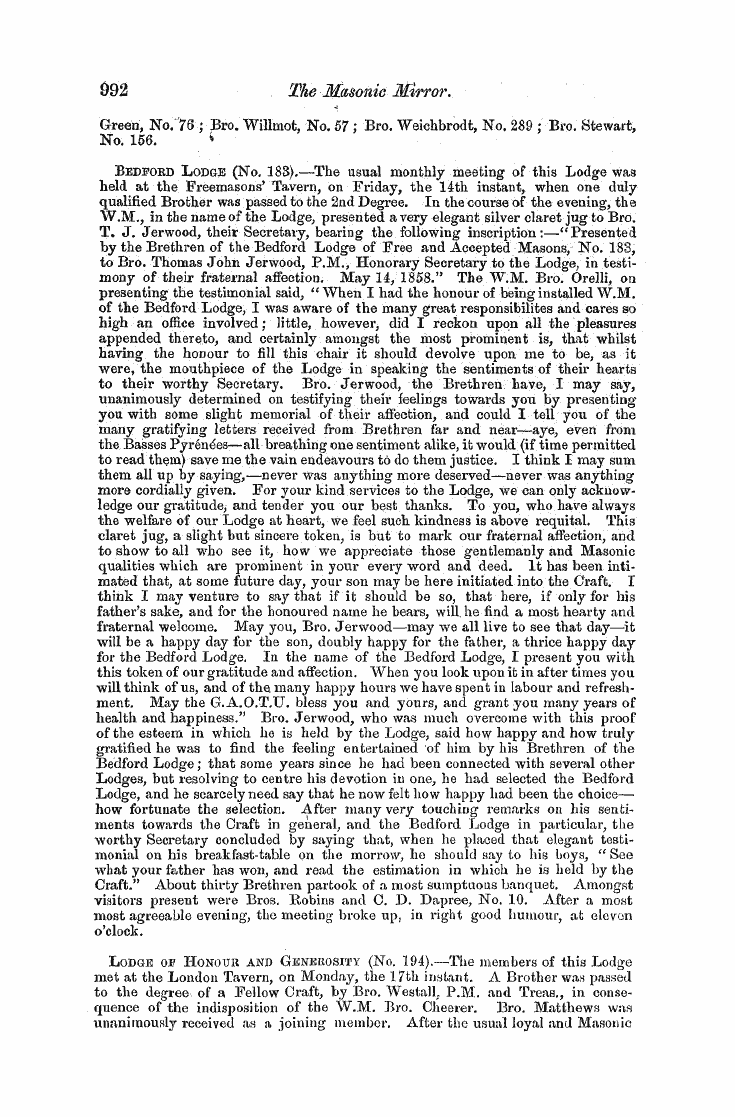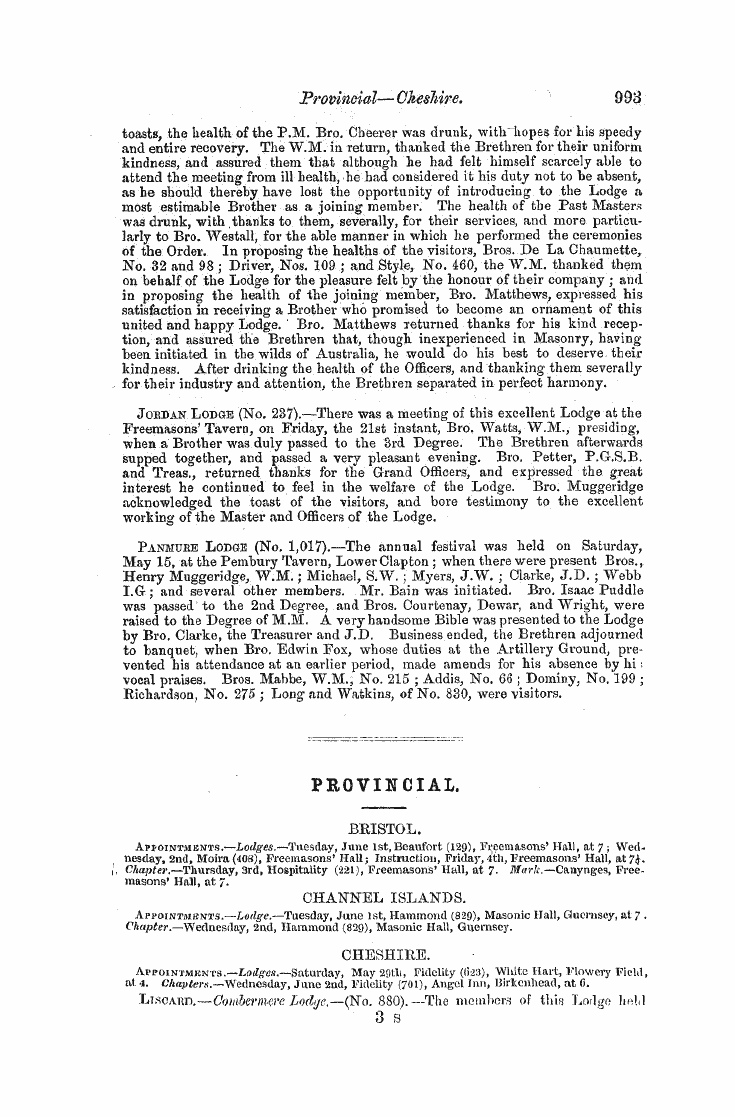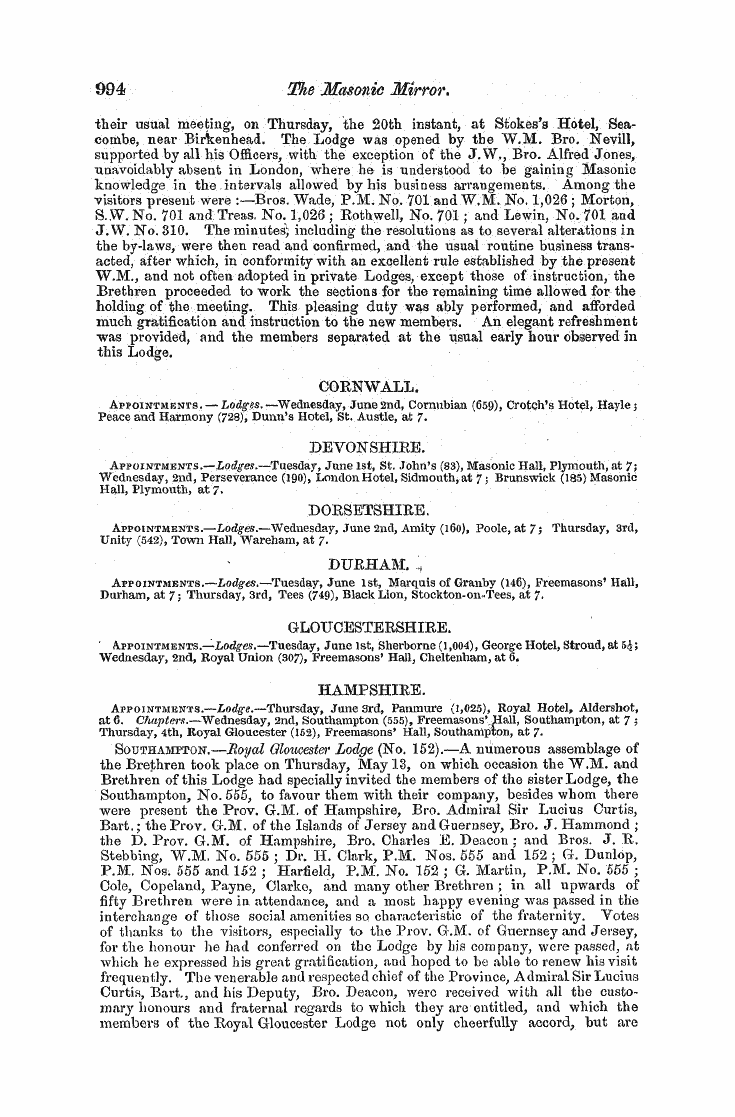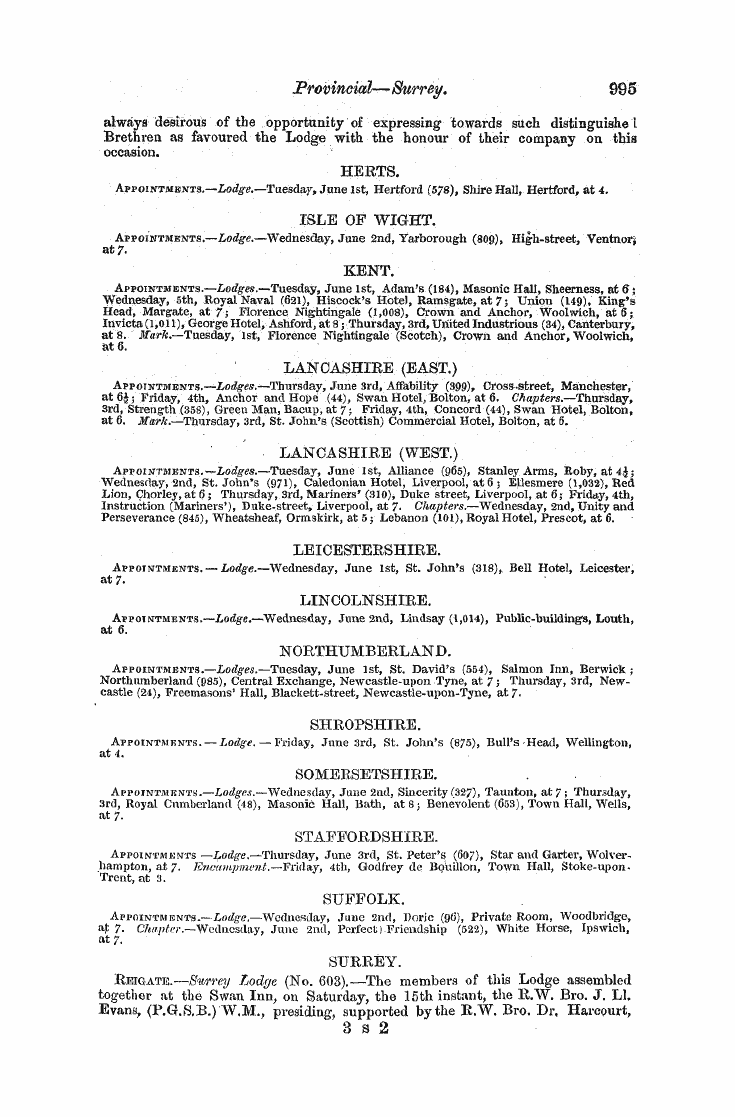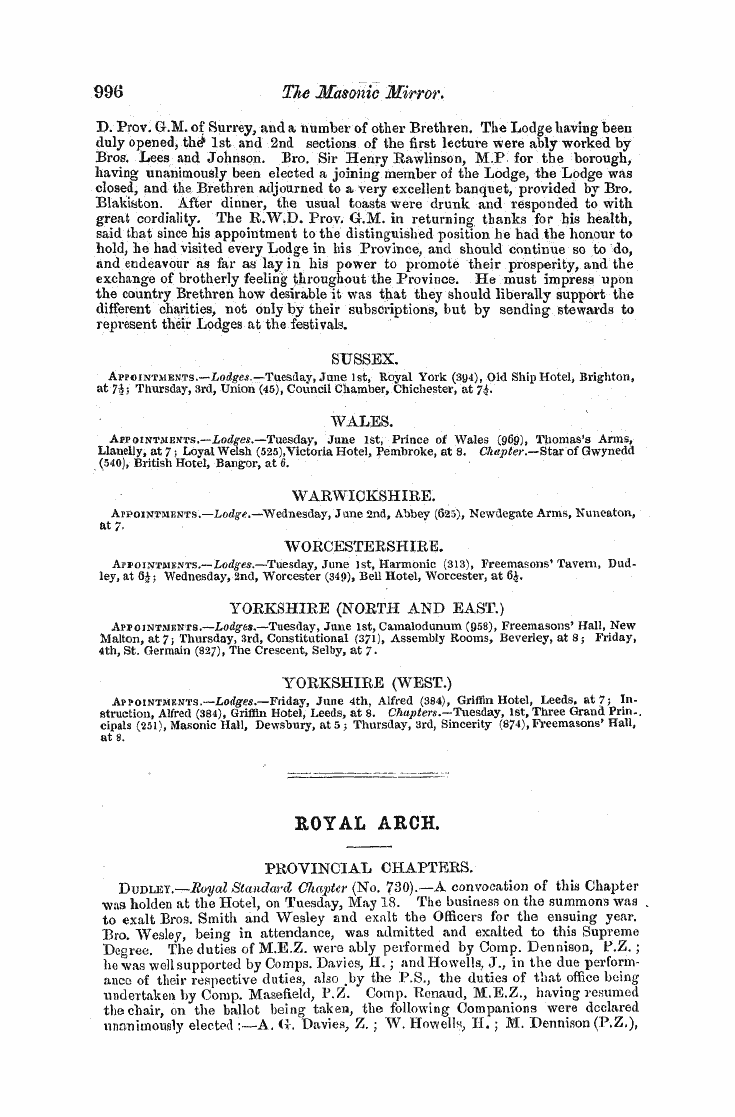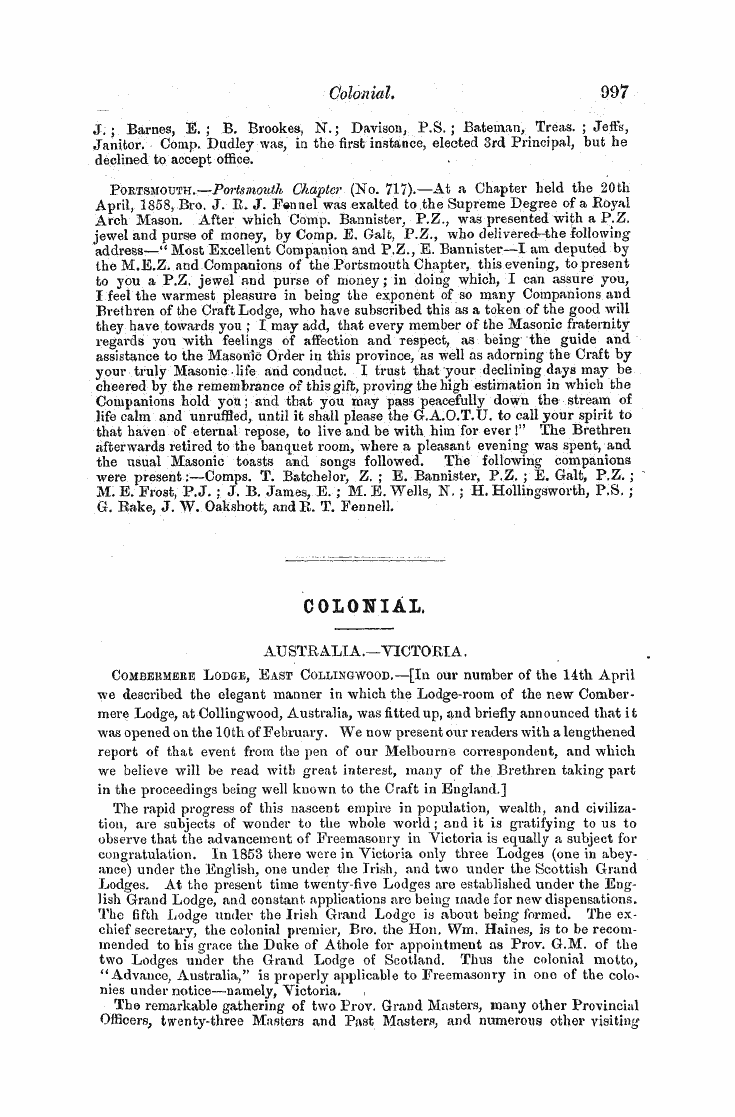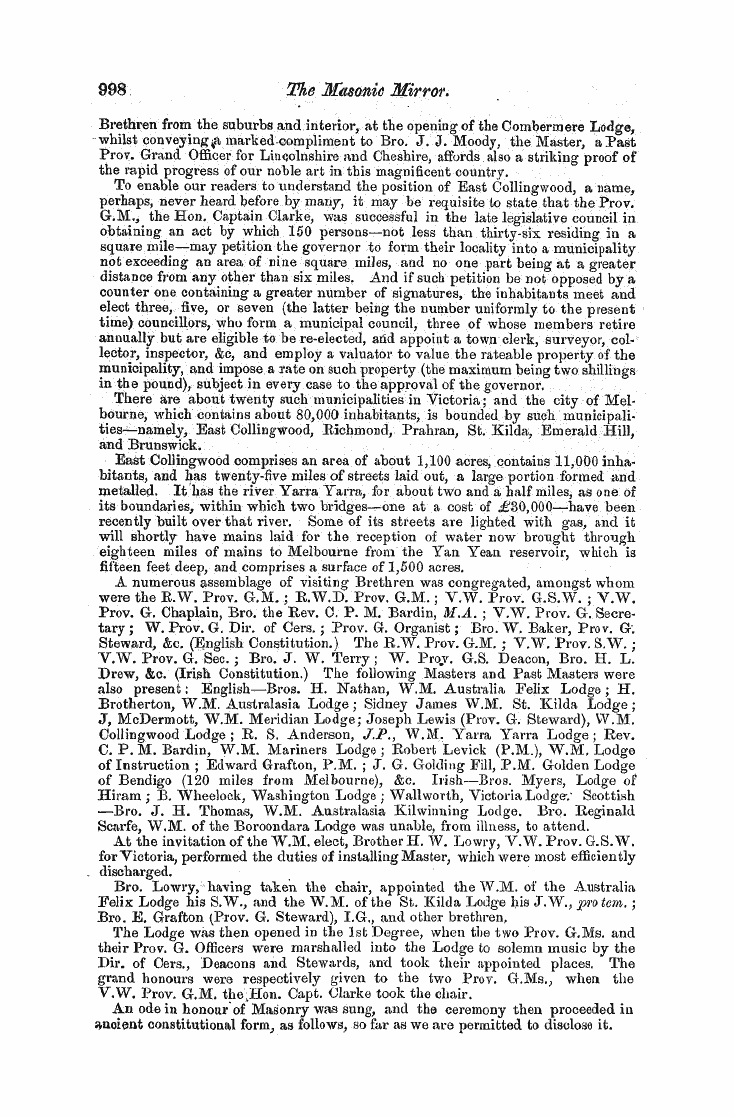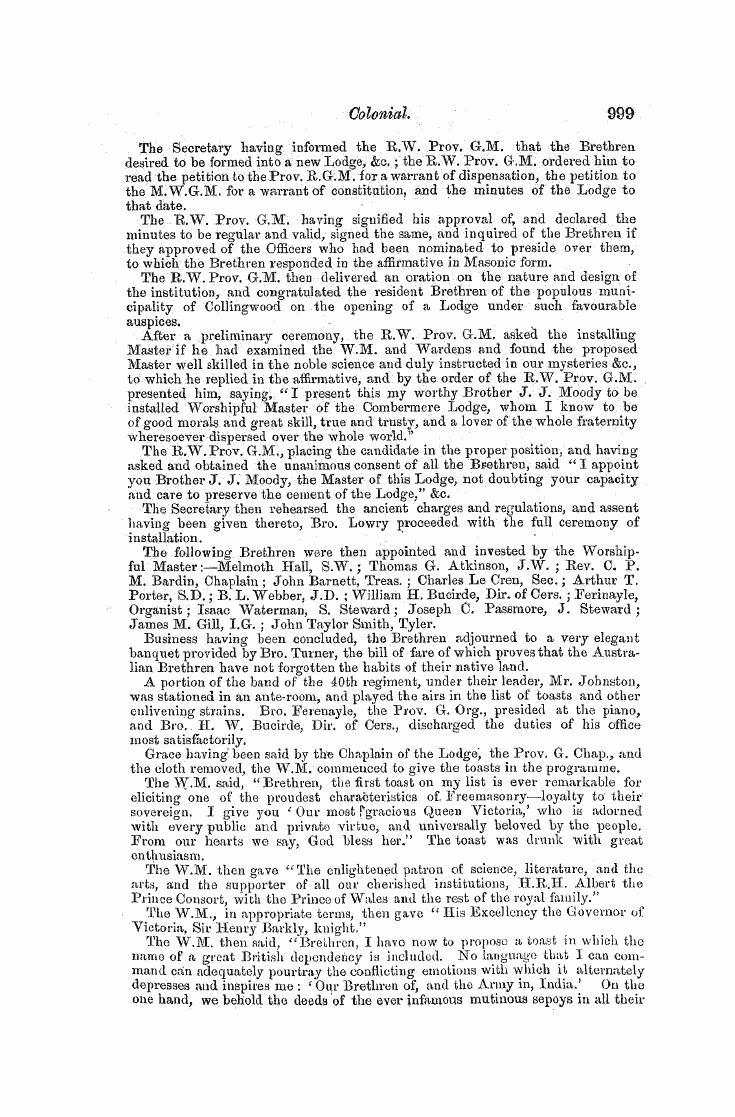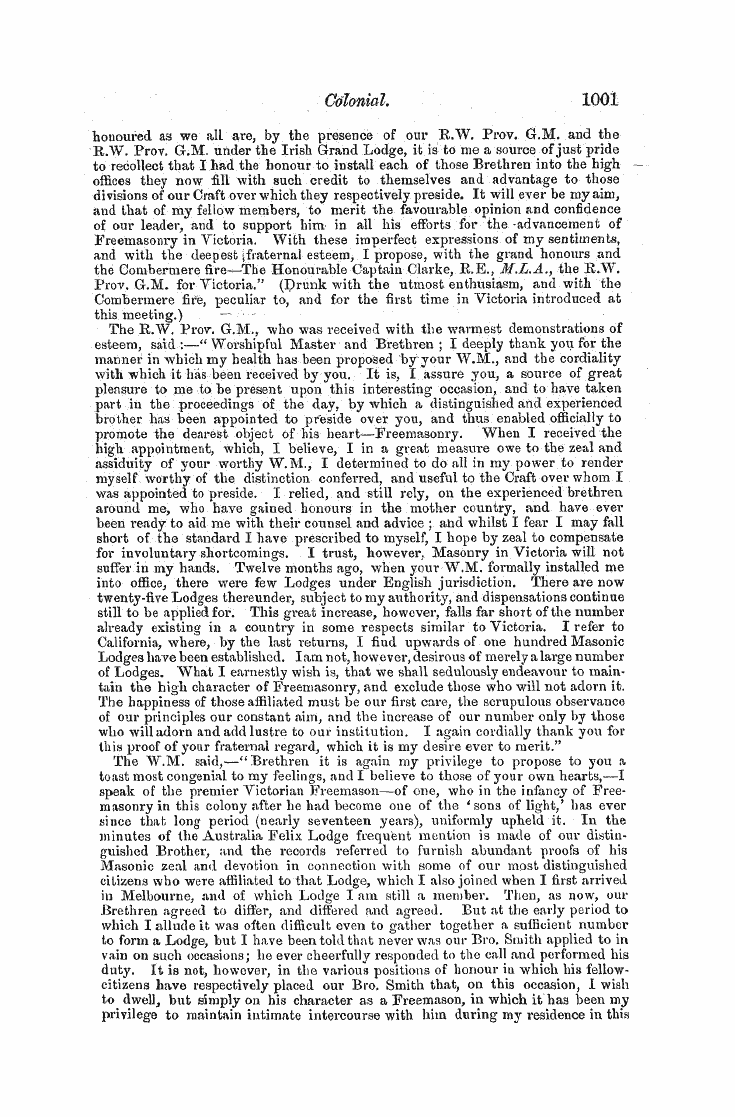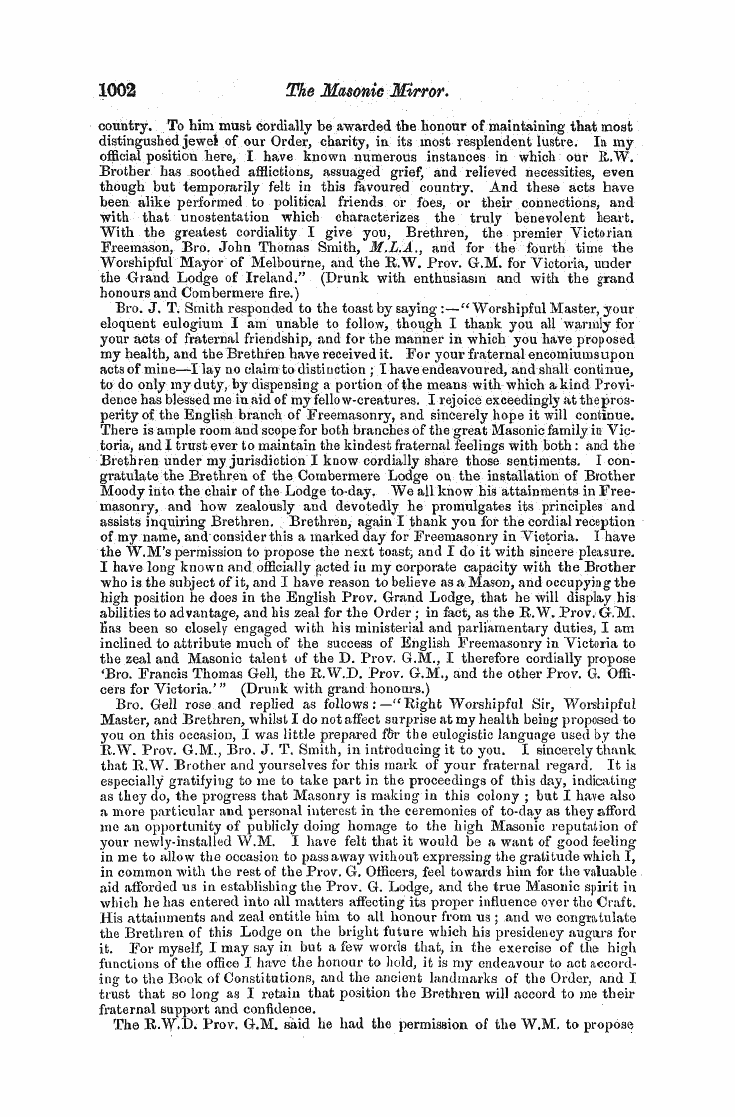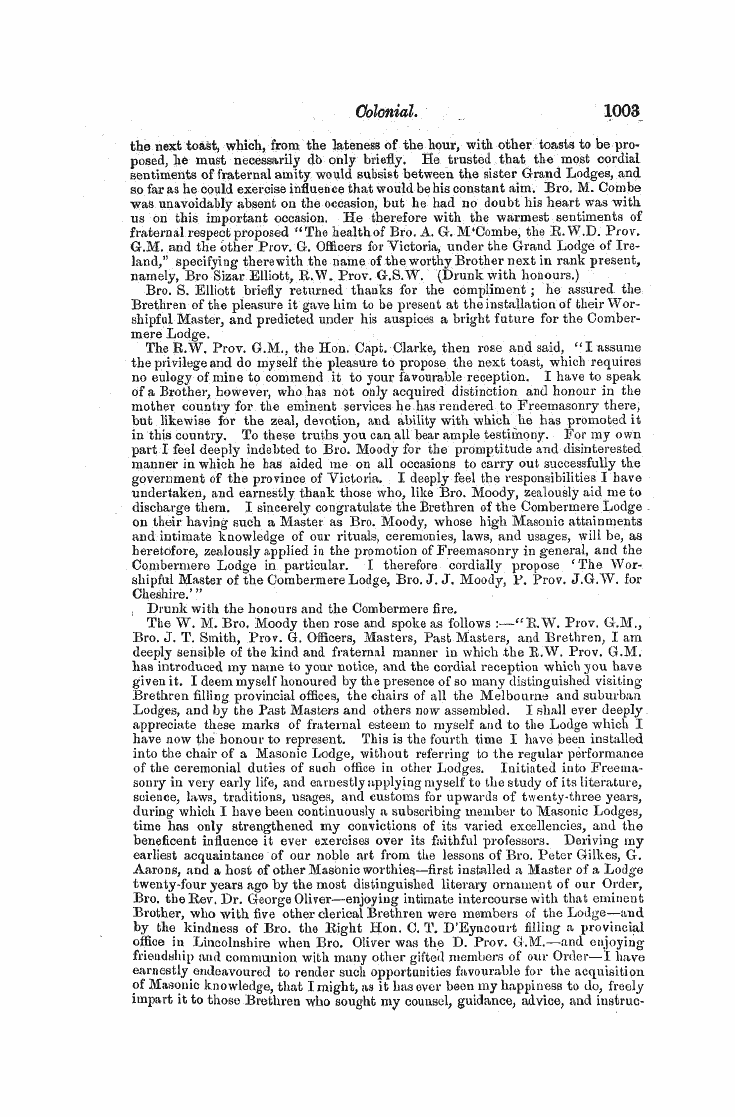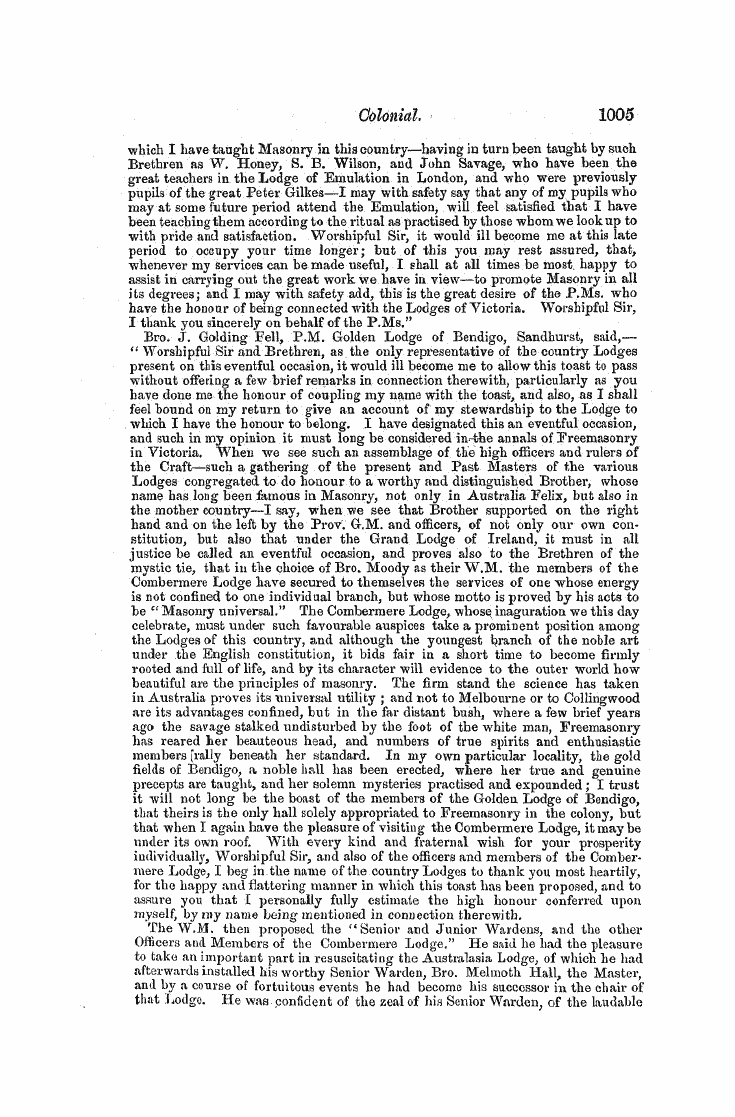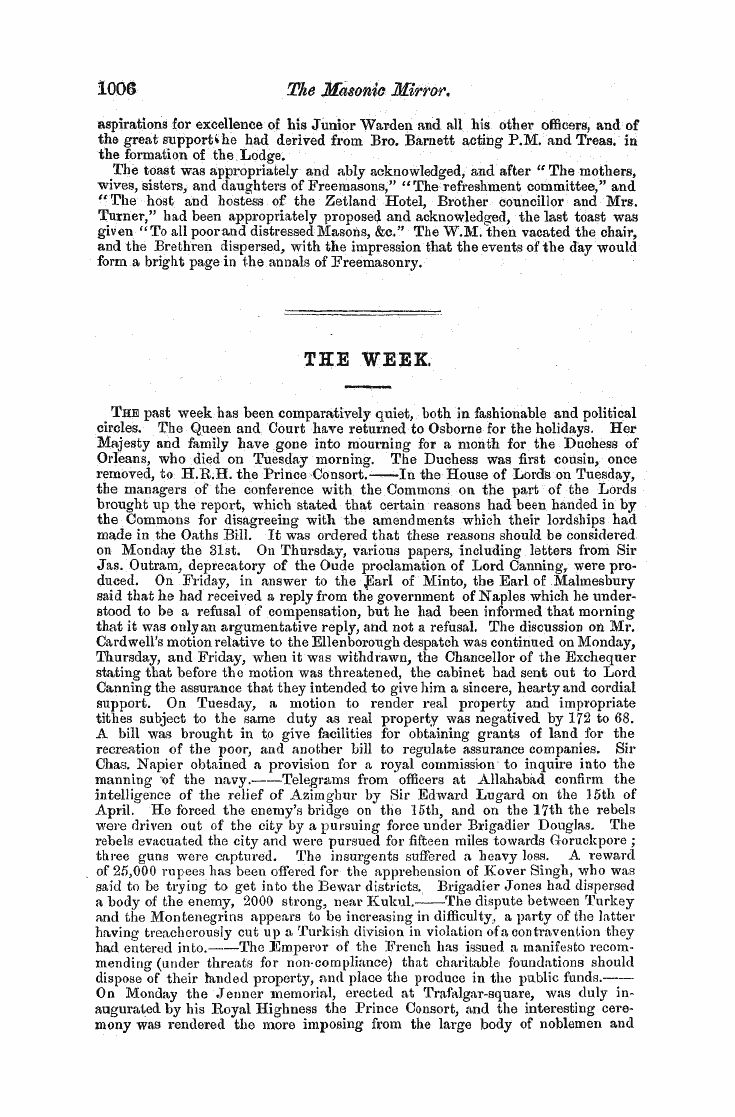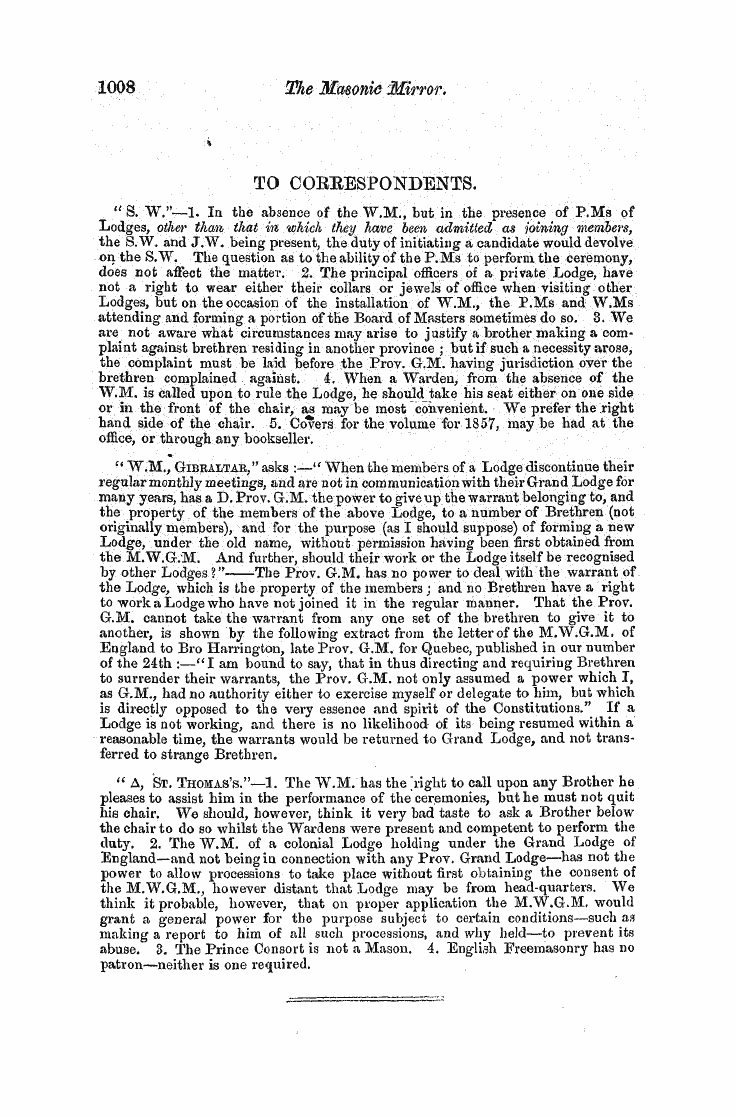Note: This text has been automatically extracted via Optical Character Recognition (OCR) software.
Mark Masonry
h 6 most acceptable and valuable . As regarded the beautiful degree in which they had just been engaged , he must express his opinion that if it were not restored to its proper place in the system of English Masonry , it would be even better to substitute it for the the E . G . degree , which was meagre and inferior to it it in every respect , Bro . Smith concluded by again thanking the Lodge for the kind manner in which they had been received , and hoped that continued
success might attend its meetings and crown it with permanent stability . Bro . Joseph John Evans , after some complimentary allusions to the R . W . M . on the en ^ ctiveness of ] the ceremony , adverted to the remarks which had fallen from Bro . Smith , and which he said were quite in unison with his own impressions of Mark Masonry . Hehad been a Mark Mason for upwards of fifteen years , and expressed advisedly his conviction as an old P . M . and P . Z ., that the Mark degree was alone calculated to explain what we had , and to fill up the '" gap "which so notoriously
existed in the present recognized degrees . He had felt oonsiderahle pleasure that evening in assisting in the ceremonial under such able presidency , and was glad to hear ofthe probable extension of the degree elsewhere by the aid of the Brethren who were then present . He trusted they would carry away with them some compensation -for the fervency and zeal which had brought them so far , and he hoped the issue of their journey would be as one not taken in vain , or as if they had " brought their buckets to an empty w ^ ll . " However that might b the Bristol Brethren must ever feel a warm and fraternal interest in their future proceedings . The R . W . M . having put the usual interrogatories , which met with the accustomed responses , the Lodge was closed in complete harmony at six p . m .
America
AMERICA
GRAND COMMANDERY OF OHIO , Address of the Grand Master of KnigJits Templar in the United States to the Grand Commandery of Ohio . { Concluded from p . 813 . ) The striking similarity of the new form of government with that of the ancient Knights Templar , will appear manifest , by adverting to the original and most ancient history of our Order .
KNIGHTS TEMPLAR
Hugh De Payens , and Bishop ( afterwards Saint ) Aldemar , with seven others , in 1118 first foundedthe Order at Jerusalem , and took for themselves the humble but g lorious name of " Poor fellow-soldiers of Jesus Christ . " Their great and holy mission , of protecting weary Christian pilgrims against the Saracen and infidel , of dispensing charity , feeding the hungry , clothing the naked , and binding up the wounds of the afflicted , of defending innocent maidens , destitute widows , helpless orphans , and the Christian religion , it is not my purpose to enlarge upon .
They were poor , virtuous , devoted and voiv-abiding Christians . Soon their merits became so conspicuous that they had assigned them quarters in the Temple , and from thence were known as Knights of the Temple , or Knights Templar . As is well known to all who have read the history of our Order , they became renowned throughout Europe , as well as in the East , for their valour and heroic deeds . Their government in their own peculiar form , was over all their members , in whatever civil government they may have lived . Theirs , under Providence , was
from the beginning a peculiar institution . It originated with the nine I have mentioned . Hugh de Payens was the first Grand Master and head of the Order . The first subordinate established on the continent was a Preceptory , also called a Commandery , and when established , consisted of nine worthy Knights of the Order ( and hence the origin of our rule to require nine to form or open a Commandery ) . After that ; as their fame , numbers and power increased , subordinates were
Note: This text has been automatically extracted via Optical Character Recognition (OCR) software.
Mark Masonry
h 6 most acceptable and valuable . As regarded the beautiful degree in which they had just been engaged , he must express his opinion that if it were not restored to its proper place in the system of English Masonry , it would be even better to substitute it for the the E . G . degree , which was meagre and inferior to it it in every respect , Bro . Smith concluded by again thanking the Lodge for the kind manner in which they had been received , and hoped that continued
success might attend its meetings and crown it with permanent stability . Bro . Joseph John Evans , after some complimentary allusions to the R . W . M . on the en ^ ctiveness of ] the ceremony , adverted to the remarks which had fallen from Bro . Smith , and which he said were quite in unison with his own impressions of Mark Masonry . Hehad been a Mark Mason for upwards of fifteen years , and expressed advisedly his conviction as an old P . M . and P . Z ., that the Mark degree was alone calculated to explain what we had , and to fill up the '" gap "which so notoriously
existed in the present recognized degrees . He had felt oonsiderahle pleasure that evening in assisting in the ceremonial under such able presidency , and was glad to hear ofthe probable extension of the degree elsewhere by the aid of the Brethren who were then present . He trusted they would carry away with them some compensation -for the fervency and zeal which had brought them so far , and he hoped the issue of their journey would be as one not taken in vain , or as if they had " brought their buckets to an empty w ^ ll . " However that might b the Bristol Brethren must ever feel a warm and fraternal interest in their future proceedings . The R . W . M . having put the usual interrogatories , which met with the accustomed responses , the Lodge was closed in complete harmony at six p . m .
America
AMERICA
GRAND COMMANDERY OF OHIO , Address of the Grand Master of KnigJits Templar in the United States to the Grand Commandery of Ohio . { Concluded from p . 813 . ) The striking similarity of the new form of government with that of the ancient Knights Templar , will appear manifest , by adverting to the original and most ancient history of our Order .
KNIGHTS TEMPLAR
Hugh De Payens , and Bishop ( afterwards Saint ) Aldemar , with seven others , in 1118 first foundedthe Order at Jerusalem , and took for themselves the humble but g lorious name of " Poor fellow-soldiers of Jesus Christ . " Their great and holy mission , of protecting weary Christian pilgrims against the Saracen and infidel , of dispensing charity , feeding the hungry , clothing the naked , and binding up the wounds of the afflicted , of defending innocent maidens , destitute widows , helpless orphans , and the Christian religion , it is not my purpose to enlarge upon .
They were poor , virtuous , devoted and voiv-abiding Christians . Soon their merits became so conspicuous that they had assigned them quarters in the Temple , and from thence were known as Knights of the Temple , or Knights Templar . As is well known to all who have read the history of our Order , they became renowned throughout Europe , as well as in the East , for their valour and heroic deeds . Their government in their own peculiar form , was over all their members , in whatever civil government they may have lived . Theirs , under Providence , was
from the beginning a peculiar institution . It originated with the nine I have mentioned . Hugh de Payens was the first Grand Master and head of the Order . The first subordinate established on the continent was a Preceptory , also called a Commandery , and when established , consisted of nine worthy Knights of the Order ( and hence the origin of our rule to require nine to form or open a Commandery ) . After that ; as their fame , numbers and power increased , subordinates were






















